

The Ultimate Guide: How to Crew on a Sailboat for Beginners
Alex Morgan
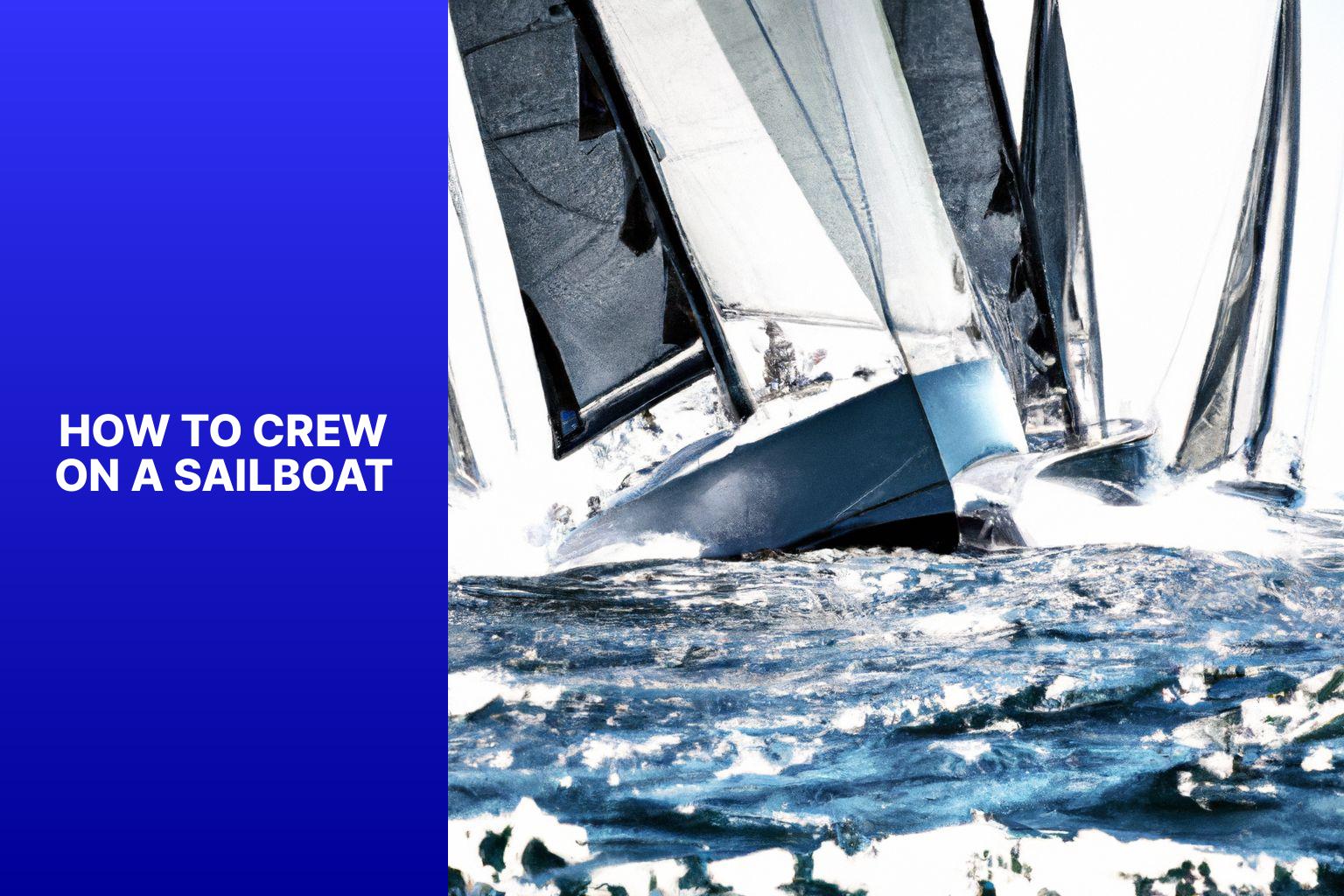
Crewing on a sailboat is an exhilarating experience that allows you to harness the power of the wind and navigate the open waters. Whether you are a seasoned sailor or a beginner looking to learn the ropes, understanding the fundamentals of crewing on a sailboat is essential for a successful voyage.
In this article, we will explore the different aspects of crewing on a sailboat, including the types of sailboats, roles, and responsibilities of crew members, essential skills and qualities, safety procedures, knot tying, sail trim, rigging, and navigation. By the end of this article, you will have a comprehensive understanding of what it takes to be a valuable crew member on a sailboat adventure.
Before we delve into the details, let’s start with an introduction to crewing on a sailboat. We will then discuss the different types of sailboats, such as monohulls and catamarans, and the distinct features and characteristics of each. Understanding the type of sailboat you will be crewing on is crucial for mastering the specific skills required on board.
Next, we will outline the various roles and responsibilities of crew members. From the skipper who leads the crew to the helm , trimmer , bow crew , mast crew , and navigator , each position plays a vital role in ensuring the smooth operation and maneuvering of the sailboat.
To be an effective crew member, certain skills and qualities are essential. We will discuss the importance of sailing knowledge and experience, teamwork and communication, physical fitness, and problem-solving skills. These attributes will contribute to a harmonious and efficient crew dynamic.
Safety is of utmost importance while at sea. We will cover the basic safety equipment that should be on board, man overboard drills for emergency situations, first aid and emergency response, as well as weather awareness and preparedness.
Knot tying and line handling skills are essential for sailboat crew members. We will introduce you to some essential knots like the bowline knot , clove hitch , and cleat hitch , as well as teach you how to properly coil and tie lines.
Understanding sail trim and rigging is another crucial aspect of crewing on a sailboat. We will explore how to control sail shape, adjust halyards and sheets, and tune the rigging to optimize performance and efficiency.
We will touch upon navigation and chart reading, including basic nautical charts, compass usage, and dead reckoning. These skills will enable you to navigate your course with confidence and precision.
By the end of this article, you will be equipped with the knowledge and skills necessary to enjoy the adventure of crewing on a sailboat. So, let’s set sail and embark on this exciting journey together.
Key takeaway:
- Crewing on a sailboat requires teamwork and communication: Successful crew members must possess strong teamwork and communication skills to effectively work together on a sailboat.
- Safety is paramount: Being aware of basic safety procedures, emergency response, and weather conditions is essential for maintaining a safe environment while crewing on a sailboat.
- Knowledge of sail trim and rigging is crucial: Understanding how to control sail shape, adjust halyards and sheets, and tune the rigging is key to optimizing performance and efficiency on a sailboat.
Types of Sailboats
When it comes to hitting the waves, understanding the different types of sailboats is key . In this section, we’ll uncover two distinct categories: monohulls and catamarans . Get ready to dive into the thrilling world of sailboat crewing as we explore the characteristics and unique features of each type. So whether you’re a seasoned sailor or a curious novice, let’s embark on a voyage of discovery and unravel the wonders of these magnificent vessels.
1. Monohulls
Monohulls, also known as sailboats with a single hull, are highly stable vessels that are capable of handling rough seas. This characteristic is what makes them immensely popular for both offshore cruising and racing activities. Monohulls come in a range of sizes, spanning from small day-sailers to colossal ocean-going yachts. The ingenious design of monohulls enables easy maneuverability and enhanced ability to sail close to the wind. For added stability, monohulls are equipped with a keel beneath the hull.
These sailboats are furnished with a variety of sails suited for diverse sailing conditions and speeds. These include the main sail, genoa, jib, and spinnaker. In order to effectively handle the sails, navigation, and steering of the boat, a crew is required. In terms of interior space, monohulls boast a comfortable and spacious layout, ideal for lengthier voyages. Their versatility is another commendable aspect as they can be utilized for day trips as well as extended cruising.
2. Catamarans
Catamarans, with their wide beam and twin hulls, are well-known for their stability and spaciousness. These characteristics make them a comfortable choice for individuals prone to seasickness .
Not only that, catamarans are generally faster than monohulls due to the reduced drag provided by their twin hulls.
When it comes to space, catamarans offer larger cabins, lounges, and deck areas, ensuring ample living and storage space.
Their shallow draft enables them to access shallow anchorages and explore areas that are out of reach for monohulls.
Choosing between a catamaran and a monohull depends on personal preferences and sailing goals.
If stability, spaciousness, and comfort are top priorities, a catamaran may be the ideal choice.
On the other hand, if speed, agility, and the ability to point higher into the wind are prioritized, a monohull may be more suitable.
Roles and Responsibilities of Crew Members
Sailing the seas is a beautiful adventure, but it takes a well-coordinated crew to navigate the unpredictable waters. In this section, we’ll dive into the essential roles and responsibilities of each crew member on a sailboat. From the knowledgeable skipper to the skilled helm , the meticulous trimmer to the agile bow and mast crew, and the sharp-eyed navigator , each position plays a vital role in ensuring a smooth and successful voyage. So, grab your life jacket and let’s set sail into the world of crewing on a sailboat.
The role of a skipper on a sailboat is crucial for the overall operation and safety of the crew and vessel. The skipper, also known as the boat captain, is responsible for making navigational decisions, ensuring the boat is operated safely and efficiently, and overseeing the activities of the crew.
One of the key responsibilities of a skipper is making navigational decisions based on their strong knowledge of seamanship and navigation. They must have excellent leadership and decision-making skills to set the course and determine sail configurations. Additionally, effective communication and teamwork abilities are essential in managing and coordinating the crew.
The skipper also plays a vital role in ensuring safety protocols are followed and has the problem-solving skills and ability to handle emergencies. They monitor weather conditions and adjust plans accordingly, relying on their strong understanding of meteorology and weather patterns.
For aspiring skippers, it is recommended to continuously learn and improve their sailing skills and knowledge. Participating in races or joining sailing clubs can provide valuable experience and opportunities to refine their leadership abilities. It is also important to stay up-to-date with advancements in technology and equipment to enhance their proficiency in managing the boat and crew.
Remember, becoming an effective skipper takes time and experience. Embrace a lifelong learning mindset and commit to ongoing growth and development to excel in this important role on a sailboat.
The helm is responsible for steering and controlling the direction of a sailboat. To effectively helm a sailboat, follow these steps:
1. Take your position at the helm and familiarize yourself with the steering mechanism.
2. Maintain a steady grip on the tiller or wheel and balance your stance.
3. Monitor the wind direction and adjust the sails accordingly for optimal performance.
4. Coordinate maneuvers and navigate obstacles by communicating with the skipper and crew.
5. React promptly to changes in wind speed and direction to maintain control of the boat.
6. Keep a lookout for other vessels, obstacles, or potential hazards in the water.
7. Steer the boat smoothly and make minor course adjustments as needed.
8. Be aware of the boat’s speed, acceleration, and responsiveness to your steering inputs.
To enhance your helm skills, practice regularly in different weather conditions and on various sailboats. Seek feedback from experienced sailors and learn from their insights. Remember, mastering the helm requires sailing knowledge, adaptability, and sharp decision-making skills. Enjoy the adventure of crewing on a sailboat and embrace the learning opportunities it offers.
The trimmer is an essential role on a sailboat. Their primary responsibility is to adjust the sails for optimal performance and efficiency. They achieve this by changing the sail position based on the wind direction and speed. Collaborating closely with the helm, the trimmer ensures the sails are adjusted according to the boat’s course and desired speed. Clear communication between the trimmer and helm is crucial for making quick adjustments.
In addition, the trimmer continuously monitors the sail performance and makes necessary adjustments to maintain optimal speed and efficiency. They also assist in tuning the rigging by adjusting the tension of the mast, shrouds, and stays. This helps improve the sail shape and overall performance of the boat.
During sail changes, the trimmer plays a vital role in hoisting, lowering, and adjusting new sails efficiently. Their expertise in sail trim allows them to minimize any loss of speed or performance during these transitions.
The trimmer needs to have a deep understanding of wind shifts and the ability to anticipate changes in wind direction. This skill allows them to make proactive adjustments to maintain optimal sail trim.
The trimmer is crucial in maximizing sailboat performance. Their expertise in sail trim and ability to quickly adapt to changing conditions are essential for success on the water.
4. Bow Crew
The Bow Crew , also known as the Bow Crew , plays a crucial role in the smooth operation and navigation of a sailboat. This team has a set of key responsibilities and tasks, including the following:
1. Setting and handling the anchor: As part of their duties, the Bow Crew prepares and deploys the anchor when the sailboat reaches its intended anchorage. It is essential that they know how to properly set and secure the anchor to keep the boat in place.
2. Managing the bow line: Another important task for the Bow Crew is handling the bow line, which is used for mooring the boat or securing it to a dock. To accomplish this safely and securely, they need to possess the necessary skills in knot tying and line handling.
3. Assisting with docking maneuvers: During the docking process, the Bow Crew provides assistance with line handling and ensuring that the boat remains a safe distance from the dock to avoid any damage. Effective communication with other crew members is crucial for a smooth and secure docking process.
4. Keeping a lookout: A primary responsibility of the Bow Crew is to keep a vigilant watch for any potential obstacles or hazards in the water, including other boats, buoys, or rocks. Their role is to promptly alert the rest of the crew to ensure safe navigation.
5. Handling sails and line adjustments: As part of their tasks, the Bow Crew assists with handling and adjusting sails, particularly during tacking or gybing. It is important for them to be familiar with the proper techniques for hoisting, lowering, and reefing sails.
Being a member of the Bow Crew requires a keen attention to detail, excellent communication skills, and the ability to work effectively as part of a team. Safety and efficiency are of paramount importance in the performance of these duties.
5. Mast Crew
The role of the mast crew is vital in ensuring the smooth operation and maneuverability of a sailboat. The mast crew plays a significant role in handling and maintaining the sails to optimize the performance of the boat. They are responsible for various tasks, including hoisting and lowering sails as directed by the skipper or helm, ensuring proper alignment and integrity.
The crew members also trim and adjust the sails to achieve the desired sail shape and maximize speed and efficiency using control lines such as halyards, sheets, and reefing lines. They proficiently assist in reefing , reducing the sail’s size during strong winds. The mast crew is responsible for inspecting and maintaining sail-related equipment, promptly fixing any issues that arise. Effective communication between the crew members, helm, and trimmers is crucial to ensuring coordination between sail adjustments and boat maneuvers.
To be a successful mast crew member, it is essential to have a good understanding of sail trim , excellent teamwork, communication skills, physical fitness, and problem-solving abilities. Safety should always be a priority, and crew members should be knowledgeable about safety procedures, weather conditions, and emergency response protocols.
To excel in this role, it is recommended to practice tying essential knots such as the bowline , clove hitch , and cleat hitch . Understanding navigation charts, using a compass, and mastering dead reckoning will greatly enhance your skills. Embrace the challenges and rewards of being a vital part of the mast crew and enjoy the adventure of crewing on a sailboat.
6. Navigator
The role of a navigator on a sailboat is crucial for the safe and accurate navigation of the vessel. The navigator is responsible for incorporating their expertise in chart reading, navigation instruments, and situational awareness to guide the boat to its destination. Collaborating with other crew members, the navigator ensures that informed decisions are made based on the current conditions and the planned route. By efficiently using nautical charts and considering factors such as wind direction, current, and obstacles, the navigator plots the best course. They also read and interpret charts, understanding symbols, depth contours, and other information to locate the boat’s position and plan the route. Navigational instruments like compasses, GPS devices, and depth sounders are utilized by the navigator to accurately determine the boat’s heading, speed, and position. The navigator practices dead reckoning , estimating the vessel’s position based on the previous known position, course, speed, and time elapsed. It is important for the navigator to maintain situational awareness , remaining alert to detect any changes in conditions, hazards, or approaching vessels. Ultimately, a skilled navigator plays a vital role in ensuring the safety of the crew and the boat, making the journey a success.
Essential Skills and Qualities for Crew Members
Ready to set sail? In this section, we’ll delve into the essential skills and qualities that make a great crew member on a sailboat. From sailing knowledge and experience to teamwork and communication skills , physical fitness , and problem-solving abilities , we’ll uncover what it takes to be an invaluable part of a sailing team. So grab your life jacket, because we’re about to embark on an exciting journey through the seas of crewing on a sailboat!
1. Sailing Knowledge and Experience
When it comes to sailing, having a strong foundation of sailing knowledge and experience is crucial for crew members. Here are some important points to consider:
1. Take sailing courses: Sailing courses provide valuable knowledge and hands-on experience. Courses like the American Sailing Association’s Basic Keelboat or Royal Yachting Association’s Competent Crew can teach fundamental skills and build confidence.
2. Join crewing opportunities: Enhance your sailing experience by actively seeking crewing opportunities. Connect with experienced sailors through local sailing clubs or associations. Offer your services as a volunteer crew for regattas or offshore races to gain practical experience.
3. Practice on different sailboats: Expand your sailing knowledge by familiarizing yourself with various types of sailboats, such as monohulls and catamarans. Each type has unique characteristics and requires different handling techniques.
4. Learn sail trim: Understanding sail trim is essential for optimizing a sailboat’s performance. Make sure to familiarize yourself with concepts like wind angle, sail shape, and adjusting halyards and sheets for proper sail tension.
5. Navigate using charts: Develop the necessary skills to navigate using basic nautical charts. Learn how to interpret symbols, depth soundings, and landmarks to plot a course and ensure safe passage.
6. Gain experience in different sailing conditions: Improve your proficiency by actively practicing sailing in various weather conditions and sea states. This will allow you to handle different situations with ease.
By continuously learning and gaining hands-on experience, crew members can significantly improve their sailing knowledge and skills, ultimately resulting in safer and more enjoyable sailing experiences.
2. Teamwork and Communication
Teamwork and communication are crucial for a successful sailing experience. It is important to consider several key aspects:
Clear communication: Use concise language to effectively convey information and instructions among crew members. This includes using proper nautical terms and hand signals while on the water.
Active listening: Actively listen to each other and the skipper to ensure a clear understanding of tasks, directions, and safety procedures.
Collaboration: Working together as a team is vital for smooth sailing. Support each other, share responsibilities, and coordinate tasks to maintain the boat’s performance.
Trust and respect: Trust and respect each other’s abilities and decisions to create a cohesive crew. Value each person’s contribution and treat everyone with respect.
Problem-solving: When faced with challenges or unexpected situations, maintain a calm and proactive approach. Collaborate to find solutions and make quick decisions when necessary.
Adaptability: Sailing conditions can change rapidly. Be adaptable to adjust strategies and actions accordingly. Being flexible and open to change is crucial for successful teamwork.
Efficient coordination: Coordinate movements and actions to maximize efficiency and prevent accidents or mishaps. Synchronize maneuvers, handle equipment together, and maintain good balance and stability.
By prioritizing teamwork and communication, a sailboat crew can operate smoothly and enjoy a safe and rewarding sailing experience.
3. Physical Fitness
Physical fitness is important for crew members on a sailboat. Here are the key factors to consider:
- Endurance : Crew members need good cardiovascular fitness to endure long hours of physical activity on the boat, like hiking out or grinding winches.
- Strength : Strength is crucial for tasks like hoisting sails and maneuvering equipment. Upper body and core strength are particularly important.
- Flexibility : Flexibility helps crew members perform maneuvers effortlessly, like moving around the boat, adjusting sails, and maintaining balance.
- Balance : Good balance is essential to prevent falls and injuries on a moving sailboat. Crew members should practice exercises that improve stability and coordination.
- Agility : Sailboats require quick and agile movements, especially during maneuvers or when responding to changing wind conditions. Agility training helps crew members react swiftly and efficiently.
Maintaining physical fitness is vital for the safety of crew members and the overall performance of the sailboat. Regular exercise, including cardiovascular workouts, strength training, stretching, and balance exercises, can improve physical fitness and enhance sailing abilities.
In the Volvo Ocean Race, physical fitness played a crucial role in the success of the teams. The sailors endured extreme weather and long hours of physical exertion. Teams prioritized fitness training tailored to sailing’s demanding nature. This focus not only improved performance on the boat but also reduced the risk of injuries and contributed to overall well-being. The dedication to physical fitness exemplified the importance of being in top form as a crew member on a sailboat.
4. Problem-Solving Skills
Problem-solving skills are essential for crewing on a sailboat. Here are key points to consider:
- Quick thinking: Crew members must think quickly and come up with solutions to unexpected challenges that may arise during a sail. This could include equipment malfunctions or changing weather conditions.
- Resourcefulness: Being resourceful is crucial when problem-solving on a sailboat. Crew members need to make the most of limited resources, using their creativity to find solutions.
- Clear communication: Effective communication is vital for problem-solving as it allows crew members to share information and ideas. It also helps avoid misunderstandings and ensures everyone is on the same page when addressing a problem.
- Collaboration: Problem-solving on a sailboat often requires teamwork. Crew members must work together, listen to each other’s ideas, and contribute their expertise to find the best solution.
- Adaptability: The ability to adapt and adjust plans is crucial when facing challenges on a sailboat. Crew members should be flexible and willing to change course if necessary, prioritizing the safety and well-being of the crew.
Fact: Cultivating problem-solving skills enhances a crew member’s proficiency and boosts the overall well-being and success of the sailing experience.
Safety and Emergency Procedures
When it comes to crewing on a sailboat, one aspect that cannot be overlooked is safety and emergency procedures . It’s crucial to have a solid understanding of how to handle any unforeseen situations that may arise. In this section, we will explore the key elements that contribute to a safe sailing experience . From basic safety equipment to man overboard drills , first aid and emergency response, and weather awareness and preparedness , we will cover everything you need to know to ensure a seamless and secure journey on the open waters .
1. Basic Safety Equipment
Basic safety equipment is crucial for sailboat crew members to guarantee the well-being and security of all on board. Here is a comprehensive list of necessary safety equipment:
- Life jackets : Every crew member requires a properly fitting life jacket approved by the Coast Guard. These jackets provide buoyancy during emergencies.
- Throwable flotation devices: An easily accessible flotation device, such as a lifebuoy or rescue ring, should be readily available for rescuing individuals who fall overboard.
- Fire extinguisher : An easily accessible fire extinguisher that is properly maintained is vital in case of fires on the boat.
- Flares : Flares are used for signaling for help during emergencies. Crew members should be knowledgeable about their usage and have them easily accessible.
- First aid kit : It is essential to have a well-stocked first aid kit on board to treat minor injuries and provide initial care until professional medical assistance is available, if necessary.
- Bilge pump : A bilge pump aids in removing water from the boat’s bilge, ensuring the vessel remains afloat and free from excess water.
Regular inspection and maintenance of all safety equipment is critical to ensuring proper functionality. It is also important for crew members to be familiar with the location and operation of these items in order to swiftly respond during emergencies.
2. Man Overboard Drills
Man Overboard Drills are critical for sailboat safety. These drills are essential to ensure that the crew is well-prepared and able to respond promptly and efficiently in the event that someone falls overboard. Here are the steps to follow when conducting man overboard drills:
- Alert the crew by shouting “Man overboard!”
- Indicate the person’s location by pointing at them in the water.
- Mark the spot by activating the man overboard button on the boat’s navigation system.
- Assign a crew member to maintain visual contact with the person in the water.
- Position the boat in a close-hauled position to have the best sailing angle towards the individual.
- Throw a flotation device towards the person in the water.
- Assign a crew member to initiate the recovery process while wearing a safety harness and lifeline.
- Approach the person in the water while maintaining a safe distance.
- Use a boat hook or your hand to grab hold of the person’s life jacket or clothing.
- Assist the person in getting back onto the boat using proper lifting and transfer techniques.
Remember, regular practice of man overboard drills improves the proficiency of the crew and ensures the safety of everyone on board. It’s also crucial to designate a specific crew member responsible for calling for outside assistance if necessary. Stay vigilant and be prepared for any emergencies while out at sea.
3. First Aid and Emergency Response
When it comes to sailing, being prepared for emergencies and knowing how to respond is crucial. Here are some important aspects to consider for first aid and emergency response :
1. Basic Safety Equipment: All crew members should know the location and proper use of safety equipment such as life jackets, fire extinguishers, and flares.
2. Man Overboard Drills: Knowing how to quickly perform a man overboard drill is crucial in case someone falls overboard. This involves maneuvering the boat, throwing out a lifebuoy or device to mark the spot, and executing a rescue plan.
3. First Aid and Emergency Response: Crew members should have a basic understanding of first aid techniques, including CPR and basic wound care. It is important to have a well-stocked first aid kit on board with essentials like bandages, antiseptic solutions, and pain relievers.
4. Weather Awareness and Preparedness: Monitoring changing weather conditions is crucial for safety. Crew members should understand the signs of impending storms and know how to respond appropriately, such as reefing the sails or seeking shelter.
True History Fact: During a sailing race in the Caribbean in 2014, a crew member suffered a severe leg laceration due to a shifting piece of equipment. The crew’s knowledge of first aid and emergency response allowed them to quickly control the bleeding and provide proper wound care until the injured crew member could receive medical attention at the nearest port.
4. Weather Awareness and Preparedness
Weather awareness and preparedness are vital for the safety of sailing. In order to ensure a safe journey, it is important to follow these steps:
- Stay updated: It is essential to regularly check weather forecasts to stay informed about any changes or alerts.
- Learn the signs: Familiarize yourself with visual cues that indicate different weather patterns, such as cloud formations or shifts in wind direction.
- Understand wind patterns: Take the time to study wind maps and charts so that you can identify the prevailing winds in your sailing area. This knowledge will assist you in planning your course and anticipating any potential changes in wind speed and direction.
- Monitor barometric pressure: Stay vigilant and keep track of any changes in barometric pressure, as they can serve as an indication of approaching storms or changes in weather conditions.
- Be aware of storm systems: It is crucial to stay informed about the development and movement of storms, including tropical storms and hurricanes, as they may affect your chosen sailing route.
- Prepare for adverse weather: Make sure to have the necessary gear on board, such as rain jackets, warm clothing, and safety harnesses, in order to protect yourself from inclement weather.
- Develop an emergency plan: Create a procedure for handling extreme weather situations and ensure that all crew members are familiar with it.
- Know your limits: It is important to understand the capabilities of your boat and the skill level of your crew. Avoid sailing in conditions that are beyond your comfort or experience level.
- Seek shelter if necessary: In the event of severe weather, it is advisable to find a safe haven where you can anchor or take refuge until conditions improve.
Essential Knots and Line Handling
Mastering the art of knot tying and line handling is an essential skill for any crew member on a sailboat. In this section, we’ll dive into the world of essential knots and various techniques for handling lines. From the versatile bowline knot to the secure clove hitch and convenient cleat hitch , we’ll explore the key knots that every sailor should know. We’ll cover tips and tricks for properly tying and coiling lines, ensuring smooth and efficient sailing adventures. Get ready to become a knot-tying expert !
1. Bowline Knot
The bowline knot is a crucial knot for sailors, as it creates a strong loop at the end of a rope. To tie a bowline knot , follow these steps:
1. Start by making a small loop in the rope, ensuring that the end of the rope is on top.
2. Pass the end of the rope through the loop from underneath.
3. Next, bring the end of the rope around the standing part of the rope.
4. Pass the end of the rope back through the loop.
5. Tighten the knot by simultaneously pulling on the standing part of the rope and the end of the rope.
6. Once tightened, the bowline knot will securely hold, creating a loop that won’t slip.
During a sailing trip, a sudden storm caused a crew member to fall overboard. In response, the skipper immediately called for a man overboard drill, and the crew swiftly sprang into action. One skilled sailor promptly tied a bowline knot on a rescue line, ensuring a secure loop to pull the crew member back on board. The bowline knot proved its reliability as it held strong, resulting in a safe and successful rescue. It is crucial for sailors to know and practice essential knots like the bowline, especially in emergency situations at sea.
2. Clove Hitch
The Clove Hitch is a versatile knot used for various purposes on a sailboat. It is a reliable knot that can hold tension in two directions, making it useful for attaching fenders, securing sails, or creating anchor points. Tying a Clove Hitch is a quick and easy way to secure a line to a cleat or pole on a sailboat. Here are the steps to tie a Clove Hitch :
- Make a loop with the rope.
- Pass the end of the rope over the standing part.
- Bring the end of the rope under the standing part and over the loop.
- Pass the end of the rope under the standing part again.
- Pull the end of the rope tight to secure the Clove Hitch .
Practice tying the Clove Hitch to improve your knot-tying skills and ensure the safety and stability of your sailboat.
Fact: The Clove Hitch is named after the clove tree, known for its strength and durability in securing sailing knots.
3. Cleat Hitch
The cleat hitch is a practical knot for fastening a line to a cleat on a sailboat. Here are the steps to tie a cleat hitch:
1. First, take the line and pass it around the base of the cleat .
2. Next, cross the line over itself and bring it under the opposite horn of the cleat .
3. Then, loop the line over the top of the opposite horn of the cleat .
4. After that, wrap the line under the first loop, creating a figure-eight shape.
5. Now, pass the line under the second horn of the cleat .
6. Pull the line tightly to securely hold the cleat hitch in place.
Remember to always double-check that the cleat hitch is properly secured before relying on it to withstand tension. The cleat hitch is a reliable knot that can handle significant loads.
To improve your proficiency in tying the cleat hitch , make sure to practice it regularly. Get familiar with different sizes and types of cleats to be prepared for various situations while working on a sailboat.
4. Tying and Coiling Lines
When tying and coiling lines on a sailboat, it is important to follow these steps for a secure and efficient operation:
1. Begin by untwisting and freeing the line of any knots and tangles.
2. Next, wrap the line around a fixed object such as a cleat or winch at least two times. This will provide a secure anchor point .
3. To create a “ half hitch ,” form a loop with the line and pass the working end through it.
4. Pull the working end tight to securely fasten the half hitch .
5. Repeat the process of creating half hitches until the line is fully and securely fastened .
6. When it comes to coiling the line , hold the end in one hand and use your other hand to create loops.
7. Make sure to alternate the direction of each loop to create neatly coiled line .
8. To secure the end of the line , tuck the working end under one of the loops.
9. It is important to ensure that the coiled line is tidy and compact to prevent tangles and make it easier to handle.
Following these steps will ensure that your lines are properly tied and coiled , allowing for efficient and safe operation of the sailboat.
Understanding Sail Trim and Rigging
Get ready to set sail with an in-depth exploration of sail trim and rigging . We’ll uncover the secrets of controlling sail shape , fine-tuning halyards and sheets , and perfecting the rigging . Whether you’re a seasoned sailor or just getting started, this section will equip you with the knowledge you need to navigate the waters with confidence . So hop on board and let’s dive into the fascinating world of sail trim and rigging !
1. Controlling Sail Shape
Controlling sail shape is crucial for maximizing performance and efficiency. Here are the steps to effectively control sail shape:
Adjust halyard tension: Increase tension to flatten the sail for faster and more efficient sailing. This reduces drag and improves the boat’s movement through the water.
Tweak sheet angle: Sheet angle affects sail shape. By trimming the sheets appropriately, you can achieve the desired shape. Easing the sheets creates a fuller shape for lighter winds, while trimming in flattens the sail for stronger winds.
Use cunningham or downhaul: These lines control tension along the sail’s luff. Adjusting them flattens the sail and controls its shape, especially in the lower section.
Consider vang or boom kicker: These help control the sail’s twist. Adjusting them controls the shape of the upper part of the sail and maintains efficient airflow.
Use mast bend: Fine-tune mast bend to adjust sail shape. This can be achieved by adjusting backstay tension or using a mast bend control system.
Monitor and adjust sail controls: Use telltales attached to the sail to gauge its efficiency. Smooth-flowing telltales indicate optimal sail shape. Make necessary adjustments if the telltales are not flowing smoothly.
Observe and react to changing wind conditions: Continuously adjust the sail shape based on prevailing wind conditions. Lighter winds require fuller sails, while stronger winds need flatter sails to reduce heeling and maintain control.
By using these techniques, sailors can maintain optimal sail shape, leading to increased speed, improved stability, and overall better performance on the water.
2. Adjusting Halyards and Sheets
Adjusting halyards and sheets is important for sailboat crew members. It optimizes sail performance by making changes to the positioning and tension of the halyards and sheets . Here are some key points to consider:
1. Understanding sail shape: Adjusting halyards and sheets controls sail shape, impacting speed and maneuverability.
2. Tensioning halyards : Proper tensioning shapes the sails and captures wind effectively.
3. Trimming sheets : By adjusting sheets , crew members can fine-tune sail angle and tightness.
4. Balancing tension: Maintaining a proper balance prevents stress on the sails and rigging, promoting smoother sailing and reducing the risk of damage.
5. Continual monitoring: Adjustments may be needed throughout the sail, depending on wind shifts and other factors. Crew members should be attentive for optimal sail performance.
Mastering the skill of adjusting halyards and sheets enhances the overall efficiency and performance of the sailboat, improving the sailing experience for everyone on board.
3. Tuning the Rigging
To tune the rigging on a sailboat, follow these steps:
1. Inspect the rigging for wear or damage—look for frayed cables or loose connections.
2. Measure the tension in the rigging using a tension gauge. The optimal tension is typically around 15-20% of the breaking strength.
3. Adjust the rigging by turning the turnbuckles clockwise if it is too loose. Use a wrench to do this.
4. If the rigging is too tight, loosen it by turning the turnbuckles counterclockwise. Be careful not to over-loosen to prevent excessive mast movement.
5. After making adjustments, re-measure the tension using the tension gauge. Continue adjusting until the desired tension is achieved.
6. Check the mast rake, which is the forward or backward inclination of the mast. You can change the mast rake by adjusting the mast step or forestay tension.
7. Lastly, check the alignment of the mast. It should be straight from top to bottom. If there is any misalignment, adjust the rigging as needed.
Following these steps will ensure that the rigging on your sailboat is properly tuned, which is crucial for optimal performance and safety on the water.
Navigation and Chart Reading
Embarking on a sailboat adventure requires mastering the art of navigation and chart reading. In this section, we’ll dive into the essential skills needed to navigate the vast waters. From understanding basic nautical charts to utilizing a compass and practicing dead reckoning, we’ll equip you with the knowledge to confidently sail the seas. So, grab your compass and get ready to set sail on a thrilling journey of exploration and discovery !
1. Basic Nautical Charts
When crewing on a sailboat, it is crucial to understand basic nautical charts. These charts provide detailed information about navigational aids, such as buoys, beacons, and lighthouses, which help sailors determine their position and navigate safely. They also indicate water depths using soundings and contour lines to prevent grounding. Nautical charts include landmarks and features such as shorelines, islands, rocks, and channels, which help sailors identify their location and plan routes. Familiarizing yourself with the symbols and abbreviations used in charts can help you understand the information more effectively. Paying attention to the chart’s scale and orientation is important for accurate interpretation of distances and directions. It is also crucial to regularly update charts for changes in water depth, landmarks, and navigational aids, using the most recent chart available for accuracy. By using basic nautical charts, crew members can navigate safely and effectively on a sailboat.
2. Using a Compass
When it comes to sailing, using a compass is essential for navigation. Here are the steps involved:
1. Hold the compass level and steady, away from magnetic interference.
2. Align the compass housing with the direction of travel arrow.
3. Read the degree markings on the compass housing to determine the bearing.
4. Rotate the compass housing until the red magnetic needle aligns with the orienting arrow.
5. Read the determined bearing from the degree markings on the compass housing.
6. Keep the compass level and steady while following your desired bearing.
7. Periodically check the compass to ensure you are staying on course.
Using a compass accurately helps navigate, even when landmarks or other aids are not visible. It is an essential tool for sailors to reach their destination safely and efficiently.
In the early years of sailing, compasses were not always reliable due to factors like iron on the ship or variations in the Earth’s magnetic field. Advancements in compass technology and understanding of magnetic forces have made modern compasses more accurate and dependable. Today, sailors can rely on compasses to guide them, providing them with direction and improving their sailing experience.
3. Dead Reckoning
When sailing, dead reckoning is a technique to estimate your current position based on previous known positions and the boat’s course and speed. Here’s how you can do dead reckoning:
1. Record the boat’s starting position, course, and speed.
2. Monitor the boat’s course and speed over time, making adjustments for any changes.
3. Use the elapsed time and the boat’s speed to calculate the distance traveled.
4. Based on the boat’s course and distance traveled, plot a line on the chart from the starting position in the direction of the course.
5. If the boat changes course or speed, make note of these changes and adjust the line accordingly.
6. If there are known landmarks or navigational aids along the course, use them to confirm the estimated position.
Pro-tip: Improve the accuracy of dead reckoning by regularly comparing the estimated position with actual positions obtained through other navigation techniques such as celestial navigation or GPS.
Some Facts About How To Crew On A Sailboat:
- ✅ There are sailing opportunities available for amateur and professional crew members worldwide. (Source: Crewseekers.net)
- ✅ It is free for everyone to browse through all current sailing opportunities, but membership is required to contact yacht owners and join their crew. (Source: Crewseekers.net)
- ✅ Walking the docks in sailing towns and using the internet are effective ways to find crew opportunities and work on sailboats. (Source: Transitions Abroad)
- ✅ Some captains are willing to take inexperienced sailors and teach them along the way, making crew positions accessible to those without prior experience. (Source: Transitions Abroad)
- ✅ Crewing on sailboats allows individuals to experience the rawness and basic nature of life at sea, as well as the beauty of the ocean and the night sky. (Source: Transitions Abroad)
Frequently Asked Questions
1. how can i find crewing opportunities on sailboats.
You can find crewing opportunities on sailboats by walking the docks in sailing towns and talking to people, using the internet to search for crew opportunities, or participating in cruising rallies organized by experienced sailors.
2. Are there sailing opportunities available for all experience levels?
Yes, there are sailing opportunities available for both amateur and professional crew members worldwide, regardless of their experience level.
3. How can I join a sailboat crew?
To join a sailboat crew, you need to register and become a member of a yacht crew introduction agency. This will allow you to browse through current sailing opportunities and contact yacht owners to join their crew.
4. What are the essential roles on a sailboat?
The essential roles on a sailboat include the Captain, who is the decision maker; the cook, who ensures the crew’s sustenance; the person at the helm, who makes critical decisions; and the dog watchers, who take care of the dog and anchor during off hours.
5. Can inexperienced sailors join sailboat crews?
Yes, many sailboat captains are willing to take inexperienced sailors and teach them along the way. Trustworthiness and a hard-working attitude are important attributes when looking for a crew position.
6. What are the benefits of crewing on a sailboat for travel?
Crewing on a sailboat for travel offers a unique and affordable way to see the world. It saves money on airfare and provides a stronger connection to nature and the universe. It can also be a life-changing experience and an opportunity to learn new skills.
About the author
Leave a Reply Cancel reply
Your email address will not be published. Required fields are marked *
Save my name, email, and website in this browser for the next time I comment.
Latest posts

The history of sailing – from ancient times to modern adventures
History of Sailing Sailing is a time-honored tradition that has evolved over millennia, from its humble beginnings as a means of transportation to a beloved modern-day recreational activity. The history of sailing is a fascinating journey that spans cultures and centuries, rich in innovation and adventure. In this article, we’ll explore the remarkable evolution of…

Sailing Solo: Adventures and Challenges of Single-Handed Sailing
Solo Sailing Sailing has always been a pursuit of freedom, adventure, and self-discovery. While sailing with a crew is a fantastic experience, there’s a unique allure to sailing solo – just you, the wind, and the open sea. Single-handed sailing, as it’s often called, is a journey of self-reliance, resilience, and the ultimate test of…

Sustainable Sailing: Eco-Friendly Practices on the boat
Eco Friendly Sailing Sailing is an exhilarating and timeless way to explore the beauty of the open water, but it’s important to remember that our oceans and environment need our protection. Sustainable sailing, which involves eco-friendly practices and mindful decision-making, allows sailors to enjoy their adventures while minimizing their impact on the environment. In this…

Crewing On A Sailboat: How Was It For You? Meet Rachel!
Crewing on a sailboat is one of the best ways to learn how to sail. It’s how Adam and I got the experience we needed to pass our sailing qualifications and set off alone.
Last season Adam and I had a few guests on board, but it was mostly just the two of us. One of the things we said we missed was the company of others. You would meet other people and share a drink or dinner, but there were times when we only saw each other for weeks on end, and we thought it would add to the experience to be around others and share all our experiences.
Luckily we haven’t had to look far! In the first week of setting off we welcomed Ed and Rachel on board. Ed’s an old friend of Adam’s, but as we’ve barely been back home in the last few years we hadn’t had the privileged of meeting Rachel yet, so the poor girl had no idea what she in for! They stayed for just over two weeks and Rachel was kind enough to share her experiences for anyone that’s curious about crewing on a sailboat!

Tell us a bit about yourself
Hi! My name is Rachel and I’m a drama teacher based in Leicester. Since Covid-19 hit life has literally come to a stand still at home. When the opportunity was presented to come out and participate as sailing crew on board a sailing boat the prospect was so thrilling I agreed instantly. Not knowing the captain and her partner was also a slightly scary, yet exciting aspect, and I loved the opportunity to meet new people and adopt a new way of life for 16 days.
What were your main worries about crewing on a sailboat before you came?
The thought of living in such close proximity with strangers was a slightly daunting prospect. My expectations were some what true, although we were treated to our own forward cabin, which was a pleasant surprise. The thought of disrupting the rest of the crew onboard was something I was conscious of, so spacial awareness and noise levels had to be thought about.
What were you most looking forward to?
I have travelled to many countries throughout my life but always travelled by air and land. I was excited about travelling by the sea, experiencing the freedom of the journey and absorbing the beautiful views all the Greek islands had to offer. I consider myself to be a social butterfly and love meeting new people, from all walks of life, so this was also something which appealed to me.
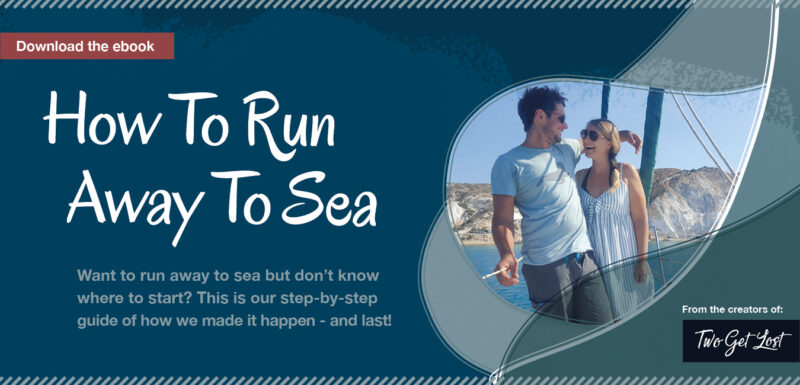
What was the biggest difference between sailboat life and your lives back home?
Having to use water sparingly. We needed to clean ourselves, kitchen utensils and surfaces using as little water as possible (as water was difficult to come by not having a water maker). This was extremely challenging to begin with but something which forced me to address my water consumption at home.
What was the scariest moment of crewing on a sailboat?
Whilst choreographing a contemporary routine of the beach, I had an accident which caused me to sprain my ankle in quite a severe way. Being based out at sea meant that resources and medical care weren’t immediately to hand, making aid more inconvenient. It made me realise help would be harder to get if it was something more serious.
Which aspect of living on a sailboat did you find hardest?
Managing our water consumption and growing hairier by the day, due to the lack of shaving. Simple things such as washing your hands after using the toilet and washing out a coffee mug are things we typically take for granted and became a luxury since returning home.
Was there anything you wish you’d known before you came that could have prepared you better?
Strangely, I felt I had packed well and had everything I needed. The one thing I was particularly impressed with was remembering my water shoes . These are essential when taking the dingy to shore, setting a line to shore, snorkelling and perhaps wanting to climb rocks, etc.
What essential item are you glad you packed/wish you had packed?

As previously mentioned, the water shoes were a God send, but I’m also glad I packed the snorkel and mask. We did a lot of snorkelling from the boat and it would have been sad not to see all the underwater life in Greece.
Being a women on board when the ‘time of the month’ hits is no fun whilst your sailing, so taking extra supplies of sanitary care would be advised. After speaking to Emily, I’ve learnt that menstrual cups may provide a more eco-friendly way of life, so this is something I’ve begun to research more about since being back on home soil.
Did you learn anything from crewing on a sailboat?
I feel I left the boat with a sound understanding of the basics for sailing. My terminology improved daily and I feel I would be now be confident hoisting the genoa (full, reef 1, reef 2), tacking and jibing, controlling the helm, setting anchor and generally determining the point of sail. But this was not the experience or elements that will predominantly stick with me.
Firstly, it’s the kindness, generosity and all-round humility of the skippers and sailors on the water. Everyone looks out for one another and the sailing community almost work like a second family, encouraging those who are new to the craft to succeed.
Secondly, it’s the team work involved; instantly breaking through the formal, acquaintance period and developing a close bond with the people onboard from the word ‘go’. I had never met Emily and Adam and they made me feel incredibly at home for the duration of my stay, inflicting humour into day-to-day activities, resulting in some efficient yet jovial sailing.
Do you think you could live on a sailboat full time?

I truly loved my experience aboard Hot Chocolate and would have happily stayed for a few more months (6 at most), but I don’t feel I could commit to sailing full time. There are pressures and responsibilities constantly. I feel it would create extreme anxiety knowing that the boat could drag anchor when you visit shore, acknowledging that large rocks in 4-meter waters could damage the boat, appreciating that other boats around you may decide to anchor too close and swing into your boat and that the seas may be unpredictable and break things onboard throughout sails. The experiences we encountered were those you wish for in a life-time but I feel I would develop alopecia by the end of year one due to my stress levels!
Rock, stick and leaf….What rocked? What memory will stick with you? What will you happily ‘leaf’ behind?
We shared an evening on the beach for Emily’s birthday which was simply magical, so that is the memory that rocked for me.
When walking around Kimolos, we discovered a beautiful church opposite the loveliest cocktail bar, then continued to wonder around the quaint, cobbled streets of the small village, each corner revealing something new. We stumbled upon a village square where families were all socialising with food and drink, whilst the children used the twisty pathways as their playgrounds with no fear of strangers. There was something special and nostalgic about their way of life. The community was breath-taking and something I will treasure and strive to remind myself of when starting my own family – this will certainly stick.
Finally, to wake in the night and not have to alarm people with the pumping sounds of flushing my poop down the toilet – I’ll happily ‘leaf’ this behind!

Thank you Rachel! It was amazing to have you on board and there’ll always be a very small cabin ready and waiting if you want to return. Hopefully that’s given you a little insight into life on board for a guest, and some of the ways you have to adjust when living at sea. If you’re curious about crewing on a sailboat and want to learn more then check out websites like Crewbay and Find A Crew for more information.
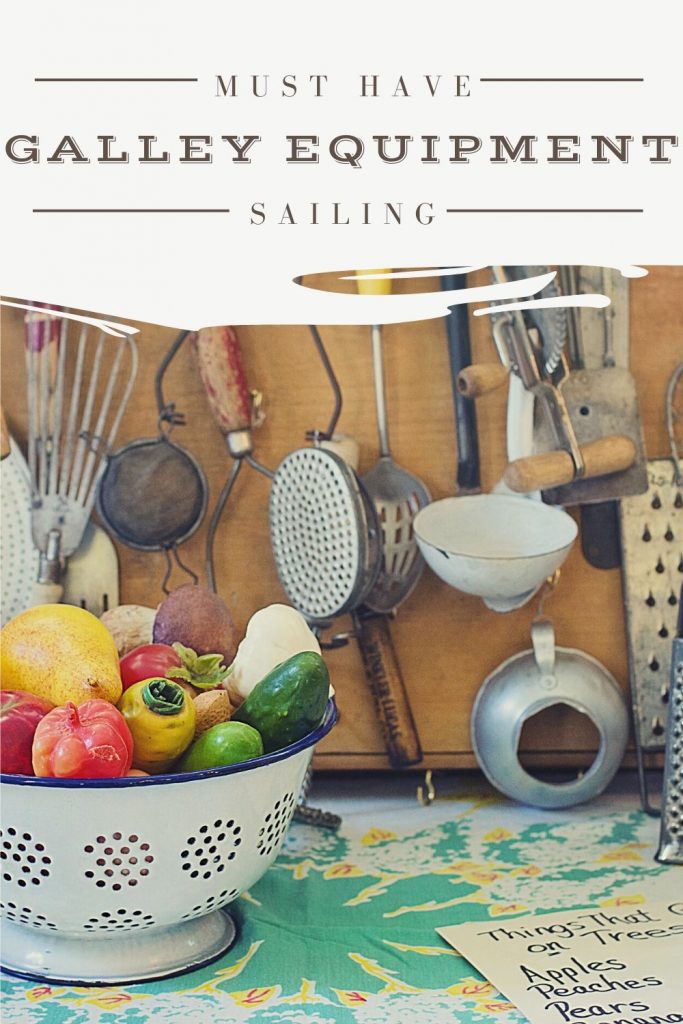
Similar Posts
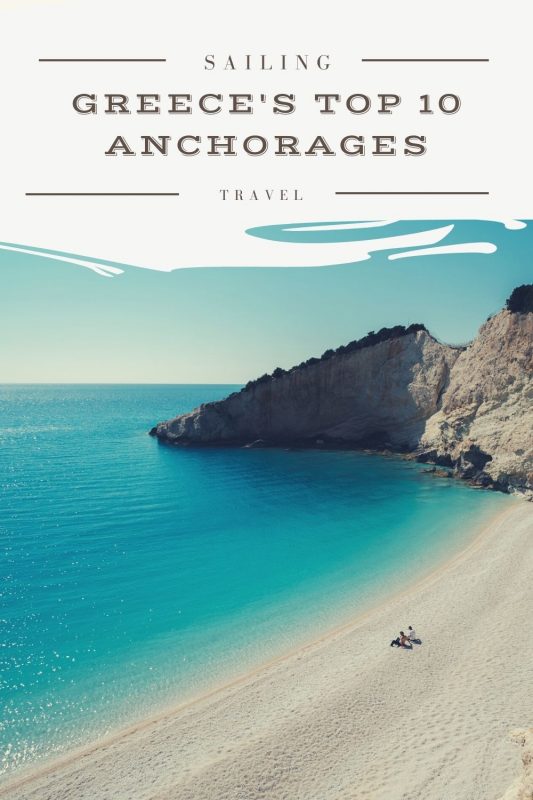
Greece’s Top 10 Anchorages
Catching (and killing) a fish for the first time.

Learning To Ski Without Getting Piste Off
Taking hot chocolate out for a spin, that time we had to wee in a bucket….
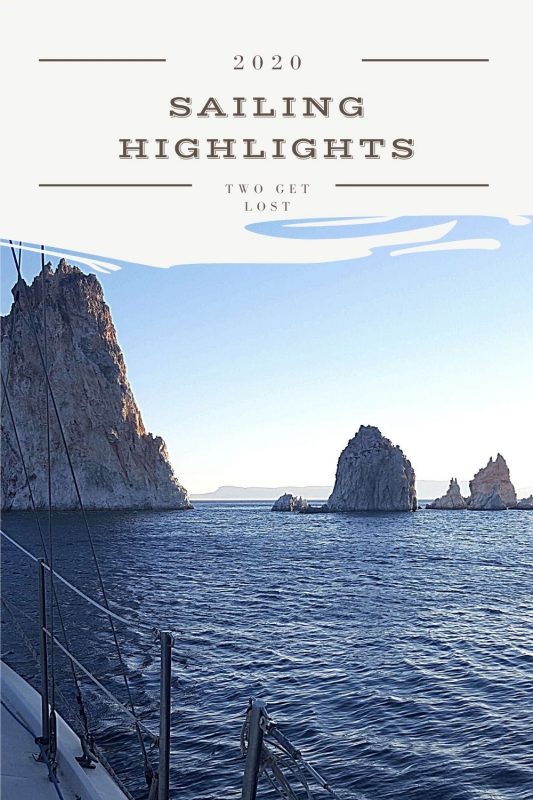
Float My Boat: 2020 Hasn’t Sunk Us Yet!
One comment.
- Pingback: Lewmar Delta Anchor Review On Our 38ft Sailboat - Two Get Lost
Leave a Reply Cancel reply
Your email address will not be published. Required fields are marked *

- Find Crew
- Find Boats

- How It Works

We welcome you to our free crewing service, which is designed to connect amateur and professional crew with sailing vessels and motor vessels worldwide. We aim to provide you with the means to find exactly what you're looking for and allow you to interact with like minded people. Good luck!
Tell Me How It Works
- Professional
Crew Recruitment
Find Professional Crew
Reach 1000's of candidates worldwide! FREE of charge! Crewbay ranks applicants based on their suitability for your requirements. Short listing crew has never been easier. Find the perfect match today.
Jobs Worldwide
Create your FREE Crewbay profile and apply for jobs today. Explore the global jobs list and find your perfect job. New jobs are listed daily and updated regularly with our check-in system, ensuring we don't waste your time.
- Recreational
Global Crewing
All Levels Of Crew
Connect with all kinds of crew, free of charge. Whether you're looking for a helping hand, racing crew, delivery crew or whatever. Crewbay offers crew at all levels, worldwide. You will find all skill levels in far flung corners of the world, all with a close ephinity for the ocean.
Boats Worldwide
Post your profile advert free of charge! Search a wide variety of vessels, offering a multitude of crewing opportunites worldwide. From cruising, day sailing, deliveries, racing, island hopping, coastal sailing, eco projects and lots more. Contact skippers and captains direct.
The #1 Crewing Platform
Since its establishment in 2004, Crewbay has been at forefront of online crewing.
Professional Crew
Recreational Crew
Professional Jobs
Recreational Boats
Sign Up - It's Free
Cookie policy: By using this website you agree to our privacy policy . OK

how it works
How does Crewseekers work?
It's free for yacht owners to post their sailing opportunities, and potential crew members can view all of these published sailing opportunities for free – but to make contact with the yacht owner and to register your details with us you need to join Crewseekers.
Looking for a Sailing Opportunity?
Whether you are looking to:
- Build your experience and sailing miles
- Join local sailing trips with like-minded sailors
- Crew on offshore and ocean sailing passages
- Join racing yacht crews
- Share sailing holidays
- Find professional sailing work
- Crew on yacht deliveries
We have yacht crewing opportunities available for you. Simply search through our sailing opportunities to find what you're looking for.
It’s free to view all of our sailing opportunities. To make contact with the yacht owner and join their crew, you must register as a member of Crewseekers. Membership costs from £75 for 6 months and gives you unlimited access to all of our sailing opportunities. Once you have registered you can create your own personal sailing profile and share this with yacht owners when you are applying to join them as crew.
Sailing opportunities are listed with a variety of crew contributions – some are looking for a shared contribution of daily onboard expenses, some are looking for no contribution, some may pay your travel expenses, and then there are professional listings where a fee is paid to the crew – see our feature on Crew Contributions for more information.
Listed on our separate Crewseekers Directory are commercial sailing opportunities – charters, training, holidays, etc. – and you can access all of these without becoming a member.
Find the sailing opportunity you are interested in, contact the yacht owner and express your interest in that sailing opportunity and go sailing!
BROWSE SAILING OPPORTUNITIES join as crew member
Looking for Crew?
It's free for yacht owners to register and post their sailing opportunities.
You can use Crewseekers to find amateur and professional crew for all of your short or long term sailing voyages; whether it’s more hands for local sailing, watchkeepers for an offshore voyage, long-term crew for an extended trip, or a professional sailing vacancy we can help.
To post a sailing opportunity, simply upload a boat picture and your text. Your sailing opportunity is checked by us then appears on the website, as well as on our Facebook and Twitter pages.
Crewseekers’ members will contact you directly to express interest in your sailing opportunity and to invite you to view their sailing profile. You can post both amateur and professional sailing opportunities, and if you wish you can boost the prominence of your post for a small charge.
Amateur sailing opportunities are accepted on the basis that crew contributions (if any) are for a reasonable share of daily expenses only. For further information on contributions see our article Crew Contributions .
Commercial sailing opportunities, i.e. those that charge a commercial rate for other people to join you aboard, can only be posted on our separate Crewseekers Directory section.
POST SAILING OPPORTUNITY
Crewseekers acts as an introducer only and does not warrant the skills of skippers or crews, or the suitability of vessels or equipment for any proposed voyages – further information is available in our FAQs and Advice sections.
We are not an employment or crew matching service and we do not operate a database that you can add your CV to for yacht owners to search through. It’s up to the crew to find the sailing opportunity that they are interested in and to reply to the yacht owner to express their interest.
we love sailing as much as you do
Crewseekers is run by experienced, professional sailors offering a friendly and helpful service to yacht crew and owners. We are the original yacht crew introduction agency – established for over 25 years, offering amateur and professional sailing opportunities throughout the world.
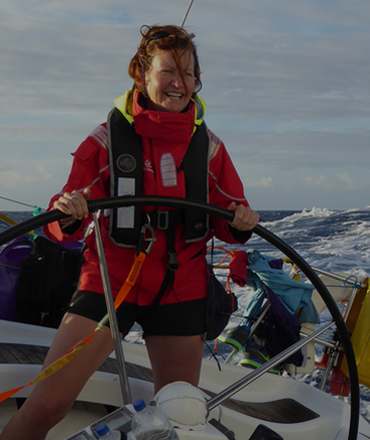
Please don’t go
Join today and get 10% OFF Crew Membership
USE THIS VOUCHER CODE CREW10 Type this code into the payment page to obtain your discount
842 Crew online in last 24 hours
393 boats online in last 24 hours, find a crew™ – the world's largest online boat & crew network.
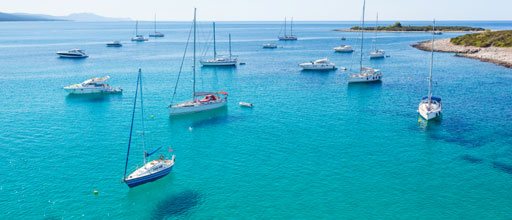
Find a Crew™ – the World's only Crew network that matches members automatically
Find a Crew™ is a global online network portal connecting Boats & Crew directly. Connect directly with members in over 200 countries from anywhere at anytime.
View, register, list, search, filter, match, & wave – all 100% free for as long as you like. All Free members can chat with Premium members who contact or reply to them.
No contracts! No commissions! No placement fees! No recurring charges! Premium members decide who can chat (personal messages) with them.
The QuickFind™ saves you hours of searching by calculating the best matches for you. Change your matching options and check your QuickFind™ to find your updated matches.
Our global success is built on by providing a secure & trusted platform. Several visibility options to manage your privacy and who can see your profile.
and best of all
Find a crew™ does not have ads, and we don't sell personal information to anyone.
We don't link or post profiles to social media, we don't submit profiles to search engines, and we don't publish or sell statistical user information.

How Find a Crew™ works for Free members
1 create your profile.
free to register, list, match, search & wave try us for as long as you like as a Free member
2 Instantly see your matches
find your best matches with a ‘QuickFind’ click use 'Follow' to manage your favourites
3 Connect quickly, and safely
check mutual interest first with a wave send chat replies to Premium members
How Find a Crew™ works for Premium members
$ upgrade anytime when you're ready.
upgrade anytime, anywhere, anyone to Premium, either as a Boat or a Crew member with a Premium duration that suits you from one month to up to 5 years and chat (exchange personal messages) with any matching members Premium can be paused for up to 18 months Premium never renews automatically

Five good reasons to use the global Find a Crew™ network portal
Let the world come to you, wherever you are – with a single click. At Find a Crew™, you have thousands of locations, marinas and docks in over 200 countries and 5 oceans at your fingertips.
Anyone and everyone has the freedom to make their own choices to experience what they want. We aim to be here for anyone, anytime, anywhere – without trying to be everything to everyone.
Only members who have signed in within the last 45 days are listed – 100% guaranteed. This makes it much more likely that you will find and connect with someone who is here to find you too.
The Find a Crew™ network is fully monitored and all profiles are checked daily for suspicious activity. We work hard to host a safe and secure website – for your peace of mind.
Protecting your identity and privacy is our mission. We care that no one can access your contact details without your permission. It's a smart choice when connecting with strangers.

Find a Crew™ is proudly featured by


Home » Blog » Sail » 5 steps to being good crew on a sailboat
5 steps to being good crew on a sailboat
By Author Guest Post
Posted on Last updated: October 12, 2017
GenZ is on the water! It’s hard enough being a teenager, but imagine spending 24/7 with your parents and brother in a 100 square foot space! It would be easy to feel resistant, but as Abby Bridges explains, shifting her mindset from passenger to crew has made all the difference. Whether you’re a teenager or a parent with kids aboard, or just find it hard to start pitching in around the boat, Abby provides 5 easy steps for getting more out of your adventure by being a good crew member.
How to be good crew
Aboard any boat, there is a functional hierarchy. A person is either the captain, part of the crew, or a passenger. The captain is responsible for the safety of the vessel and everyone onboard. The crew supports the captain in performing his/her duties, and assists in the operation and maintenance of the boat. A passenger doesn’t have any responsibilities; he or she is just along for the ride.
When I first started sailing, I was a member of the passenger category. My dad is the captain, my mom is the first mate/chef and my 11-year-old brother is the cabin boy. As a passenger, I expected cruising to be a series of beaches and infinity pools, without any kind of physical labor involved. Once reality set in, I realized that despite the work effort, cruising is infinitely more fun if you are a part of the team. The mental transition from passenger to crew takes real effort, but I’ve found that it makes the end results that much sweeter.

Step 1 – Be hungry to learn
The first step in shifting your mindset from passenger to crew is having a desire to learn, and acting on it. At the beginning of my sailing days, I was against my parent’s decision to cruise. I’ve come around now, but I remember being reluctant to do anything crew-related because I couldn’t care less about the actual sailing part.
I can recall the exact moment that I changed my attitude. My parents and brother had just dropped the hook in a beautiful anchorage in Mexico after a long and tiring passage. They wanted to go into town to get some ice cream to celebrate our arrival. I was just about to climb into our dinghy when my dad, the captain of our boat, stopped me and said he was buying ice cream for only the crew, and that I didn’t deserve it because I did nothing to help. As I protested, I watched my family go off to shore while I was stuck on the boat, deprived of any cold treats. I decided that from that moment on, I would strive to learn to be crew. Not just for ice cream, but because I wanted to truly be a part of our adventure.
Step 2 – Learn the lingo
One of the most important things in being an active crew member is speaking the same language. Sailing has its own lingo; it’s almost a foreign language. Learning how to sail will be much easier once you understand words like mainsheet halyard, boomvang, or starboard. When my dad tells me to trim the port jibsheet, I do so without even thinking about it. A crew member must be able to handle many aspects of the boat quickly and efficiently. I needed to show the captain that I was ready for that responsibility, and that he could trust me and that started with understanding what is required. Now I take any opportunity to help and as I prove myself to my dad, he challenges me further.
Step 3 – Set your ego aside
Sailing requires teamwork. It is something that takes a large amount of involvement from many different people. There are roles of captain, 1st mate, 2nd mate, quartermaster, able-bodied seaman, ordinary seaman, chef, cabin boy, and way too many others to list. Each person is crucial to keep the boat afloat and running efficiently and there isn’t room for egos.
A crew member must work well with others, and should obey any order given immediately, without question. The hardest part of being a crew member for me is to do just that. I am an extremely stubborn person who always wants the last word, so learning to shut up and take orders was very difficult, and it’s still something I’m working on. Even if you disagree with the captain, I must not contradict the captain because he has the experience and the authority to make the right decision. Even disregarding the smallest order can compromise the safety of the entire crew. I had to learn that if the captain tells you to do something in a firm tone, it is just because it’s a matter of urgency, not because they’re being mean. Mentally giving the captain control is something that takes great maturity, and once you can do that, you are officially part of the crew.

Processed with VSCO with c1 preset
Step 4 – Take responsibility
A great benefit to being a crew member is that you can give input towards many decisions, whereas a passenger has no right. Ultimately, the captain makes the choice, but often he regards the speculations of the crew. As a crew member, I am respected by adults in a way that a fifteen-year-old ordinarily wouldn’t be, and trusted to make larger scale decisions. Of course, my parents aren’t handing over the charts and compass completely. They still have the final say, but I feel like my opinions are valued, and my parents’ idea to sail around the world isn’t theirs alone; it’s become my adventure too.
Step 5 – Reap the rewards
Knowing that I took part in sailing our boat from California to Mexico and then to the South Pacific leaves me with a feeling of deep accomplishment. I know it’s because the things we are most proud of in life are the things we work hard for. My dad asks me every day if I want to be Passenger or Crew. I’ve made my choice and I don’t regret it for a second. I don’t even care about the ice cream…as delicious as it is.
Abby Bridges is a fifteen-year-old sailor who is currently cruising in the South Pacific with her family of four aboard their Gulfstar 50, Beach Flea. She enjoys surfing, SCUBA diving, and doing backflips off the side of her boat. Follow her on Instagram @abbygbridges or check out her family’s sailing adventure at www. beachfleas.com
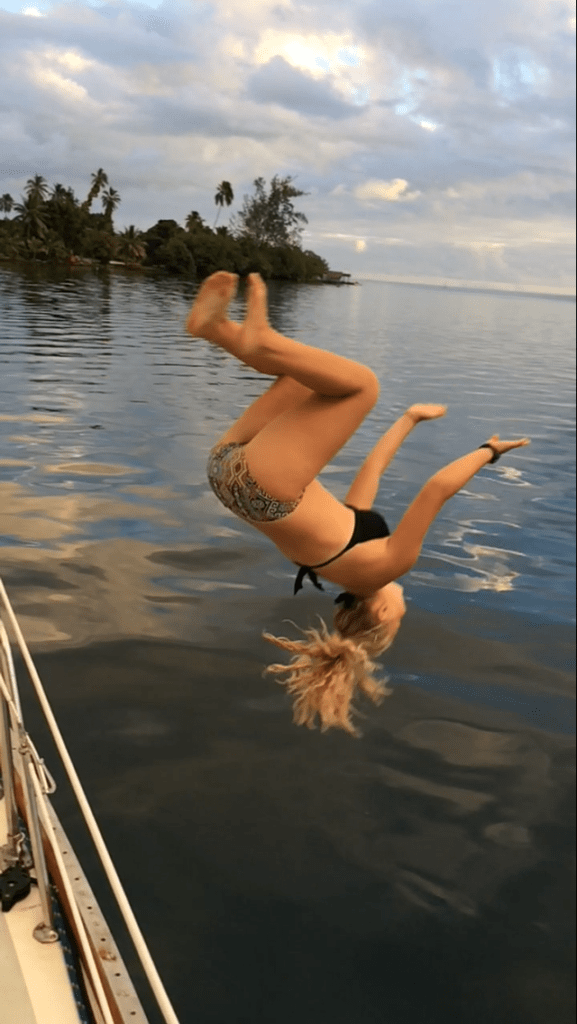
Patti, Mermaid on Yacht LOVE
Saturday 28th of April 2018
Well written article and excellent choice of pictures. Abby's articulate opinion says it all! I hope her article inspires other teens to "get over themselves" and get involved with sailing. Following directions is totally worth all the benefits of being safe and fun sailing to awesome places!
Saturday 28th of October 2017
This is a great article and I would love to share it with our Junior Sailors. Could I have permission to publish it in our club's newsletter?
Thanks, Tom
Friday 10th of November 2017
No problem. Please go ahead.
Sunday 22nd of October 2017
Great post, people often don't know what to do when crewing and it can get frustrating for everyone. Crewing should be fun!
Tara www.coastapus.com
Kristin Hanes
Friday 13th of October 2017
What a cute article!! I'm so glad you came around the helping crew the sailboat. I think its so rewarding!
Terms and Conditions - Privacy Policy
We were heaved to in the middle of the Atlantic, the sails of the 40-foot sloop set in such a way that the boat drifted slowly through the water, riding gently upon the heaving ocean swell that rose and fell with cosmic regularity. The puffy trade wind clouds marched across the sky in the perpetual easterly breeze. The sea itself was an indescribable shade of deep blue that exists only in deep waters far offshore, a color for which we have no word.
I was on the lee deck, wedged between the coach roof and the lifelines, bracing myself against the swell, gripping an old plastic sextant and practicing my sun sights. Engaging in a method of navigation used for centuries is to truly become one with the universe, a sensation long lost among the lives of those on shore. After plotting my line of position that I obtained by calculating the angle of the sun on the horizon, I figured we were around 26 degrees North latitude, 65 degrees West longitude, just about halfway between Charleston, SC, and our landfall in the Virgin Islands. We were seven days off the East Coast, another seven or so more to sail. We had finally adjusted to life at sea, the simple life of living in tune with the universe.
Traveling and Working as a Volunteer Crew Member
Amazingly, I was along for this trip of a lifetime as a volunteer crew member. The owner had paid my way, provided the food onboard, and would pay for a return ticket from Tortola upon our successful delivery of his yacht to the islands, where he planned to use it over the winter months. The 40-foot, French-built sloop boat was incredibly comfortable for the four of us onboard — my father, another 20-something young woman, and the volunteer French captain. We had a nicely-sized galley with working refrigeration, ample sleeping space, and plenty of food (and coffee) for two weeks at sea.
Traveling the world by sailboat is a dream shared by many but experienced by few — more often than not, thrown to the wind and destroyed by careers, commitments, and shore side attachments. But life is gratifying for those who commit to the sea — simple in its routines yet profoundly natural.
As a lifelong sailor and professional captain, I have traveled the world by every means imaginable, yet I have found that the best way to travel is under sail. For those looking for a unique way to see the world and experience life, becoming volunteer crew doing yacht deliveries is an exciting, unique, and reasonably affordable way to get around.
How to Find the Right Boat to Work On
Yacht deliveries can range from taking a neglected 32-footer built in the 1960s from Bermuda to Nova Scotia in the dead of winter (which I have unfortunately experienced) to sailing a sparkling new 70-footer in the warm Trade Winds of the Caribbean, island hopping your way around some of the most beautiful sailing grounds in the world. So it pays to do some research before signing up for any trip that is out there.
Walk to Docks to Find a Boat: Ironically, the best way to get a job as a delivery crew member is to arrive in a new port on a sailboat and walk the docks looking for work. Unfortunately, the age-old catch-22 situation rears its ugly head — you need experience to be crew, yet need to crew to gain experience. Suppose you are lucky enough to live in a sailing city — such as Annapolis, MD, Ft Lauderdale, FL, or any coastal town in the Caribbean or Mediterranean. In that case, walking the docks and talking to people is your best bet for finding a boat. The girl on my last trip found our boat precisely that way. She was a local from Charleston, SC, simply looking for sailing experience and a ride to the islands where she wanted to pursue her kite surfing passion. Since we were only three then, we welcomed her extra help, even though she had never been on a sailboat before.
Use the Internet: If you are like me, come from a rural inland town, or are otherwise far removed from the ocean, the Internet is helpful and provides another way to find a boat. Several websites are dedicated to finding crew, particularly for deliveries, and they often allow you free access. Professional delivery skippers often post ads looking for volunteer crew people, and it is usually just a matter of sending your resume, a photo, and a short email about why you want to crew that will get you on a boat. Frequently these skippers are willing to take inexperienced crew as a third or fourth member and are usually very amenable to teaching.
Take Part in “Cruising Rallies”: Increasing numbers of retired businessmen and women are buying boats with big dreams of crossing big oceans without the knowledge, skill, or confidence to do so alone. Several career sailors have recognized this problem, and "Cruising Rallies" are becoming increasingly popular in all the world's oceans. They are organized by experienced sailors with thousands of ocean miles, and together with up to 50 other boats, inexperienced sailors (primarily retirees) can cross the ocean of their dreams in the relative safety of the group with experienced leadership. Once in port, these newfound ocean sailors have the added benefit of organized parties and events to share the joys of their first ocean passage with others.
You can be a part of the increasing popularity of cruising rallies, and many of the organizations behind the logistics maintain websites and crew registers. The Carib 1500, for example, is perhaps the most popular cruising rally on this side of the Atlantic, with nearly 50 boats, all over 40 feet (and many much bigger), sailing non-stop from Norfolk, VA, to Tortola in the British Virgin Islands. The rally occurs after hurricane season and before the onset of winter, in early November. They also organize a return rally in May from Tortola to Bermuda. From there, the boats split up and headed east to Europe or back to the U.S.
What About Experience?
Many captains, including myself, require at least one if not two, professional or very seasoned sailors to join them on a major ocean crossing. However, like me, many are more than willing to take a few extra inexperienced sailors or intrepid adventurers along for the ride and are often willing to instruct them along the way.
The key to finding a boat to sail on is to present yourself as a trustworthy person eager to join the trip. Ulterior motives are often very apparent, and no captain is willing to take along someone just looking for a free ride.
Working Aboard the Sailing Boat
The work aboard an ocean sailing boat is difficult, tiring, and unending. A passage of even ten days sounds short, yet when you're on a watch schedule of four hours on and eight hours off, one day seems like two, and you must adapt to an utterly different way of life than the one you are accustomed to ashore. Everyone shares in all the duties involved in running the boat, from standing watch in the rain at 2 a.m. to cooking breakfast and making coffee. Then you must clean up upon arrival when the boat is in shambles, and you have not had a freshwater shower in two weeks.
Life at sea is incredibly raw and incredibly basic. Your world shrinks to the three miles or so you can see in every direction before the horizon curves out of view. A passing freighter is often the most exciting thing on a given day. The intense discomfort of being salty and sticky for two weeks is offset by the rewards of a cloudless night watch under a new moon. The sky is so dark you can scarcely see your hand in front of your face, yet the stars fill the night sky like an enormous diamond exploding in the center of the universe, sending fragments to every corner of space. You will see more shooting stars on one night watch than you would in a lifetime ashore; at sea, the lights of civilization do not pollute the sky.
Ocean Sailing Makes the World Feel Big Again
In our age of instant communication and light-speed travel, crossing even a short distance in a sailboat reminds us that despite our attempts to shrink the world with technology, our planet remains one enormous place. After two weeks at sea, watching a distant island grow on the horizon provides an indescribable feeling of accomplishment. The first beer ashore never tasted better, and a freshwater shower after weeks of bathing in the salty ocean is a blessing from Heaven.
If you plan accordingly and have ample time, traveling the globe by "hitchhiking" on sailing yachts is a unique and rewarding way to see the world. After the first trip, you still gain experience, and finding and sailing on additional boats becomes progressively easier. You will save thousands on airfare and gain a greater appreciation for the distances we travel so quickly through the sky. But most importantly, you will return to nature, experience life with a stronger sense of connection to the universe, and return with unforgettable stories. You will change.
Andy Schell is a professional captain and freelance writer who lives aboard his sailboat Arcturus in Annapolis, MD, and travels extensively.

How to sail across the Atlantic Ocean As Crew? Tips! | Ocean Nomad
No boat, no much budget and no real sailing experience but a dream to make a big sailing trip! Here’s a few waypoints that already help you tackle an Atlantic Ocean Crossing – as Crew.
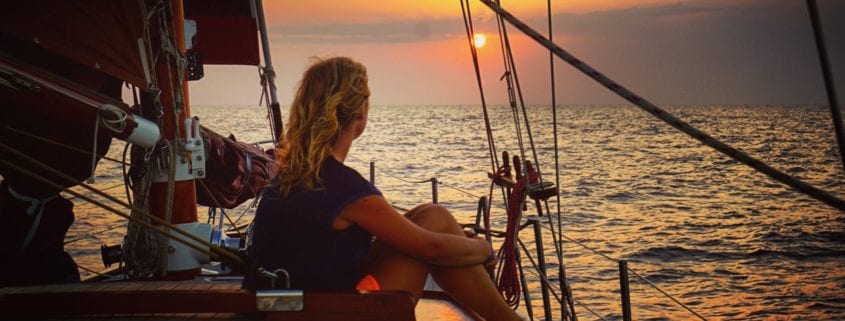
Tips to help you find (the right!) sailboat to cross the Atlantic Ocean
Willpower and determination.
Believe that It’s gonna happen and tell everyone it’s gonna happen. Then it WILL happen. The law of attraction!
Start the investigations and communications early
The earlier you start searching, the more chances for success! For my the Europe to Caribbean crossing, I started digging into it in July, in August I was all set. Since, I have received 10+ more serious and fun requests.
Read stories of people who made the crossing
It’s fun and it gives you a better idea of what it’s like. Don’t underestimate this adventure! Please please inform yourself! Here you can find some more blogs about my boat hitchhiking adventures. A few more great stories and helpful blog posts from boat hitchhikers:
Ask sailors if they have any tips, links or connections
Via via you must know some seafarers. I had some connections from back in days. Everyone is willing to help. It’s a great community. From their responses, I realised that making the trip larger, with some island hopping prior and after, than ‘just a crossing’ is way more fun and will teach me way more about sailing. I extend the Atlantic Ocean crossing dream with some island hopping in the Canary Islands and Caribbean archipelagos. So think about WHY you want to do this. Join the Ocean Nomads network to tap into the tips, knowledge and connections of those who are out there. Upcoming adventure gathering:
View this post on Instagram “Luck is what happens when opportunity meets preparation” – Seneca One month ago I met Nathan @shepherd.stories After 3 hours in Las Palmas he found his ride to sail across the Atlantic Ocean 🍀💙🎉⛵️ 2 weeks later he arrived in Barbados and now he’s crossing South America on a motorbike. Good for you Nathan on making the dreams real! And so cool to hear that I’ve been able to help a little with my book Ocean Nomad. Priceless coconut present 🥥 💯👏🍀 Curious to the book? Link in bio! Posted @withregram • @shepherd.stories Just before we set sail for the Atlantic Ocean, Suzanne passes by to wave us farewell. Suzanne greatly contributed to me being successful in hitchhiking across the Atlantic Ocean by the book she wrote. I can recommend it to anyone that considers crossing the Ocean by sailboat. As a way of gratitude I gave her a coconut – her favorite fruit. Thanks again @_oceannomads!” #oceannomad #atlantic #sailing #atlanticocean #boathitchhiking #offshoresailing #sailingaroundtheworld #dreamitdoit A post shared by Big Blue💙 (@oceanpreneur) on Feb 4, 2020 at 11:36am PST
Sign up for the big crew websites
Sign up for the big crew websites. Here’s a list of seven crew websites to find a boat. Also, check out facebook groups. There are dozens of them where you can connect with sailors. I created ‘ Atlantic Ocean Crew ‘ on Facebook to help in this department. Whenever I know or hear about an Atlantic Ocean crewing opportunity I post it in the Ocean nomads member network. Lots of vessels already in there who occasionally need crew. Summer 2021 we’ll create a little member fleet, most likely in Galicia.
What to put in your crew profile when you have no sailing experience?
Show your value! Sailing experience is desired but a positive attitude and handy hands probably even more. So don’t worry about not having sailing experience. Put in your enthusiasm, your story and other skills (language, cooking, dive, kite, yoga, mechanic, fishing, medical, writing, photography, video, comedian, massage, electrician, dietist, heck if you’re good at fridge tetris you have a welcome skill) and you’ll come a long way. In any case, start learning as much as you can. NauticEd is well acknowledged online sailing course platform. Click here to get two free courses .
As a girl who wants to cross the Atlantic, you receive more crew invitations? While it may be ‘easier’ you still want to feel safe, secure and comfortable. There may be more opportunities but maybe less ‘matching’ ones. Tips for the women: Narrow down the selection to a boat with a minimum of 4 crew, Skype and check references before accepting anything.
Be at the right place, right time
If the crew websites don’t work out, just go to a harbour. Part of the fun! But also part of the costs. You’ll find a hostel in the Canary Islands as from 15 euro’s/night (Or go couchsurfing , housesitting , or boatsitting . Las Palmas has many couchsurf hosts. Airbnb has some nice options, including boats in the harbour.
Hostel recommendations for Las Palmas
+ 5-minute walk to the harbour: La Fabrica (love the vibe here) and Alcaravaneras hostel (has also private rooms).
Another nice hostel is Utopia and Big Fish in Las Canteras but it’s a +/- 20-minute walk to the marina from there.
Atlas in La Isleta is another option especially if you’re on a tide budget. Here you can also work in exchange for accommodation. It’s a little further from the harbour.
Book your hostels in advance. On the spot they charge more and they are often booked out in high season (November- January). I wrote another blog on boat hitchhiking and provisioning in Las Palmas.
You can check out my page on recommended travel resources for budget friendly / free accommodation platforms, making friends, and travel with a positive impact.
When do boats sail across the Atlantic Ocean?
October/November/December/January is when most boats make the Atlantic ocean crossing from East to West, from Europe to the Caribbean. November/December is peak. 2nd half of December not many boats are leaving because of Christmas and Newyear. January has more constant trade-winds. Also In January new boats come in looking for crew. There are only half as many hitch-sailors as in November and December.
In Ocean Nomad , I wrote extensively on when it’s a good time to be where, which harbours to go to, and how it all works when you’re in the harbour.
Bingo! You got a crew spot on a boat
But is it the right boat? Check!:
- Experience of the captain? Licenses and references
- State of the boat?
- A competent crew on board?
- Insured boat?
- Does the boat have all the necessary equipment? Liferaft, lifejackets, harnesses? Satellite phone? EPIRB? Spares!!?
- Last but not least, learn about the people! Will there be like-minded crew on board? You’re gonna be stuck with them for a while so get to know each other a bit before hand!! Feel comfortable with them.
- Read Don’t be afraid to say no by Bob Fritz. A well written article of things to bear in mind, check and ask before committing to a boat.
- Say NO! If it doesn’t feel right! On the ocean there is no way to go.
- Considerations to asses safety and minimize risk.
- Find the full checklist in Ocean Nomad
Ahoy! Enjoy the ride! Before you know it, you’re on the other side.

Would you like to learn more about what’s it like to sail across the Atlantic? How to find a boat (and how not)? How to figure out if it’s the right and safe boat? When to be where? What are the Atlantic sailing routes? Which crew websites are worth signing up for? What to pack for a sailing adventure? What’s expected of you as crew? And you probably have wayyy more questions! Great! It’s not a straightforward adventure and preparation and research is key!
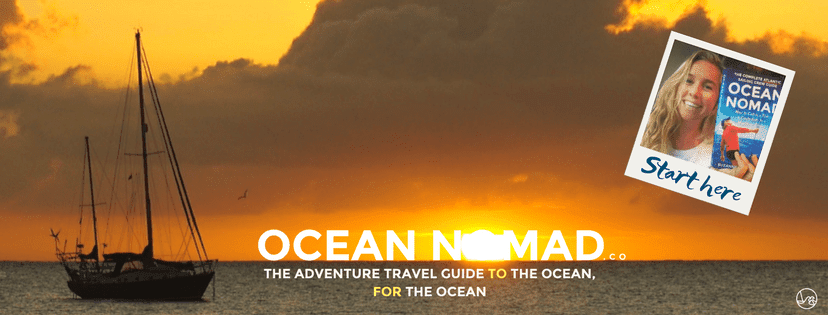
Invest ‘one hostel night’ into Ocean Nomad (Available in E-Book , Kindle or Print ) and save weeks of research by having your Atlantic Ocean Sailing questions answered. Download a free sample.
Here’s what some readers say:
“I was absolutely amazed: is it really possible to cross an ocean if you don’t have sailing experience!? Inspired by Suzanne’s adventures and her very well provided details and information on the subject, I felt totally ready to throw off the bowlines myself. And I did! To me, Suzanne is THE example of ‘if you put your mind to it, you can do it’. This book will inspire and inform many more adventurous around the world.” – Janneke Dijkhuis “Suzanne has been a major source of inspiration and information! From the first moment I read her writing, I knew that I wanted to do the same! And it worked out! We sailed from Canary Islands to Cape Verde, and went from Cape Verde to Barbados. When we were full of doubts if it was the right thing to do, I returned to what she wrote and re-convinced myself that it was all for the best.” – Paulina on the Road “At almost 400 pages, Ocean Nomad contains actionable information for anyone involved (or interested) in hitch-sailing. More than a simple adventure story, or even a personal memoir of what the author did right and wrong when hitch-sailing (3 times!) across the Atlantic, the book is a comprehensive look at all aspects of hitch-sailing, with interviews of 32 captains and 58 sailors for a wide perspective.” – Jennifer Dunne “As someone who has no boat, no budget, and no sailing experience, but loves to travel and have a good adventure, this book provided everything the author promises and more. While readers can use this as “guide book” to get a boat and plot an adventure crossing an ocean, it also gives readers an in-depth look at the deteriorating state of our oceans and ways both boaters and sailors and the “landlocked” citizens of earth to improve the quality of our waters. I can only imagine the amount of work, preparation, research, and thought that went into this book. I can recommend this book to anyone who wants to go on an adventure on the ocean, plan out their own adventure, or learn about the health of our oceans and ways we can save them.” – Brian van Dongen
Ahoy! See you in the harbour!
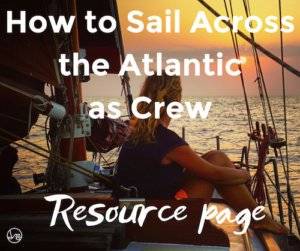
Hi! My name is Suzanne. I'm here to help you go on ocean adventures and make positive impact for a healthier ocean. Explore this website to learn what I do and how you can make some splashes too!
Previous Post 3 remarkable ocean conservation initiatives to support!
Next post mountain warehouse review of budget outdoor gear, you may also like.

What kind of boats cross the Atlantic Ocean? 7 Options explained
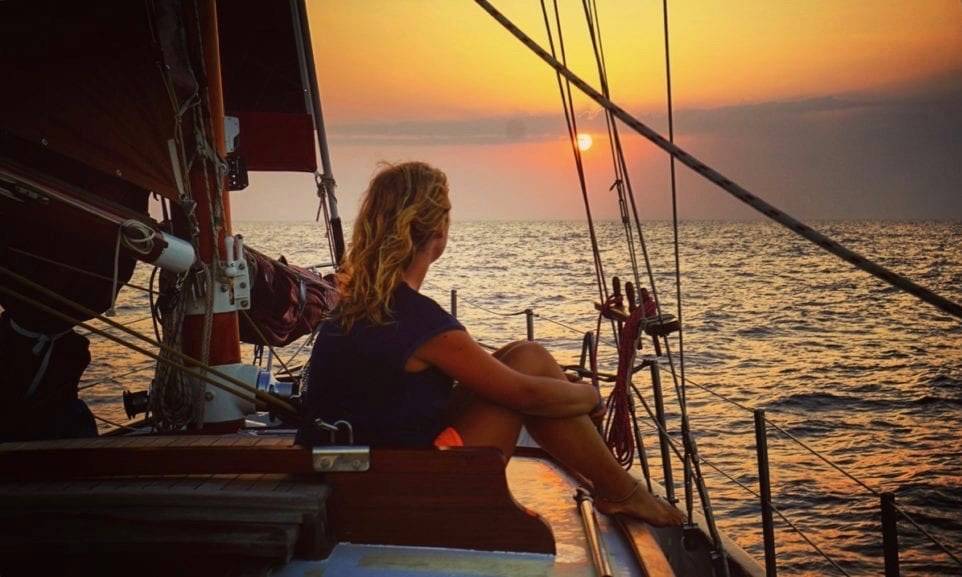
With great enthusiasm i read even more about crossing the atlantic by means of hitchhiking! I can’t wait to experience it myself!
Just wondering: above several harbours are mentioned to go to. Which are those in the Carribean if you want to head to Europe?
Thanks a lot!
Cheers, Pol
Hey Pol! Thanks! When will you go sailhitching :)? So as from April/May many boats leave the Caribbean before the Hurricane season. Route is Bahamas – Bermuda – Azores – Madeira – Wherever… I would look for big ports in these destinations. I know in the Azores, Horta is the place to be. For the other destinations I have’t looked into it yet. On the crewwebsites many boats are looking now for crew for the West-East crossing! Good luck! And let me know how it goes! Suzanne
There is one point to bear in Mind; a spot in a good boat to cross the Atlántic is only 2.000/3.000 € away.And it all changues from taking anything ,begging for a Spot,always without knowing if they will all leave you “abandoned” ashore, to be choosing a boat,a Company with The responsability to be equiped,and with all experience for it. Then you can be sure of your adventure in advance.So it is not so difficult to be one year working to get that money ,as also those who cross in a sailboat must face a lot of expenses to be doing that. It is a fair trade. I have been in a first crossing without paying,i have got my boat and cross alone,at may own expenses ,and now i work with a Company,nice safe Catamaran,who charter and offers a good deal,three weeks crossing and a week through Caribbean for 2.700€.
And after being in all sides, i think this is the best option.!
Good sailing!,
Very good info. Lucky me I discovered your website by chance (stumbleupon). I’ve bookmarked it for later!
I’m planning a trip to either Canada or New Zealand by hitching with sailing yachts. I’m currently trying to get a place on a yacht for the Atlantic crossing. Just had a guy reject me on the basis of me being a vegetarian. (Or not female : ) What’s your experience with this? Are you a vegetarian? Or have you met other travellers that have had a similar problem? -I’m hoping it won’t be an issue for me. Nice website BTW : )
Hey Michael! Thank you:). If the guy rejects you because you’re vegetarian you’re probably gonna disagree on many more things and it might not be the right boat for you anyway! Don’t worry about that. It’s not an issue. It’s a good thing! There’s many boats that are happy to take a vegetarian on board. Since i’m getting way more aware of what’s happening in our ocean and food production in general i’m in the process of becoming vegetarian. How’s the boat hunt going? Enjoy the journey!
Hi! Great info and tips you got there! We’re a Swedish couple on our grand hitchhikeing tour from Berlin to South America. Since we’re a couple we’d prefer to do the Atlantic crossing together. Do you think it’ll be hard to find a crew that accepts two lovebirds?
Cheers, Melina &Linus
Hey! Thanks for this! I love finding your website! I am now in Greece, flying to Belgium and Amsterdam for NY and then eager to cross after this! All of your info and super delightful enthusiasm aaaand positive attitude are A) super helpful in regards to following my dreams and B) super awesome to just have such a sister reflecting and BEING such awesomeness in this world here!!! Thank you Suzanne! Much love and enjoy your sweet holydays darlin!!! xxx Kylie
Thank you very much for this assuring and informative post! :)
My boyfriend and I want to cross the Atlantic Sea in october leaving from Tenerife. Did you meet any couples doing “hitchboating”? :) How feasable is it, to do hitchboating as a couple?
Enjoy your travels!
Thanks a lot for your ideas! :)
Hi woder if you could help me wanted to track down owner or skipper of Cyclos 2. We are interested in buying the boat but not through brokers. Could you forward my contact email so we can touch base a discuss the boat in more detail. Sounds like you had a great time on her with your travels.
Appreciate your help.
Thanks Mark Frankham New Zealand Mobile Phone is 021 766 181
Hi Mark! I will send you an email with CC (previous) captain. He will know! It’s an A-MA-ZING boat to sail! IF you’re buying it and you ever need crew, don’t hesitate to contact me. Would LOVE to sail her again! Good luck! Suzanne
Hi Suzanne, Newbie here looking to cross West-East in April next year :) Thank you for such a helpful article! Just wanted to say that the link to the crew websites recommended by you doesn’t work. Best, Liza
Hey Liza! Glad it was of help :) And thanks for letting me know. Time for some updates:) Cheers, Suzy
Leave a Reply Cancel Reply
Save my name, email, and website in this browser for the next time I comment.
subscribe to our newsletter
oceanpreneur
🌱Natural Ocean & Adventure Travel Lifestyle 📍+15yr 🌎 Nomad by Sail, Van, Hike & 🧜♀️ 💃Author, Captain & Founder @oceannomads.community Stay wild 🐒👇

Join the Club

My Nomad Gear & Tools

© 2024 Oceanpreneur. Suzanne van der Veeken. Registration: KVK 60416947 VAT: NL001950161B95
- Canary Islands
- Saint Lucia
- Saint Vincent and the Grenadines
- Sailboat Travel Tips
- Sail across the Atlantic
- Sailing & Sustainability
- Ocean Nomads Community
- Sailing Opportunities
- Travel By Sailboat as Crew: The Course.
- Slow Travel
- Natural Life
- Ethical Travel
- Zero Waste & DIY
- The 7 R’s: Rethink-Refuse-Reduce…
- Ocean Education
- What can you do?
- Tips on Selfpublishing a Book
- Conscious Gift Guide
- Work with me
- Buy me a Coconut
- Partners & Press
- Support Ocean Awareness & Action
- FAQ-sailboat-travel
What To Pack When Crewing On A Sailboat: Tips From Cruisers Forum
- Last updated Nov 29, 2023
- Difficulty Beginner
- Category United States
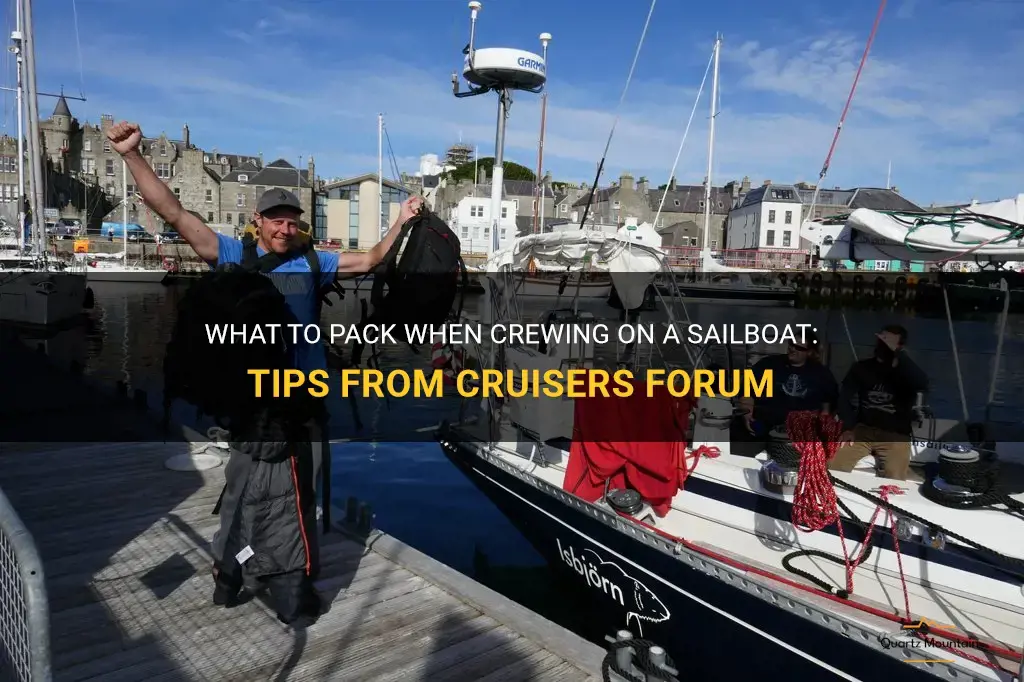
Crewing on a sailboat can be an exciting and adventurous experience, but making sure you have everything you need for the journey can be a challenge. To help you navigate this task, we've gathered some tips from seasoned sailors on the Cruisers Forum. Whether you're a seasoned sailor or a first-time crew member, this guide will ensure you have all the essentials to make your sailing adventure safe and enjoyable. From clothing to safety equipment, we've got you covered. So, grab your sea legs and let's dive into what to pack when crewing on a sailboat!
What You'll Learn
What are the essential items that crew members should pack when joining a sailboat, are there any specific clothing or gear recommendations for crew members on a sailboat, are there any personal documents or paperwork that crew members should bring with them, how much storage space is typically available for crew members to store their belongings on a sailboat, are there any specific safety items or equipment that crew members should consider bringing on a sailboat.

When joining a sailboat as a crew member, it is important to pack the essential items that will ensure your comfort, safety, and overall enjoyment throughout your time at sea. Whether you are embarking on a short-term sailing trip or a long-term sailing adventure, here are the key items you should include in your packing list.
Personal Protective Equipment (PPE):
Safety should always be a top priority when sailing, so make sure to pack the necessary PPE. This includes a well-fitting life jacket, a safety harness, and a personal locator beacon (PLB) or an emergency position-indicating radio beacon (EPIRB). These items will provide you with the necessary protection in case of an emergency.
Seasickness Medication:
Even if you have never experienced seasickness before, it is always a good idea to bring seasickness medication with you. The motion of the boat can be unpredictable, and even the most seasoned sailors can fall victim to seasickness. Consult with a medical professional to determine the best medication for you and pack enough to last the entire trip.
Proper Clothing:
When packing clothing for a sailing trip, consider the weather conditions you will encounter on the boat and at sea. Lightweight, quick-drying fabrics are ideal, as they will keep you comfortable even if they get wet. Pack plenty of layers to accommodate changing weather conditions, including waterproof and windproof jackets, thermal base layers, and breathable shirts and pants. Don't forget a wide-brimmed hat, sunglasses, and sunscreen to protect yourself from the sun's harmful rays.
Ensure you have appropriate footwear for the different activities you will engage in while on the sailboat. Non-slip, closed-toe shoes are essential for walking on the deck, as they provide traction and protect your feet. For water activities, such as snorkeling or swimming, pack water shoes or sandals that can get wet and dry quickly. Additionally, bring a pair of comfortable shoes for exploring on land during shore excursions.
Essential Toiletries:
Pack a basic toiletry kit containing items such as a toothbrush, toothpaste, toilet paper, soap, shampoo, and any other personal hygiene products you use on a daily basis. It is also advisable to bring motion sickness bands or patches if you are prone to seasickness.
Navigation Tools and Electronics:
If you are an experienced sailor, you may want to bring your own navigation tools, such as a compass, nautical charts, and a handheld GPS device. These tools will help you better understand the boat's position and aid in navigation. Additionally, bring any electronic devices you may need, including a smartphone, camera, and their respective chargers. Make sure to protect these electronics from water damage by storing them in waterproof bags or cases.
Personal Entertainment:
While sailing can be a thrilling and rewarding experience, there may be downtime during long passages or when anchored. To keep yourself entertained, pack books, magazines, playing cards, or any other lightweight and portable forms of entertainment that you enjoy. Additionally, consider bringing a musical instrument if you know how to play one, as it can be a great way to pass the time and entertain your fellow crew members.
Remember, space on a sailboat is limited, so pack only the essential items that you will use and need during your time at sea. Proper preparation and packing will ensure that you have a safe and enjoyable sailing experience.
Essential Items to Pack for a 10 Day Trip
You may want to see also
When it comes to sailing, it is important to dress appropriately and have the right gear to ensure safety and comfort on the water. Whether you are going for a day sail or embarking on a longer voyage, here are some clothing and gear recommendations for crew members on a sailboat.
Clothing Recommendations:
- Base Layers: In colder conditions, it is essential to wear a good base layer to keep warm. Opt for moisture-wicking materials like merino wool or synthetic fabrics that will keep you dry and insulated.
- Mid Layers: Layering is key in sailing as it allows you to adjust your clothing according to the changing weather conditions. Fleece jackets or sweaters are ideal mid-layers as they provide extra warmth without restricting movement.
- Outer Layers: A waterproof and windproof jacket is a must-have for all sailors. Look for jackets with adjustable hoods, cuffs, and waistbands for a custom fit and enhanced protection against the elements.
- Trousers: Sailing trousers or bibs with reinforced knees and seat areas are highly recommended to protect against wet and abrasive surfaces. Look for ones with adjustable shoulder straps for a secure fit.
- Footwear: Invest in a good pair of sailing boots or deck shoes with non-slip soles. These will provide traction on wet surfaces and protect your feet from sharp objects or heavy equipment.
- Hats and Gloves: A wide-brimmed hat or a cap with a neck flap is essential to protect your face and neck from the sun. Sailing gloves are also important to prevent blisters and provide a better grip on ropes.
Gear Recommendations:
- Life Jacket or Personal Flotation Device (PFD): Every crew member should have a properly fitting life jacket or PFD that is approved by the relevant maritime authorities. Make sure to check its condition and buoyancy regularly.
- Safety Harness and Tether: A safety harness is worn around the waist or chest and has a tether that attaches to a strong point on the boat. This prevents crew members from falling overboard and allows them to move around the deck safely.
- Whistle and Flashlight: Keep a whistle attached to your life jacket or PFD in case you need to alert others to your position. Additionally, a waterproof flashlight is useful for signaling or illuminating the deck in poor visibility.
- Sunscreen and Sunglasses: Protecting your skin and eyes from the sun's harmful rays is crucial. Opt for a high SPF sunscreen and wear polarized sunglasses that reduce glare and improve visibility on the water.
- Dry Bags: Keep your personal belongings, such as wallets, smartphones, and spare clothing, in waterproof dry bags. This will ensure they stay dry even if the boat gets wet or capsizes.
- Marine Tool Kit: Carry a basic marine tool kit that includes essential items like a knife, wrenches, pliers, and a multitool. These tools can be handy for performing onboard repairs or maintenance.
It is important to note that specific clothing and gear recommendations may vary depending on the type of sailing, weather conditions, and personal preferences. It is always a good idea to consult experienced sailors or instructors for advice tailored to your specific needs. Additionally, be sure to familiarize yourself with safety procedures and regulations before setting sail. Happy sailing!
Essential Items to Pack for an Unforgettable Viking River Cruise
As crew members prepare for their adventures at sea, there are some personal documents and paperwork that they should bring with them to ensure a smooth and hassle-free journey. These documents are important for various reasons, such as identification, proof of qualifications, and emergency situations. In this article, we will discuss the essential documents that crew members should have on hand.
- Passport: The most important document for any traveler, crew members should always carry their passport with them. This serves as their primary form of identification and is required for entry into different countries. It is also important to ensure that the passport is valid for at least six months beyond the intended stay.
- Seafarers' Identity Document (SID): Many countries require crew members to hold a SID, also known as a seaman's book. This document proves the individual is a seafarer and provides details about their qualifications and experience. It is essential to check if the SID is required for the specific destination and to have it readily available.
- Certificates and Licenses: Depending on the crew member's position, they may require specific qualifications or licenses. These could include certificates for basic safety training, medical fitness, firefighting, navigation, and more. It is essential to carry these certificates as they serve as proof of the crew member's competence to perform their assigned duties.
- Medical Records: Crew members should have their medical records on hand, including copies of any prescriptions, vaccinations, and relevant health certificates. These records are crucial in case of an emergency or if medical treatment is needed while at sea. It is also advisable to have a comprehensive travel insurance policy that covers medical expenses in case of illness or injury.
- Crew Agreement: The crew agreement is a contract between the crew member and the ship's owner or operator. It outlines the terms and conditions of employment, including wages, working hours, responsibilities, and benefits. This document should be kept in a safe place and easily accessible for reference if needed.
- Emergency Contacts: It is vital for crew members to have a list of emergency contacts readily available. This should include the contact information for their next of kin, as well as the contact details for the shipping company or shore-based support network. In case of an emergency or sudden need for assistance, having these contacts readily available can be lifesaving.
In addition to the documents mentioned above, crew members may also need to carry additional paperwork specific to their role or the ship they are serving on. This could include port clearance documents, visas, and local permits. It is crucial to check the specific requirements for each destination and ensure all necessary documents are in order before embarking on the journey.
In conclusion, crew members should bring several personal documents and paperwork with them to ensure a smooth and hassle-free experience at sea. These documents include a valid passport, seafarers' identity document, relevant certificates and licenses, medical records, crew agreement, and emergency contacts. By being prepared and organized with these essential documents, crew members can focus on their duties and enjoy their time at sea with peace of mind.
Essential Items for Female Travelers Packing for Hawaii
When it comes to living on a sailboat, space is a precious commodity. Every square inch counts, and maximizing storage is essential. This is particularly true when it comes to crew members and their belongings. So, how much storage space is typically available for crew members on a sailboat? Let's delve into the specifics.
The amount of storage space available on a sailboat can vary depending on the size and design of the vessel. Larger sailboats generally have more storage space, while smaller boats have limited storage options. However, even on larger boats, crew members must prioritize their belongings and pack efficiently.
Typically, crew members on a sailboat are given specific storage areas for their personal items. These storage areas can include lockers, cabinets, and closets. The size and number of these storage areas will depend on the boat's design.
In addition to the designated storage areas, crew members can also use under-bed storage compartments, overhead bins, and even unused nooks and crannies to store their belongings. Every available space must be utilized to ensure that there is enough room for everyone's items.
When it comes to packing for life on a sailboat, crew members must be strategic. They should pack only essential items and avoid bringing unnecessary belongings. This includes choosing clothing items that can be mixed and matched to maximize outfit options while taking up minimal space. Packing cubes and vacuum bags can also be used to compress clothing and save space.
Furthermore, crew members should consider the size and weight of their belongings. Bulky and heavy items should be avoided as they take up valuable space and can impact the boat's stability.
Some sailboats may also have additional storage options, such as a lazarette or a storage locker on the deck. These spaces are ideal for storing equipment and gear that are not needed on a daily basis.
It is important to note that sailboats also have limited weight capacities. Exceeding the boat's weight limit can affect its performance, maneuverability, and stability. Therefore, crew members must be mindful of the weight of their belongings and distribute the load evenly throughout the boat.
In conclusion, the amount of storage space available for crew members on a sailboat can vary depending on the size and design of the vessel. However, regardless of the boat's size, crew members must pack strategically, prioritize essential items, and utilize every available storage space. By being mindful of space and weight limitations, crew members can ensure that there is ample room for their belongings while maintaining the boat's balance and functionality.
Essential Items to Pack for Your Trip to Tahiti
Sailing can be a rewarding and enjoyable experience, but it is also important to prioritize safety on the water. Whether you are going on a short day trip or embarking on a longer journey, there are certain safety items and equipment that crew members should consider bringing on a sailboat. These items can help ensure your safety and the safety of your fellow crew members in case of an emergency.
- Life jackets: Life jackets are arguably the most important safety item to have on a sailboat. Every crew member should have their own properly fitted life jacket. Make sure to check that they are in good condition and have not expired. Life jackets should be worn at all times while on deck, especially when conditions are rough or during night passages.
- Safety harnesses and jacklines: Safety harnesses and jacklines should be used in conjunction with life jackets. These items are essential for preventing crew members from falling overboard. A safety harness is worn around the body and is usually attached to a jackline, which is a strong line running the length of the boat. This allows crew members to move about the deck safely, even in rough conditions.
- EPIRB: An Emergency Position Indicating Radio Beacon (EPIRB) is a distress signal that can be activated in case of an emergency. It sends out a signal that can be picked up by search and rescue satellites, allowing authorities to locate your position quickly. Every sailboat should have an EPIRB on board and crew members should be familiar with how to use it.
- Fire extinguishers: It is important to have at least one fire extinguisher on board a sailboat. Fires can be especially dangerous on a boat, where escape routes may be limited. Make sure the extinguisher is easily accessible and in good working condition. It is also a good idea to have a fire blanket on board for smothering smaller fires.
- Flares and signaling devices: Flares are essential for alerting others to your distress and attracting attention in case of an emergency. Make sure to check the expiration dates on flares regularly and replace them as needed. In addition to flares, it is also a good idea to carry other signaling devices such as a whistle or signaling mirror.
- First aid kit: Having a well-stocked first aid kit on board is important for treating minor injuries and illnesses. Make sure the kit includes basic supplies such as bandages, antiseptics, pain relievers, and any necessary prescription medications. It is also important to be familiar with basic first aid techniques and have crew members trained in CPR.
- Navigation equipment: Proper navigation equipment, such as charts, compasses, and a GPS, are essential for safely navigating on a sailboat. Make sure to have updated charts for the areas you will be sailing in and know how to use them. It is also a good idea to have a backup GPS or handheld navigation device in case of equipment failure.
- VHF radio: A VHF radio is an essential communication device on a sailboat. It allows for communication with other boats, as well as with marinas and rescue services. Make sure to have a waterproof handheld VHF radio on board and be familiar with how to use it.
In addition to the above items, it is important to have a safety plan in place and to conduct regular safety drills with your crew. This includes practicing man overboard drills and emergency procedures. By being prepared and having the necessary safety items and equipment on board, you can ensure a safe and enjoyable sailing experience for everyone involved.

Essential Items to Pack for Your Stay at BC Women's Hospital
Frequently asked questions.
When crewing on a sailboat, it's important to pack light and bring essential items. Some items you might want to consider bringing include: a sailing knife, a headlamp, a waterproof jacket and pants, non-slip shoes, sunscreen, a hat, sunglasses, a personal first aid kit, a reusable water bottle, and a sleeping bag. It's also a good idea to check with the boat owner or captain to see if they have any specific requirements or recommendations for what to pack.
When dressing for crewing on a sailboat, it's important to prioritize comfort and functionality. Opt for lightweight, breathable clothing that allows for ease of movement. Layers are also a good idea, as weather conditions can change quickly out at sea. Non-slip shoes or boat shoes are essential to ensure traction on a wet deck. Don't forget to bring a hat, sunglasses, and sunscreen to protect yourself from the sun.
When crewing on a sailboat, some basic sailing skills are helpful. It's important to have an understanding of sail trim, basic navigation, and how to handle lines and winches. If you're new to sailing, it's a good idea to take a sailing course or spend some time on smaller boats to familiarize yourself with the basics. Additionally, being a team player and having good communication skills are important qualities for a crew member.
Crewing on a sailboat can be physically demanding, so it's important to be in reasonably good shape. Engaging in regular exercise, particularly cardio and strength training, can help improve your endurance and physical abilities. Additionally, practicing balance and stability exercises can be beneficial, as sailing can involve being on a moving and sometimes unsteady surface. It's also a good idea to work on flexibility to ensure ease of movement on the boat.
Crewing on a sailboat can be an exciting and rewarding experience, but it's important to have realistic expectations. You should expect to work as part of a team and follow the directions of the boat owner or captain. You may be responsible for tasks such as handling lines, trimming sails, and assisting with navigation. It's also important to be prepared for challenging conditions, such as rough seas or adverse weather. Remember to have a positive attitude, be flexible, and be open to learning and improving your sailing skills.

- Michaela Krajanova Author Reviewer Traveller

- Annie Rangel Author Editor Reviewer
It is awesome. Thank you for your feedback!
We are sorry. Plesae let us know what went wrong?
We will update our content. Thank you for your feedback!
Leave a comment
United states photos, related posts.

Ideas for Packing a Delicious Lunch for Your Husband
- Feb 19, 2024

12 Unforgettable Experiences in Segovia
- May 19, 2023

The Ultimate Guide to Packing a Travel Wash Bag
- Feb 16, 2024

12 Solo Adventures: Things to Do in Portland by Yourself
- Jun 03, 2023

Essential Items to Pack for May in Germany: Your Complete Guide
- Jan 15, 2024

The Essential Packing Guide for a Week-Long Trip to Texas
- Feb 26, 2024

How Can Someone Get Crewing Experience On A Sailboat?
As an experienced sailing professional, I’ve been asked many times over the years how someone can get crewing experience on a sailboat.
After all, sailing isn’t just a way to get around, it’s an art. It requires specific skills, knowledge and expertise to get the most out of the experience.
Over time, I have developed a few tips and pointers on how to get started in the rewarding world of crewing on a sailboat. So, if you’re looking for advice on how to get involved in sailing and make the most of the experience, read on!
What Is Crewing?
Crewing on a sailboat is an incredibly rewarding experience. It involves sailing on board a vessel with a professional crew, or even as a part of the professional crew, helping to manage and maintain the boat.
It involves a range of skills, from sail trim and navigation, to manning the helm, and more. Crewing is an essential part of sailing, providing an opportunity to learn more about the sport and to gain experience with different types of sailing vessels. It also helps to build relationships between crew members and with the skipper.
For those looking to gain crewing experience, it is important to understand the different roles and responsibilities on board the vessel.
A typical crew consists of two to four people, with a skipper, who is the leader and overall responsible for the safety of the vessel and its crew; a navigator; a mate; and a deckhand.
The skipper and navigator are usually the most experienced sailors, but the mate and deckhand can also be experienced sailors or novices.
The skipper is in charge of the vessel, providing directions and making sure the crew follows safety procedures. The navigator is responsible for plotting the course and keeping a detailed log of the voyage.
The mate is responsible for sailing the boat, such as adjusting the sails, trimming the sheets and tending to the helm. The deckhand has the responsibility of performing various tasks, such as maintenance, cleaning and preparing the vessel for sailing.
Crewing is a great way to learn more about sailing, as well as developing relationships with other crew members and the skipper.
It is also a great way to gain experience in sailing, as each trip provides an opportunity to learn new skills and practice existing skills.
It is also a great way to build confidence in sailing, as well as gaining a greater understanding of the necessary safety protocols.
Types Of Crewing
As someone looking to gain experience in crewing a sailboat, it’s important to understand the different types of crewing opportunities available.
The first and most common is Racing Crewing, which involves taking part in yacht or dinghy racing. Racing Crewing is a great way to gain experience in the basics of sailing, such as sail trim, handling the helm and crew communication.
This type of crewing is generally very competitive and is often done as part of a team, which requires a high level of discipline and an ability to work together.
The second type of crewing is Delivery Crewing, which involves sailing a boat from one point to another as part of a delivery team.
Delivery Crewing is a great way to learn about navigation, anchoring and lock navigation, as well as the basics of sail trim and helm handling.
This type of crewing also offers the opportunity to experience a wide range of sailing conditions, from light airs to open-ocean crossings.
The third and final type of crewing is Charter Crewing, which involves manning and operating a charter boat for recreational use by paying customers.
This type of crewing involves taking care of the boat and guests, as well as a wide range of sailing skills, from sail trim to navigation.
No matter which type of crewing you decide to pursue, it’s important to remember that crewing experience is as much about learning and developing sea-sense as it is about honing your sailing skills.
How To Get Crewing Experience On A Sailboat
Sailboat crewing experience is a great way to learn the basics of sailing. If you’re interested in gaining sailing experience, there are a few ways you can go about it.
One way to get involved in sailing is to join a sailing club. Many sailing clubs offer both racing and cruising opportunities.
Attending club races provides an opportunity to learn the rules of sailing and to practice sailing maneuvers, while cruising allows you to gain experience in offshore sailing, anchoring, and navigation.
Another way to get sailing experience is to sign up to be a crew member on a boat traveling to a distant port. Offshore sailing trips require crew members who are comfortable with navigation, watch-keeping, and boat-handling skills.
These trips offer an opportunity to gain experience in sailing and seamanship, as well as to meet other sailors. In addition, the boat’s captain can provide knowledgeable advice and guidance to help you improve your skills.
Finally, you can also get experience by working as a paid sailing instructor or crew. A sailing instructor will help teach sailing skills to new sailors, while a crew member will help maintain the boat, prepare meals, and perform other duties as requested.
This type of experience will give you valuable insight into how a sailboat works and how to function as a team onboard.
By gaining experience in these different areas of sailing, you will become a well-rounded sailor who is able to handle a variety of circumstances. With some knowledge and practice, you will be able to confidently and safely crew on any sailboat.
A. Research
Getting crewing experience on a sailboat is an exciting way to explore the world and gain valuable sailing knowledge. Before setting off, it is important to research the sailing routes and the vessel you’ll be travelling on.
Some essential areas to research include the captain’s experience, the crew’s qualifications, and the vessel’s stability and seaworthiness.
When researching a potential captain, look for someone with considerable sailing experience who has sailed a similar route before.
It’s also important to make sure that the vessel is well equipped with up-to-date navigational equipment, and has adequate safety protocols in place.
It’s essential to understand the amenities available onboard, such as sleeping arrangements, kitchen facilities, and freshwater and fuel stores.
The crew should have a basic understanding of sailing, including knowledge of sail trim, navigation, helming, and anchoring.
It’s also important to check whether the vessel has a VHF radio, as well as the relevant licences, insurance and certification.
By conducting thorough research prior to accepting a position, you can ensure your safety and have confidence in the expertise of your captain and crew. This in turn will ensure that your sailing experience is a safe and enjoyable one.
B. Networking
When it comes to getting crewing experience on a sailboat, networking is another key resource. Reaching out to the sailing community to build connections and find out what opportunities are available can be extremely beneficial.
First, it is important to be able to demonstrate your sailing knowledge and skills. The best way to do this is to get involved in sailing events and races, as well as joining local sailing clubs.
Another way to network for sailing opportunities is to contact sailing organizations, such as the US Sailing Association (USSA) or your local sailing authority.
Visiting boatyards, marinas, and other sailing-related businesses can be a great way to make connections and find out who is looking for crew.
Social media is also an excellent tool for connecting with people who are involved in the sailing community. Joining Facebook sailing groups and following influencers in the sailing world, such as professional sailors and boat builders, can expand your network and help you land that perfect crewing position.
It is also wise to create a professional resume outlining your sailing experience, certifications, and qualifications. Making yourself visible in the sailing world and putting yourself out there can open up a world of opportunities.
C. Training
Training is an essential part of crewing on a sailboat. Knowledge of basic sailing techniques, safety procedures, and seamanship is a must for anyone looking to join a sailboat crew.
If you have no prior sailing experience, the first step is to take a basic sailing course from a sailing school or a licensed sailing instructor. This will provide you with the foundational skills needed to sail safely and confidently.
Once you have a basic knowledge of sailing, you can then take more advanced courses to hone your skills and gain more experience.
These courses can range from courses on sailing navigation and weather forecasting, to courses on boat maintenance and repair. There are also courses that specialize in racing tactics, which are invaluable for those looking to join a sailboat racing crew.
For those with prior experience sailing, or who are looking to further their knowledge, there are also courses that focus on skills such as celestial navigation, advanced sail trim, and sailboat racing tactics.
Many of these courses are offered by international sailing organizations, certifying agencies, and even private sailing schools.
It is important to note that some of these courses are not available in all countries, so it is best to research which ones will be available in your area.
D. Finding A Boat
If you have decided to pursue sailboat crewing experience, you first need to find a boat. Fortunately, there are a variety of ways to do this.
The first and most obvious way is to simply ask around your sailing community or local marina. You can also search for boats online or through syndicates, which are groups of people who share ownership in a boat. The advantage of joining a syndicate is that it is often a more cost effective way to gain access to a boat.
If you don’t have access to a boat, you can also look into day charters or racing charters, which allow you to join a crew for a day or a race. This is an excellent way to gain experience without committing to a full season.
You can also look into sailing clubs, many of which offer volunteer positions that allow members to gain sailing experience.
Finally, there are many online job boards such as Crewfinders, which allow you to search for crewing positions. This is an especially good option for those who have limited sailing experience and are just getting started.
No matter what route you choose, it is important to do your research and make sure that the boat and crew are reputable and safe. Ask to see the boat’s paperwork and make sure the crew has the appropriate qualifications and experience.
With the right approach, you can easily find a sailboat and gain the experience you need to pursue a career in sailing.
Summary: How Can Someone Get Crewing Experience On A Sailboat?
Getting crewing experience on a sailboat can be a great way to enter the sailing world. To start, individuals looking to gain sailing experience should seek out crew opportunities from local sailing clubs, sailing schools, and boat owners.
Once an individual has been accepted as a crewmember, they should make sure to stay flexible and be willing to take on any role assigned.
To get the most out of their experience, crews should be proactive, ask questions, and take initiative.
Additionally, having basic sailing knowledge and understanding terminology can be beneficial. With hard work, dedication, and a supportive crew, individuals can gain valuable experience sailing aboard a boat.
What Qualifications Are Necessary To Get Crewing Experience On A Sailboat?
If you are looking to gain experience crewing on a sailboat, there are some important qualifications you should have.
First and foremost, you should have a basic knowledge of sailing and the associated terminology. You should also have some experience in the type of sailing you plan to do, and be able to demonstrate your knowledge and ability.
If you plan to sail offshore, you should have a valid sailing certificate, such as the International Certificate of Competence (ICC), or a local equivalent.
This certification is required to ensure that you and the other crew members are able to operate the vessel safely, and understand the regulations of the sea.
In addition, you should have a working knowledge of sail trim, sail handling, and navigation. Knowing how to properly set the sails, deploy the spinnaker, and using basic navigational skills is essential for offshore sailing.
It is also beneficial to have some experience with maintenance and repairs. You should be able to troubleshoot basic issues and fix them on your own, or with the help of other experienced crew members.
Finally, it is important to have a positive attitude and the ability to work as part of a team. Crewing on a sailboat requires you to work together with others to complete tasks and make decisions. Having a good attitude, and the ability to get along with others, is a must.
By having the proper qualifications, you can gain valuable experience crewing on a sailboat, and create lifelong memories.
What Type Of Sailing Experience Is Required To Get Crewing Experience On A Sailboat?
The type of sailing experience required to get crewing experience on a sailboat will depend on the level of sailing you are looking for.
For basic crewing, you’ll need some sailing experience and a basic understanding of sailing terminology, such as points of sail, tacking, jibing, trimming the sails, and understanding wind direction and speed.
You should also have a good knowledge of sailing safety and seamanship, such as how to tie knots, handle lines, launch and recover a dinghy, and how to use navigational aids.
For more advanced crewing, you’ll need a much deeper knowledge of sailing, such as sail trim and sail handling, sailboat racing tactics, and navigation skills.
You’ll also need to be able to work quickly and efficiently while aboard a sailboat, and be able to work as part of a team.
In addition to sailing skills and knowledge, sailor’s should be physically fit and able to endure long days at sea, and have a positive attitude and be willing to learn. You should also make sure you have the proper safety gear, such as a life jacket, harness, and foul weather gear.
Overall, the type of sailing experience required to get crewing experience on a sailboat depends on the level of sailing you are looking for and the requirements of the boat you are sailing on. No matter what level of experience you have, having the proper skills, knowledge, and attitude will help you get crewing experience on a sailboat.
Are There Any Organizations Or Programs That Offer Crewing Experience On A Sailboat?
Yes, there are several organizations and programs that offer crewing experience on a sailboat. Many sailing schools, sailing clubs, and sailing charters offer crewing experiences or sailing courses.
Additionally, some yacht clubs, coast guard auxiliaries, or other sailing organizations may provide opportunities for crewing experience.
For those looking to get their feet wet in the sailing world, many sailing schools are a great place to start. Sailing schools offer courses in both basic and advanced sailing and many of these courses include hands-on crewing experience.
From learning the basics of sailing and navigation to learning how to trim sails and reef, sailing schools are a great way to get your sea legs.
If you’re looking for a more advanced crewing experience, there are a variety of sailing charters and yacht clubs that offer longer-term crewing opportunities.
Many of these charters offer multi-day or week-long excursions that give you the chance to experience life on the open seas.
Yacht clubs may also offer crewing experience, allowing members to join vessels for a variety of events throughout the year.
Finally, for those looking to gain crewing experience for a specific purpose, such as a sailing certification or to join a regatta, there are a variety of programs available. Many of these programs offer a hands-on experience that can be tailored to your individual needs.
No matter what your goals are, there are plenty of organizations and programs available that offer crewing experience on a sailboat.
With some research and dedication, you can find an opportunity that fits your needs and experience the thrill of sailing the seas.
What Are The Benefits Of Getting Crewing Experience On A Sailboat?
Crewing experience on a sailboat has a multitude of benefits, both for the novice and experienced sailor. Not only will you gain invaluable knowledge and skills in navigation, sailing technique, and seamanship, but you will also learn the ropes of teamwork and communication on a boat.
For novice sailors, having crewing experience on a sailboat provides an opportunity to gain knowledge and hands-on experience in a controlled environment.
With the guidance of an experienced skipper and crew, you will learn sailing terminology, safety protocols, and the ins and outs of sailing.
Additionally, you will learn how to read the wind and sea conditions, how to navigate using the stars, and how to use a chart and compass.
For experienced sailors, crewing aboard a sailboat provides an opportunity to hone their skills and become more confident in their abilities as a sailor.
They can learn more advanced techniques, such as how to sail in heavy weather, how to properly read wind and sea conditions, how to trim sails, and how to handle a boat in a variety of different conditions.
Regardless of skill level, crewing experience on a sailboat is a great way to gain a better understanding of sailing and the ocean.
There is nothing quite like being out on the open waters, learning from experienced sailors and gaining the knowledge and skills necessary to become a better sailor.
What Are The Risks Associated With Getting Crewing Experience On A Sailboat?
There are a few risks associated with getting crewing experience on a sailboat, most of which are related to the potential for danger or injury.
The first risk is the risk of falling overboard. This is especially common in rough weather or when sailing in unfamiliar waters.
In such cases, crew members should take extra care to remain aware of their surroundings and avoid any sudden movements that could lead to an overboard situation.
Another risk is getting exposed to the elements. While sailing, crew members are exposed to a range of environmental conditions, from extreme heat to cold, high winds, and heavy rain. This can put a strain on the body, especially if the crew is not adequately prepared or protected.
The third risk is the risk of equipment malfunction. Even the most experienced sailor can experience equipment failure or malfunction, which can lead to dangerous situations.
It is important to ensure that all equipment is in good working order and that the crew is familiar with its use and maintenance.
Finally, there is the risk of injury. Injuries can occur while onboard a sailboat due to falls, contact with sharp objects, or even when dealing with heavy equipment.
To minimize the risk of injury, crew members should always wear appropriate clothing and safety gear, and be mindful of their environment.
Overall, getting crewing experience on a sailboat can be an incredibly rewarding and exciting experience, but it is important to be aware of the risks involved.
By taking precautionary measures and being aware of your surroundings, you can help to reduce the risk of harm and make sure you get the most out of your sailing experience.
Similar Posts

What Is The Best Size Sailboat To Live On?
Living on a sailboat offers an adventurous lifestyle, with the potential to explore the world and seek out new experiences as you travel from port to port. Whether you’re looking to take up full-time residence or just want to cruise around your local area, it’s important to choose the right size boat for your needs…

What Is a Cunningham On a Sailboat?
Introduction Sailing is an exciting pastime enjoyed by many, and understanding the ins and outs of this sport is essential for having the best possible experience on the water. One vital part of sailing is the cunningham, which has been used for decades to help adjust sail shape and provide more control when sailing in…

How Can You Calculate Your Boat’s Speed Using The Nautical Mile Per Hour?
Ahoy, fellow sailors! My name is Captain Reginald, and I am here to tell you all about how to calculate your boat’s speed using the nautical mile per hour. As a seasoned sailor, I understand the importance of knowing your boat’s speed while navigating through open seas. Whether you are short-tacking around the marina or…

How Do You Properly Store And Maintain A Sailboat During The Off-Season?
As a sailing enthusiast, I know how important it is to properly store and maintain a sailboat during the off-season. It’s essential to preserving the integrity of the vessel and ensuring its longevity. With the right steps, you can enjoy your sailboat for many seasons to come. In this article, I’ll share with you my…
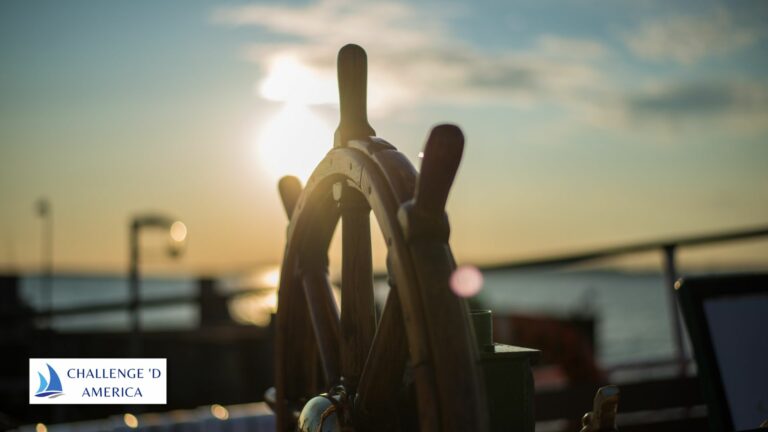
Rudder Types For Sailboats
As a sailor, you know that the type of rudder on your boat can have a big impact on its performance. There are several different types of rudders available for sailboats, each with its own advantages and disadvantages. In this article, we’ll take a look at some of the most popular rudder types and see…

Is It Practical To Live On a Sailboat?
Living on a sailboat can be an incredibly rewarding experience, but it is important to approach it with caution and come prepared for the unique lifestyle changes that come with this type of living arrangement. With the right boat, maintenance and utility management, income plan, and marina, living on a sailboat can be achieved in…
Leave a Reply Cancel reply
Your email address will not be published. Required fields are marked *
Save my name, email, and website in this browser for the next time I comment.
The role of crew positions and duties on a sailboat
Discover the key crew positions and their duties on a sailboat to ensure a safe and enjoyable journey exploring the open sea with your family.
The Role of Crew Positions and Duties on a Sailboat
Sailing is an exciting and fulfilling way to explore the world with your family, but it’s also a complex endeavor that requires a solid understanding of various crew positions and duties. In this article, we’ll delve into the different roles on a sailboat, their responsibilities, and how they contribute to a successful sailing adventure.
Table of Contents
Introduction, watch leader, galley crew, communications officer.
Before we dive into the specific crew positions, it’s important to note that the size and complexity of your sailboat will determine the number of crew members needed. On a smaller boat, one person may take on multiple roles, while larger boats may require a full crew to operate efficiently. Regardless of your boat’s size, understanding the various roles and their duties will help ensure a safe and enjoyable sailing experience.
The skipper, also known as the captain, is the person in charge of the sailboat. They are responsible for the overall safety and well-being of the crew and the vessel. The skipper’s duties include:
- Planning and executing the sailing itinerary
- Ensuring the boat is properly maintained and equipped
- Making decisions regarding navigation, weather, and safety
- Managing the crew and assigning tasks
- Ensuring all crew members are trained and competent in their roles
- Handling emergencies and making critical decisions under pressure
The skipper should have extensive sailing experience, strong leadership skills, and a thorough understanding of the boat’s systems and capabilities.
The first mate, or mate, is the skipper’s right-hand person and is responsible for assisting with the management of the boat and crew. The first mate’s duties include:
- Assisting the skipper with navigation, weather, and safety decisions
- Supervising and directing the crew in their tasks
- Stepping in as skipper if the skipper is incapacitated or unavailable
The first mate should have strong sailing skills, good communication and leadership abilities, and a solid understanding of the boat’s systems and capabilities.
The navigator is responsible for planning and executing the boat’s course, taking into account factors such as weather, currents, and hazards. The navigator’s duties include:
- Creating and updating the boat’s passage plan
- Monitoring the boat’s position and progress using charts, GPS, and other navigational tools
- Identifying and avoiding potential hazards, such as reefs, shoals, and shipping traffic
- Communicating with the skipper and crew regarding the boat’s course and any necessary adjustments
The navigator should have strong navigational skills, a keen eye for detail, and the ability to think critically and make decisions under pressure.
On longer passages, the crew will typically be divided into watches, with each watch responsible for sailing the boat for a set period of time. The watch leader is responsible for overseeing their watch and ensuring the boat is sailed safely and efficiently. The watch leader’s duties include:
- Ensuring the crew on watch is performing their tasks correctly and efficiently
- Monitoring the boat’s course, speed, and sail trim
- Communicating with the skipper and other watch leaders regarding the boat’s progress and any issues that arise
- Ensuring the crew on watch is well-rested and alert
The watch leader should have strong sailing skills, good communication and leadership abilities, and the ability to make decisions under pressure.
The helm, or helmsperson, is responsible for steering the boat and maintaining its course. The helm’s duties include:
- Steering the boat according to the navigator’s instructions
- Monitoring the boat’s speed and adjusting the sails as needed to maintain optimal performance
- Communicating with the crew regarding sail trim and other adjustments
- Keeping a lookout for potential hazards and other vessels
The helm should have strong sailing skills, good communication abilities, and a keen sense of awareness.
Deckhands are responsible for handling the sails, lines, and other equipment on the boat. Deckhand duties include:
- Hoisting, lowering, and trimming sails
- Tying and adjusting lines, such as halyards, sheets, and dock lines
- Assisting with anchoring and mooring the boat
- Performing routine maintenance tasks, such as cleaning and inspecting the rigging
Deckhands should have a basic understanding of sailing and be able to follow instructions and work well as part of a team.
The galley crew is responsible for preparing meals and maintaining the cleanliness and organization of the boat’s galley (kitchen). Galley crew duties include:
- Planning and preparing meals for the crew
- Ensuring the galley is clean and well-stocked
- Managing food storage and waste disposal
- Assisting with other tasks as needed, such as cleaning and maintenance
Galley crew members should have good cooking skills, be well-organized, and able to work efficiently in a small space.
The engineer is responsible for maintaining and repairing the boat’s mechanical, electrical, and plumbing systems. Engineer duties include:
- Performing routine maintenance on the engine, generator, and other systems
- Diagnosing and repairing mechanical, electrical, and plumbing issues
- Ensuring the boat’s systems are operating efficiently and safely
- Assisting with other tasks as needed, such as sail handling and deck work
The engineer should have a strong technical background, good problem-solving skills, and a thorough understanding of the boat’s systems.
The communications officer is responsible for managing the boat’s communication systems, including radios, satellite phones, and internet access. Communications officer duties include:
- Monitoring and operating the boat’s communication systems
- Ensuring the crew is aware of and follows proper communication protocols
- Communicating with other vessels, marinas, and authorities as needed
- Assisting with navigation and weather information
The communications officer should have a strong understanding of communication systems and protocols, good communication skills, and the ability to think critically and make decisions under pressure.
Understanding the various crew positions and their duties is essential for a successful sailing adventure. Whether you’re sailing with a full crew or taking on multiple roles yourself, being well-versed in these responsibilities will help ensure a safe and enjoyable journey for you and your family. As you gain experience and confidence in your sailing abilities, you’ll be better equipped to handle the challenges and rewards that come with living the sailing lifestyle.

Crew Hierarchy on a Sailboat
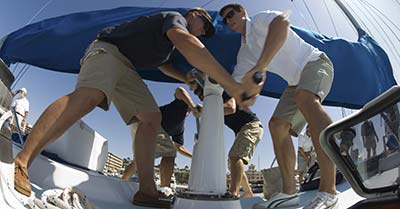
Last Updated by
Capt Chris German
June 15, 2022
A sailboat, like a pirate ship, is a democratic institution. While some may call themselves captain, it is ultimately the crew who gives the commands underway.
That is for good reason. A sailboat is by definition a vessel of leisure. People don’t sail to transport cargo, or transport passengers anymore. Most times a sailboat is underway to show people a good time.
When skippers start to bark orders and assert authority, bad feelings abound. By the time they get back to the dock and it is cocktail hour, a sailboat crew can be pushed to the brink of mutiny if a skipper is not careful.
It is this delicate balance of authority and joviality that makes an OK skipper good and getting everyone back home safely makes a good skipper great.
Table of contents
List of Roles Aboard A Leisure Sailboat
- Commodore
Who’s In Charge?
A Captain of a boat is always the decision maker. Any captain who fails to consult his crew on a sailboat however, whether that decision is to tack the boat or serve spaghetti for dinner, runs the risk of alienating his crew.
Captains who alienate their crew often find themselves sailing alone. Whether that crew is family, friends or worst of all children. A Captain who fails to keep his crew happy is a lonely captain indeed.
On larger vessels, the Captain has substantially more power especially if they are a paid captain and as such licensed. On private sailboats however, the captain, also known as ‘the skipper”, takes a great deal of the responsibility for navigation, ship maintenance and ship operation, but he or she can be overruled by pretty much anyone on the boat because after all, everyone is there for their enjoyment.
On my working boats, I am the captain and what I say goes. On my private voyages however, I am also the captain, but I can always be overruled by my commodore (aka my wife Jennifer).
You’ve heard the phrase, “happy wife, happy life”? That is as true on the water as it is on land. When I make a call to stay out in the nasty weather, I will pay the price. If I make the call to error on the side caution however, I also garner the benefit. Every decision I make is subject to the approval of my crew, which is mostly my wife.
The Next Most Important Person On A Sailboat
While I am the Captain on MY sailboat, there is a role that has even greater importance on my vessel. It is a role that even on charter boats like the ones on TV has supreme importance over most of the crew,( except for navigational matters underway of course).
That is the role of the cook.
You’ve heard of the hand that rocks the cradle? Well I believe the hand that stirs the pot, is the hand that commands the crew. No one has greater authority on most of the boats I have been on, than the person who takes charge of the sustenance of the crew.
Armies have won and lost wars on the basis of their soldiers' stomachs and two or three days at sea, those bellies are beasts to be tamed. A good or bad menu choice can lift the spirits of a disenfranchised rabble or send a crew of well-disciplined midshipmen into mutiny for a poorly timed mutton stew while underway.
The cook is the one who ensures coffee flows in the morning for a crew who kicks back a bit too much rum on the dog watch. It is the cook who offers memories of home with a piece of warm bread or a freshly made cookie. It is also the cook who cleans the dishes and manages the galley and ensures that the captain gets the best cut of roast.
While the captain commands the boat, the cook commands the crew, and the captain is happy to have them there.
The Dog Watchers
This position is just down from the Cook and can serve a couple of roles on the boat.
They are the ones who actually watch the dog to ensure they void properly on deck and wash it overboard. They are also the ones who stay up in the off hours to ensure the anchor stays put and the rest of the crew rests comfortably.
We give them deference because they do the jobs we don't want to do and we show our respect because they allow us to sleep at night.
That is not to say the same people hold this position every night. With a rotating watch schedule, everyone should take a turn on the dog watch. If one person, however, takes the dog watch voluntarily for one night or more, that is on par with the a congressional medal of honor holder and all due respects ought to be levied to such a giving soul for the duration of the voyage.
The next role in the sailing crew pecking order is the crew member who is at the helm.
While this person takes the wheel, they are the most important person on the vessel and may make critical decisions like what is played on the radio and how dinner ought to be served.
It is our responsibility as the crew to make the person at the helm as comfortable as possible so that they will stay on the helm and not force us to take the helm in their relief. Our duties include offering cold drinks, sweaters and sunglasses, sunscreen applications and another cracker or chip as soon as the helm’s mouth stops chewing.
Failure to offer full respects to this position could and often does lead to you taking over the helm for long periods of time with no one paying attention to you, while you suffer starvation and thirst. Accordingly that is why you should never ignore the needs of the helm.
A Note on The Commodore
As previously stated, my wife Jennifer is the Commodore on our vessel and as such receives the highest honors the crew and I might muster.
While she takes no responsibility for the safe navigation of the vessel, she has the power to criticize all my decisions I hand down as the captain and can usually send in course corrections with a disapproving glance or stare.
She oftentimes will double down on her authority standing in as cook while she holds the title of commodore and it is at these times she the most benevolent. She allows me to do the dishes at the end of a meal and thereby returns a little of the authority to which I am entitled as the Captain.
While I am unsure if this practice is standard on all boats, I am quite certain that all happily married captains have learned how to negotiate the power structure on their own vessels and have or at least should have given their wives due deference while underway.
The Captain Is Always Right
Whoever came up with that saying obviously wasn’t the captain for long. Captains who wander around asserting their rightness often will find out how wrong they really are when their crew leaves them.
The worst captains are those who think they are nice, but turn into Ahab when the winds pick up or the docking gets difficult.
If you are a captain who loses his cool and becomes an Ahab, I can only suggest that you should take some time and build your confidence underway before you alienate your entire crew. Many fathers have bought a boat and wanted to teach their kids to sail, but by becoming Ahab, pushed the kids away from sailing.
A lesson or two might fix that. Thanks for reading, do good, have fun and sail far.
Related Articles
Capt Chris German is a life long sailor and licensed captain who has taught thousands to sail over the last 20 years. In 2007, he founded a US Sailing-based community sailing school in Bridgeport, CT for inner city youth and families. When Hurricane Sandy forced him to abandon those efforts, he moved to North Carolina where he set out to share this love for broadcasting and sailing with a growing web-based television audience through The Charted Life Television Network.
by this author
How to Sail

Most Recent

What Does "Sailing By The Lee" Mean?
Daniel Wade
October 3, 2023

The Best Sailing Schools And Programs: Reviews & Ratings
September 26, 2023
Important Legal Info
Lifeofsailing.com is a participant in the Amazon Services LLC Associates Program, an affiliate advertising program designed to provide a means for sites to earn advertising fees by advertising and linking to Amazon. This site also participates in other affiliate programs and is compensated for referring traffic and business to these companies.
Similar Posts

How To Choose The Right Sailing Instructor
August 16, 2023

How To Sail From California To Tahiti
July 4, 2023

How To Tow A Skier Behind A Boat
May 24, 2023
Popular Posts

Best Liveaboard Catamaran Sailboats
December 28, 2023

Can a Novice Sail Around the World?
Elizabeth O'Malley

4 Best Electric Outboard Motors

How Long Did It Take The Vikings To Sail To England?

10 Best Sailboat Brands (And Why)
December 20, 2023

7 Best Places To Liveaboard A Sailboat
Get the best sailing content.
Top Rated Posts
Lifeofsailing.com is a participant in the Amazon Services LLC Associates Program, an affiliate advertising program designed to provide a means for sites to earn advertising fees by advertising and linking to Amazon. This site also participates in other affiliate programs and is compensated for referring traffic and business to these companies. (866) 342-SAIL
© 2024 Life of Sailing Email: [email protected] Address: 11816 Inwood Rd #3024 Dallas, TX 75244 Disclaimer Privacy Policy

- GoPro HERO12 Black - Waterproof Action Camera with 5.3K60 Ultra HD Video, 27MP Photos, HDR, 1/1.9" Image Sensor, Live Streaming, Webcam, Stabilization
- FitStill 60M/196FT Waterproof Case for Go Pro Hero12 Black/Hero11 Black/Hero10 Black/Hero9 Black,Protective Underwater Diving Housing Shell with Accessories for Hero12/11/10/9 Black Action Camera
- Insta360 X3 - Waterproof 360 Action Camera with 1/2/'' 48MP Sensors, 5.7K 360 Active HDR Video, Bundle with Invisible Selfie Stick, Lens Cap, Carrying Case, Screen Protector
- Waterproof Case for Insta 360 one X3 Action Camera, Underwater Diving Protective Housing 40M with Bracket Accessories

Want to Volunteer Crew on a Sailboat? What You Need to Know
This post contains affiliate links. The Salt Sirens earns from qualifying purchases.
So this is it. You’ve decided to take a Sabbatical year, you want to travel the world after graduating from university, or you’ve left your job to discover new continents before embracing a new career. So many women young and old dream of learning how to sail, discovering remote islands, frolicking on white beaches under coconut trees, exploring luscious jungles, foraging for lunch, and living a life of freedom and adventure at sea.
Some of these women are contemplating buying their own sailboat at some point, but first want to learn the ropes of the craft. Others women want to travel only by wind due to ecological considerations. All of these future novice (this is what beginner crew are called) female crew are enthusiastic, optimistic, trusting, and willing to work hard to live their dream.
Table of Contents
What is volunteer crewing?
Voluntary crewing on boats, where you participate in navigation tasks and chores in exchange for a berth and traveling experience, has grown exponentially since the mid 2000s as more people started to travel the world in this way. Websites where captains could find crew, like Crewbay.com, Findacrew.net, Crewseekers.net, and Facebook groups dedicated to crewing welcomed more and more members, for better or worse, since little vetting is done on these websites. (This combination of high membership numbers and little vetting has had consequences in terms of safety, especially for crew). Thousands of people have therefore started to experience the joys of a life at sea, either as a captain, finding fast help to hold watches, polish the cockpit, or clean the hull, or as crew enjoying discovering the pleasures and challenges of navigation.
The risks of crewing as a woman
This all sounds amazing and doable indeed, but , it is important to mention the risks, especially for women and girls (some start these adventures in their late teens). Hundreds of voluntary crew, unfortunately unaware of these dangers, went through very traumatic experiences as a result of these risks not being mentioned on these platforms. The lack of vetting and follow-through with platforms have put some women at risk. Some were sexually assaulted by predatory captains. Like Hans Klaar , who was convicted for rape in 2011 and was found recruiting female crew in 2021 on Crewbay, where he then assaulted three of them. More recently, one woman has disappeared after joining a boat that was later found gutted by fire. This month, three separate sexual assault charges against sailboat captains in French Polynesia have been issued. The list goes on.
Being on a stranger’s boat, far away from home, sometimes in the middle of the ocean, depending on him for security, schedule, workload, or even food can be very dangerous if you are with an unstable or predatory person. Far from wanting to scare you adventurous ladies, it is important to be aware of these dangers. Unfortunately, stories of intimidation and assault by aggressive captains are not rare, and rarely are these stories posted in the media. I am trying to change this with a collection of victims’ testimonies and the Facebook group called “Sailing Safety for Women” I’ve created.
So, first of all, why don’t we hear about these stories? Well, as a start, because the victims are traumatized and ashamed. The abuse they went through is so harmful to their mental health, most of the time, that they do not want to recall the events by speaking about them with anyone. They want to forget. Also, they are ashamed of having been “tricked” by these toxic captains into joining a boat where they thought they would live a beautiful adventure with a man with high ethical standards and respect for women, as often we wrongly believe sailboats’ captains to be.
They quickly realized that this person who was charming on Crewbay, Findacrew, Facebook (there are many crewing groups on Facebook) and then WhatsApp, was in fact a manipulative person who succeeded in luring them to his boat in order to try and obtain sex from them, or be gravely abusive. Because they had no idea that this type of manipulation even existed, they feel guilty of having been victimized, which of course is not their fault at all. Sometimes, they were even threatened by the abuser with retaliation if they spoke out.
Lastly, isolated, far from home, vulnerable psychologically, sometimes not speaking the local language and/or having spent fortunes in order to reach the sailboat, they are in no position to try and press charges locally, which is required in most cases for a file to be opened. They therefore bury the trauma and try to live with it. As a result, no journalist has been truly made aware of the prevalence of this phenomenon. Now, more victims are speaking up, and the leisure sailing world cannot ignore them any longer.
Safety tips for crewing on a sailboat
So, how can you prevent this from happening to you? Well, we, as a collective of victims of such captains’ abuses and crimes, have developed a whole list of in-depth safety precautions and steps that volunteer female crew can find on the Facebook group, “ Sailing Safety for Women .” We also have a registry of recommendations with reported toxic captains registered, as well as safe and supportive ones. You can consult it via the group in exchange for a donation, as managing the group is a full-time job.
Read the full list of Sailing Safety Tips
Never embark on a sailboat alone
The golden rule is to never embark with a captain alone . The only exception would be if you know him extremely well, and have sailed with him on his boat before. In many cases, captains who are charming and well-loved on land may turn out to be tyrants after a few days at sea, sometimes putting crew’s lives at risk. If you haven’t, always ask to bring a crewmate with you (find one on crewing Facebook groups), or ask to be put in touch with the other crew foreseen prior to embarking. Do not embark alone, even if the other crew cancels: Some captains have indeed been lying about other crew coming in order to be alone with a female crew they’ve recruited. Unfortunately, assaults have happened on boats with couples or even families, so always be on your guard and self-aware. Avoid drinking alcohol on board, at least until you are sure that the atmosphere is healthy and the captain is safe. Once the energy is clear and boundaries for all are secure, you can feel more at ease.
Do not blindly trust crewing platforms and websites
Do not rely on platforms like Crewbay.com or Findacrew.net to weed out abusive captains.
In a testimony to Maritime Legal Aid , one woman (“C”) states, “I was assaulted by a captain and afterwards I reported him to Crewbay.com, the site where he found me. The reaction I received from Crewbay.com was very problematic, and they refused to do any prevention to curb those assaults despite me and other victims asking repeatedly for a year.” The woman then went to report the captain to Findacrew.net to alert them of the captain, where he was allowed continue posting crew recruitments.
Crewbay also refused to publish negative reviews written by former crew members, leading to more women being victimized by the captain.
Editor’s note : After more than a year of victims and advocates asking Crewbay to publish safety precautions alerting female crew of the risks of sexual assault and sexual harassment while crewing on sailboats (there were none on the website since its inception in 2004), Crewbay finally agreed to publish general safety tips. However, their safety tips do not cover the risk of sexual violence towards women and there have been no change to the platform. The specifics of this include users needing to tick a box stating they’ve read through these general safety tips. Victims must show a police report to have the captain removed, a major problem as most victims do not file police reports in fear of retaliation. The onus is once again on the victim to n ot get assaulted rather than the captain to not assault .
Watch for red flags
Reject captains who are looking for novice or lone female crew, request you be okay with nudity in advance, won’t provide references, asks for photos of you in a swimsuit, sends flirtatious messages, or won’t provide proof of their identity and credentials. When communicating, be clear in your expectations. What is the expected food cost? Will fuel and any customs costs be shared? What duties are expected of crew?
Do your due diligence with the safety precautions provided in the “ Sailing Safety for Women ” Facebook group, and don’t hesitate to offer advice everywhere you see female novice crew post, looking for their first sailing experience. They need to be informed as well. Lastly, we need to stand in solidarity with the victims, and demand crewing platforms and Facebook groups that they do everything they can to stop abusive captains stop from victimizing crew in total impunity, as is the case at the moment.
Leila Gold is the admin of the Facebook group “ Sailing Safety for Women “ and an advocate for more safety and well-being for voluntary and professional crew on leisure sailboats. She has been sexually assaulted by a captain found via Crewbay.com on the first evening of her first crewing experience and has since then helped dozens of victims, and warned thousands of female crew about these dangers thanks to her Facebook group. If you wish to support her work, contributions to Sailing Safety for Women Patreon are greatly appreciated.
SimonTheSailor

Crewing On A Sailboat
So whats it like crewing on a sailboat for days/weeks/months at a time with people you may never have previously met ?
It obviously helps if you have something in common like sailing for instance, always a good start !
Think about it, you will be joining a boat and living with people in close proximatey for a LOT of the time. Its not like you can go home after a bad days work or go down the pub for a few to get away from people.
You have to be tolerant of others. Respect each others space. Respect each others privacy when they need it. Work as a team whethers its in sailing the boat, cleaning the boat, doing the cooking, getting to/from the shore in the dingy, provisioning the boat, etc,etc.
If you get onboard with a bad attitude of any kind you will SOON be off !! In fact if you get onboard with any sort of attitude you will soon be off. Skippers aren’t always the most tolerant of people and rightly so.
You will be joining their boat, their pride and joy, maybe their home, something they may have invested heavily in, their life savings ? sold their house ? blown their retirement lump sum on ? Something they maintain religiously for the safety of all those on board and for other seafarers.
Next thing some ‘know-all’ turns up telling the skipper what he should do, or somebody who never listens to instructions, or somebody who wants to sit back and enjoy the views without doing their fare share of anything. Well its not going to work, plain and simple.
Put yourself in their shoes – what would you expect of somebody you have invited onboard your boat ? Enthusiasm ? Willing ? Ability to listen ? Take instructions ? Contribute ? Correct.
One thing you will get a bit of kudos for is if you have been on a sailing course (if you’re not already a sailor). You do see some adverts requesting crew quoting that ‘no experience required – all training can be given’ but do you really want that on what might be one of your first times out ? How good a training might you get ? They may well be a brilliant sailor, done 200K+miles at sea, but are they a good teacher ? Conversely they may not have done too much sailing but might be brilliant teachers.
Do you want to take the risk ? You owe it to yourself to be safe on board. You also owe it to others to be safe on board.
You could start with a course at your local sailing school, the beginners/foundation course is commonly called the Competent Crew course. This teaches you the skills you need to be a competent crew member, ropework, adjusting sails, manouvering the boat, understanding of fire precautions, personal safety and emergencey equipment, all but a few of the things you will be taught in the week long course.
The course is run by the RYA, one of the most respected sailing organisations in the world – see their website for more details –
http://www.rya.org.uk/Pages/Home.aspx
I would suggest its a minimum starting point, at least you can see if you like it or not !
Some boat owners require more than this, RYA Day Skipper, RYA Coastal skipper, or even the most respected qualification the RYA Yachtmaster before considering you for their boat.
There are other internationally recognised organisations who also supply training and qualifications like the IYT
http://www.iytworld.com/
Please check your local sailing organisation for advise. Lets not forget that your own local sailing club/school will be an invaluable source of information/help.
Hopefully some of the information above has been helpful in deciding if life on a boat (or for any extended period) is for you !!
SimonTheSailor.
Share this:
Leave a reply cancel reply.
Your email address will not be published. Required fields are marked *
Notify me of new posts by email.
This site uses Akismet to reduce spam. Learn how your comment data is processed .
Travelling the world by sea……..(and a bit of land)
We’re on the road right now – join in on the fun and follow @thebrokebackpacker on IG!
- Meet the Team
- Work with Us
- Czech Republic
- Netherlands
- Switzerland
- Scandinavia
- Philippines
- South Korea
- New Zealand
- South Africa
- Budget Travel
- Work & Travel
- The Broke Backpacker Manifesto
- Travel Resources
- How to Travel on $10/day
Home » Budget Travel » Sailing Across The Pacific: The ULTIMATE Sailboat Adventure! (2024)
Sailing Across The Pacific: The ULTIMATE Sailboat Adventure! (2024)
A freshly caught tuna sizzles in sesame oil. The Milky Way is so clear, you feel like if you just reached your hand a little further you might just touch the stars. Waves lap against the hull, and that’s about the only sound you hear.
This is how I remember sailing across the Pacific Ocean . Nostalgia hasn’t rose-tinted all the memories, though. There was still the maddening autopilot who gave up the ghost only twelve days into a month long passage (you little @#*!).
Crossing the largest ocean on earth by sailboat is no easy feat, but it brings with it an elation and joy that is unique to offbeat travel. No one can take away the fact that you did it. You crossed an ocean.
Now, what does it take to sail across the Pacific Ocean? Just a good floating tin can with some sails and enough coffee to kill a bear. 😉 Kidding aside, I strongly believe that with good preparation and training, anyone can learn to sail and cross the Pacific Ocean.
You just need:
- The best routes
- Some juicy inspiration
- Practical tools and tips to prepare your boat (and your crew)
And that’s where I come in! So let’s get into it – let’s get you ready to cross the Pacific Ocean by sailboat!
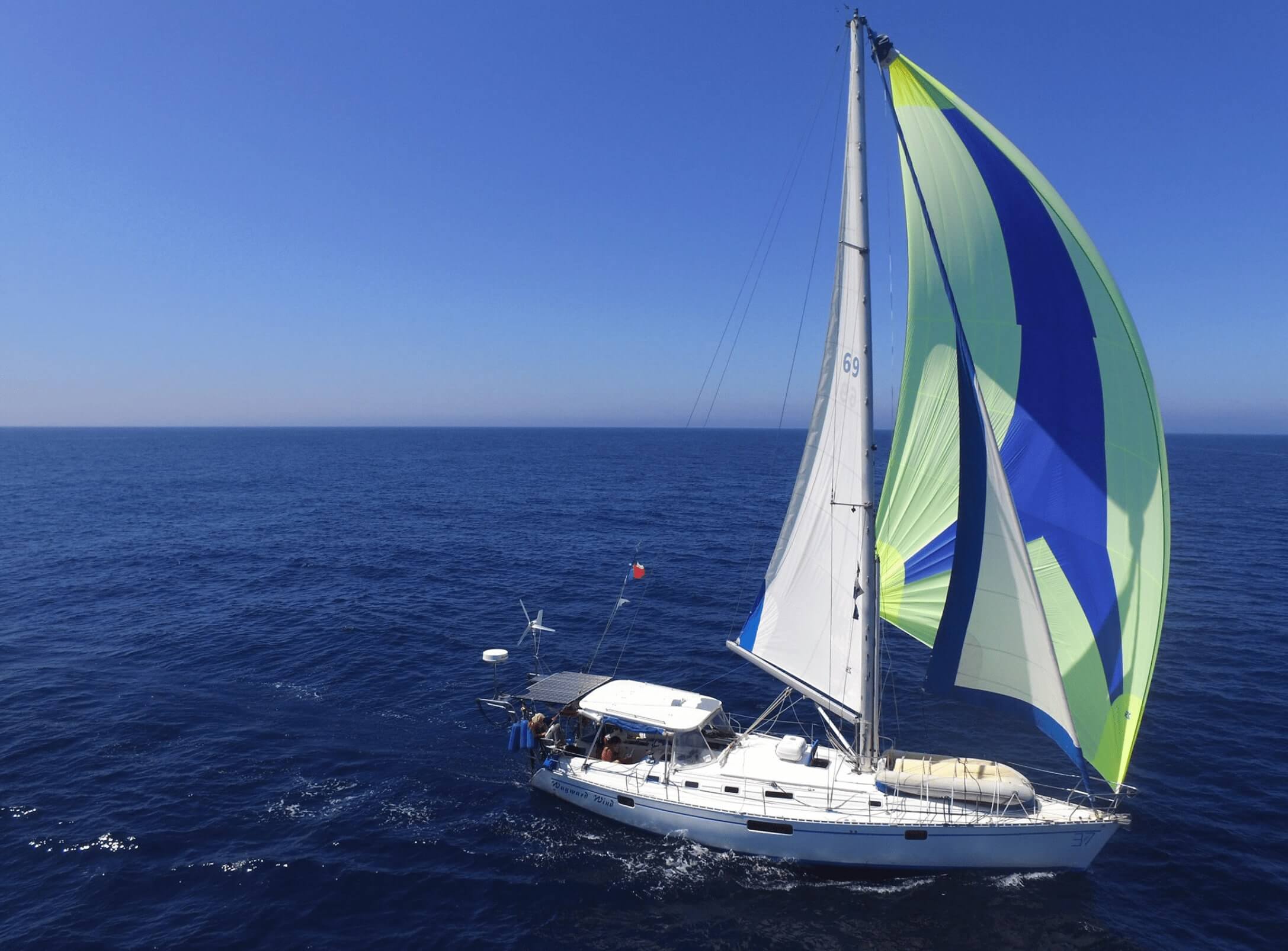
Crossing the Pacific Ocean in a Sailboat – WHY?
- Sailing Routes Across the Pacific(and how long they take)
Oh, the Places You’ll Go (during your Pacific passage)
When to jump the pacific puddle (so you don’t die), what you will need to cross the pacific ocean by sailboat, faqs about sailing across the pacific, final thoughts on sailing across the pacific.
What kind of maniac dreams of sailing across the Pacific? What kind of person puts thousands of nautical miles between them and the nearest semblance of land?
The Pacific Ocean has been singing a siren song promising palm trees, balmy weather, and peaceful winds for centuries. You’re completely unplugged – so no damn Instagram! For many sailors – veteran and greenhorn alike – it is the ultimate, goldilocks cruising grounds.
“The principal difference between an adventurer and a suicide is that the adventurer leaves himself a margin of escape.” – Tom Robbins
To cross the Pacific Ocean by sailboat represents an accomplishment that no one can take from you. It is indeed an adventure of epic proportions. Long night watches, daily face-offs with the elements, fixing the umpteenth broken thing… it is no easy feat! But anyone with a little preparation and a bit of know-how can leave themselves a margin of escape.
With a little initiation into the trials and tribulations of boat life , a cornucopia of experience awaits the adventurer who sails across the Pacific.

Unlock Our GREATEST Travel Secrets!
Sign up for our newsletter and get the best travel tips delivered right to your inbox.
Sailing Routes Across the Pacific (and how long they take)
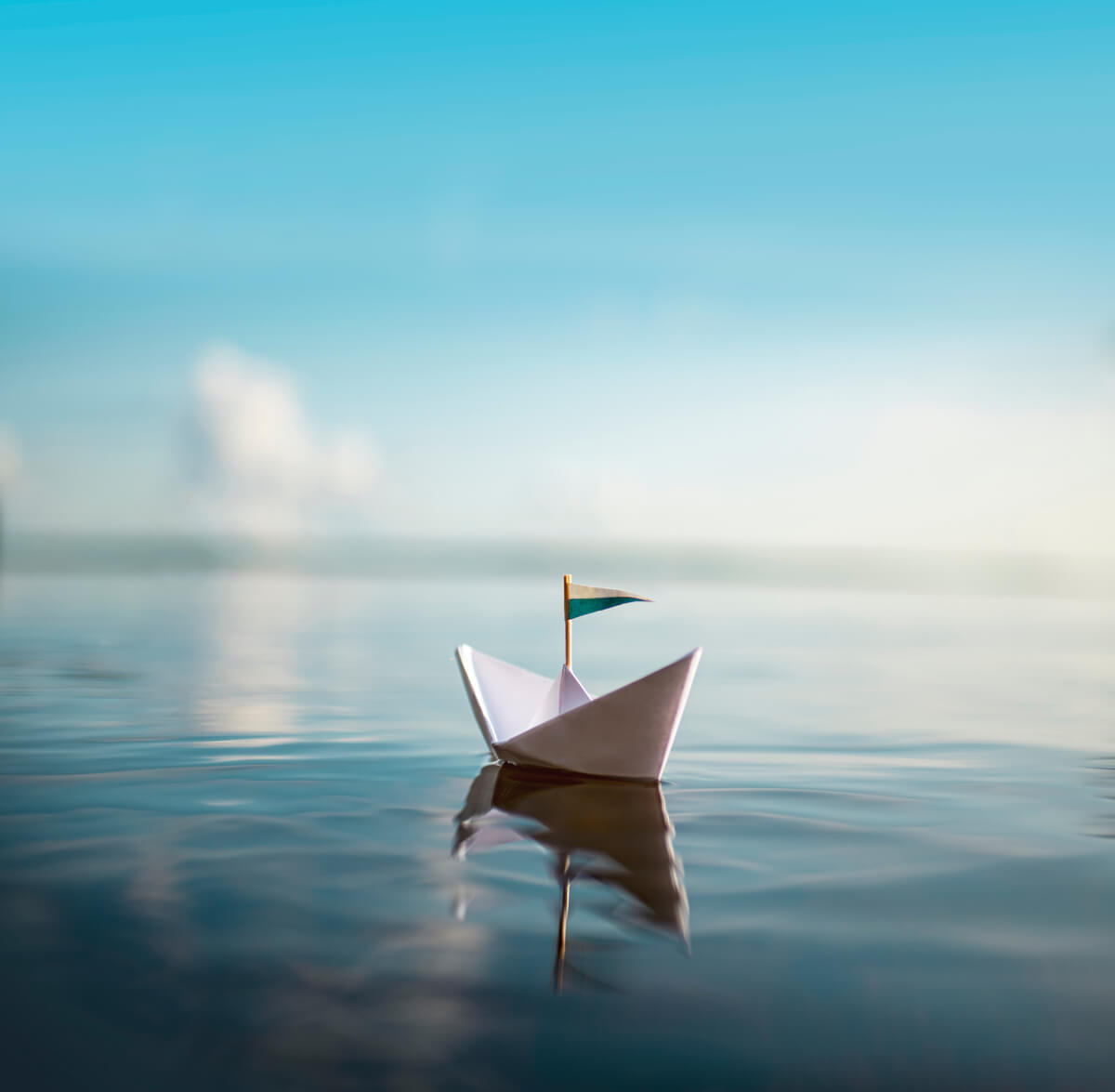
The sailor knows that there is no point fighting the wind. So, a successful passage across the Pacific depends on good winds. Generally speaking, this lends itself to an east to west crossing.
All good boat plans are written in the sand at high tide, so of course, there are some deviations from the popular route. But, there are still vague targets and timelines that guide your Pacific Crossing.
Sailing the Pacific Ocean from East to West – The Coconut Milk Run
From the moment Magellan stuck his nose out from Panama and declared it Mar del Pacifico , this is the route sailors have favoured.
Your trip can begin with a little visit to Panama , heading south to charge through the notorious ICTZ, and riding the south-easterly trades all the way to French Polynesia. Some will stop in and travel the Galapagos, others will charge on through. This passage can take anywhere from 23 to 40+ days in a sailboat.
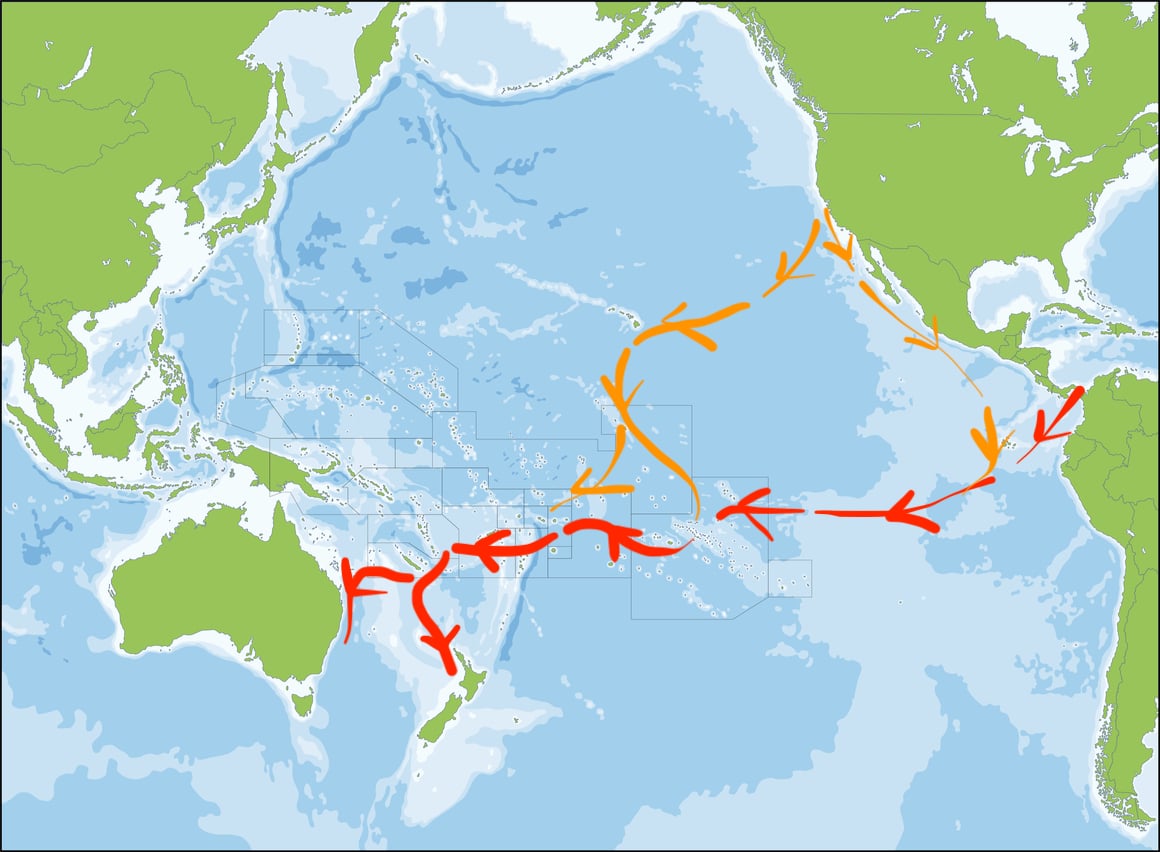
There are variations on this Coconut Milk Run. You can set off from Mexico or Ecuador, for example. Maybe this is part of a larger circumnavigation and you’re fresh off a season in sailing the Caribbean or an Atlantic Ocean crossing.
You can go onwards to Australia and New Zealand, or get stuck in the South Pacific. Even going on to travel Southeast Asia , or India, are not out of the question for the brave circumnavigator.
Wherever your starting point is in the east, you will spend a month (give or take) without seeing land. Just you in your tiny boat-universe traversing the sea and the stars.
Sailing the Pacific Ocean from West to East
Call me lazy, but this is a hard slog. Nothing is ever impossible, but you’ve got to have some patience with the winds to sail across the Pacific Ocean from west to east. If the early Polynesian navigators can do it, though, so can you and your tin can.
The three main options for sailing from west to east are:
- The “Direct Route”
- The Roaring Forties
- The Northern Route
Ok, I lied – I would love to do the Roaring Forties passage! Anyway, this is not about Indi’s Secret Planning to Cross the Pacific Ocean Again. This is Serious Writer Business.
So, the Direct Route has the disadvantage of it being primarily upwind. But if you’ve got a well-prepared boat – and well-prepared crew – it can be fast and exhilarating.
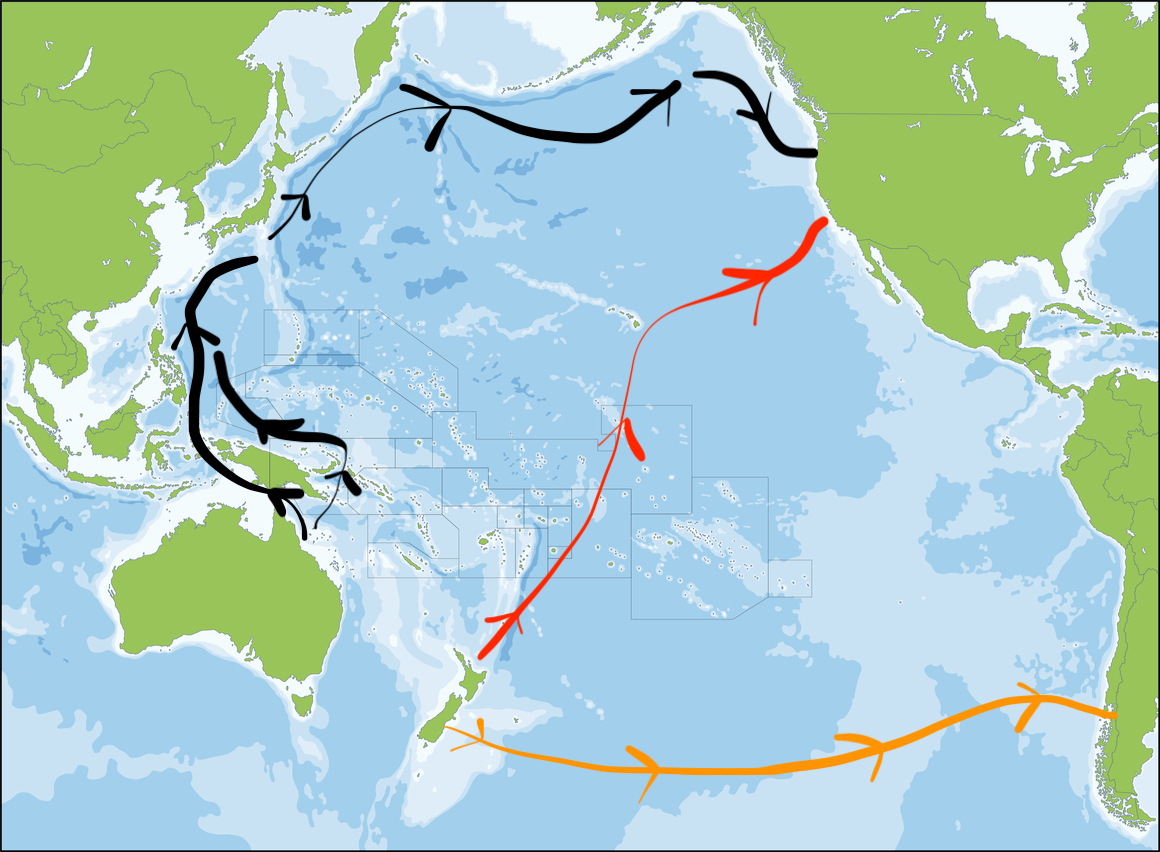
The Roaring Forties has broken stronger sailors than me. It’s a long passage – 40 to 50 days . Extreme latitudes and rolling seas mean you need a well-stocked boat – and hardy crew. Also, the point of cruising the Pacific is usually balmy weather. There’s not a lot of balmy weather down there, mate. But if you can hunt around for the right latitude, it’s downwind sailing (yay)!
And then there’s the Northern Route. Basically, this is several smaller passages up through the Coral Sea, through Southeast Asia and Japan, and then across the Northern Pacific. An EPIC bucket list adventure if I ever dreamed of one! You can hunt around for good wind on this passage, but again, you’ll need a resilient crew and boat ready to take on the many nautical miles to be covered.
If we look at a map of the Pacific Ocean, you’ll notice it’s mostly blue. On one side is the Americas, and somewhere over there is Australia and New Zealand.

But scattered across this great blue spectacular, are various incarnations of paradise on Earth. Oh, the Pacific Islands! You marvellous little delights full of genuine offbeat travel!
Sailing in French Polynesia
After travelling Panama, or elsewhere in the Americas, you’ll likely arrive in French Polynesia .
There are three main groups of islands. There are the Marquesas, the Tuamotus, and the Society Islands. Your first port of call after the big crossing is likely going to be the Marquesas.
The Marquesas are epic volcanic islands that tower over deep waters. There is some cheeky hunting and epic hiking here, as well as cheap baguettes. It blew my mind that in the middle of the Pacific there was cheap, French bread!
However beautiful these islands are, though, the stereotypical shallow, blue waters teeming with coral reefs are not here.
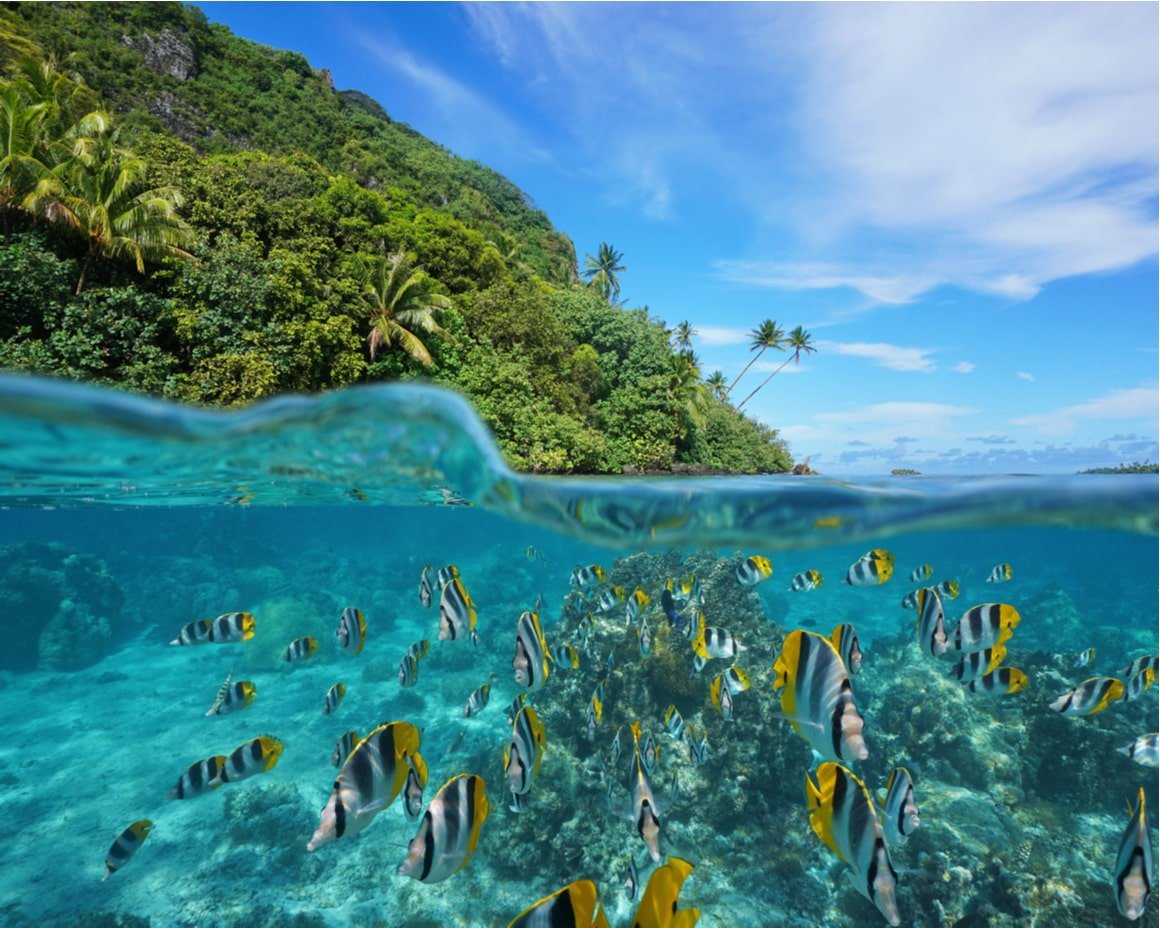
You must press on to the Tuamotus and Society Islands for that. I reckon you could get lost in the Tuamotus for a lifetime – as long as the freshwater doesn’t run out.
The world’s best scuba diving, spearfishing, and lazy hammock days are your juicy reward for crossing the world’s greatest ocean! Not too shabby.
Sailing in the Cook Islands
The Cook Islands Exclusive Economic Zone (EEZ) is 2 million square kilometres! You can’t expect to know this series of islands intimately in just one visit. Still, good fishing, chatty locals, and picturesque islands make it worth sailing through. Travelling to the Cook Islands (and briefly becoming a mermaid) may be just what you need to avoid travel burnout .
Palmerston Atoll is only able to be reached by boat. It is a series of islets whose inhabitants can all be traced back to one man – William Marsters. Island time becomes more prominent the further away from continents you get. So by the time you get to Palermston Atoll, you can throw your watch overboard!
Throughout the Cook Islands, a slow tempo to living is the norm. Expect to chat lots with strangers, explore uninhabited islands, and wonder why you’d ever return to “normal” life. If I ever end up on the run, don’t go looking for me (or my mermaid look-alike) in the Cook Islands! 😉
Sailing in Fiji
As you continue your westward sailing across the Pacific, you will probably make a stopover and stay in Fiji .
Fiji is a bit of a crossroads within the Pacific. It is both Polynesian and Melanesian, and it is also home to a large Indian diaspora. While much of the Pacific escaped a strong colonial presence, Fiji did not. Along with its own kingdoms and chiefdoms, the British stuck their nose in and left a muddy footprint on Fijian culture.

The British chose the rainiest place in the Pacific as the capital of their colony – Suva. Because of course, they did. Suva will probably surprise first-time visitors – it’s fewer palm trees and coconuts and more traffic and nightclubs.
Suva aside, the rest of Fiji is as remote and gorgeous as you’d expect the Pacific to be. Sailing through Fiji is a reminder that the Pacific is as complex as the rest of the world – it just has more white sand beaches!
Sailing to New Zealand
If you make it to New Zealand, pat yourself on the back! You crossed the Pacific freaking Ocean – fuck yeah!
If you take the east to west passage across the Pacific, chances are you’ll end up in Aotearoa, New Zealand. The kiwis are pretty comfortable with their status as a Pacific Island. Along with the first real supermarkets on this side of the Pacific, there are familiar smatterings of Polynesian culture.

Dammit New Zealand, you’re pretty freaking sweet! Road tripping around New Zealand is bloody dreamy: the hiking and the mountains are off the charts, and the people are just so friendly! If there were ever a sticky place to tempt my wandering feet to settle down, it’d be New Zealand. Plus, the diving is pretty great .
Some sailors choose to sell their boats here. Some choose to slow down and spend a season working or exploring New Zealand. Eventually, most sailors have to move on. Travelling to New Zealand is a very special experience that will have most sailors scheming about how to get back!
Sailing to Australia
Maybe you bypassed New Zealand and came straight across the Pacific to Australia. Maybe you added crossing the Tasman Sea to your growing list of sailing achievements. However you made it, and whatever customs form you had to fill out to prove it, you arrived in Australia – the famed Land Down Under.
A pretty epic continent is bound to get under your skin. She’s bold, she’s beautiful, and she’s stinking hot! There are countless incredible adventures to be had in Australia!
Australia is less keen on embracing its geographical status as a Pacific or Asian country. It’s a whole different kettle of fish down under, mate.

There are sweet Australian road trips , and working opportunities abound for the boat bum. You can easily restock the cruising kitty for a season before continuing your sailing circumnavigation. There’s also a pristine and sparsely populated coastline good for nothing but surfing and sailing!
I reckon the reason you don’t see too many Australian sailors around the world is that they see no reason to leave their beautiful home.

Wanna know how to pack like a pro? Well for a start you need the right gear….
These are packing cubes for the globetrotters and compression sacks for the real adventurers – these babies are a traveller’s best kept secret. They organise yo’ packing and minimise volume too so you can pack MORE.
Or, y’know… you can stick to just chucking it all in your backpack…
Danger is a relative concept. Crossing the street and driving a car is dangerous, but we all do it every day. Crossing the Pacific Ocean can be dangerous, but you can mitigate those risks.
People always ask me how bad the weather was at sea. Were there storms? They don’t ask about keeping healthy while travelling, breakdowns at sea, or navigation nearly as often. A storm holds a captivating spot in our psyche – and for good reason.
It’s worth remembering that your boat is probably stronger than you. You shouldn’t get into your life raft until you are stepping up into your life raft. Extreme situations aside, there are safer times to cross the Pacific! And more comfortable times too. So when is it best to sail across the Pacific Ocean?
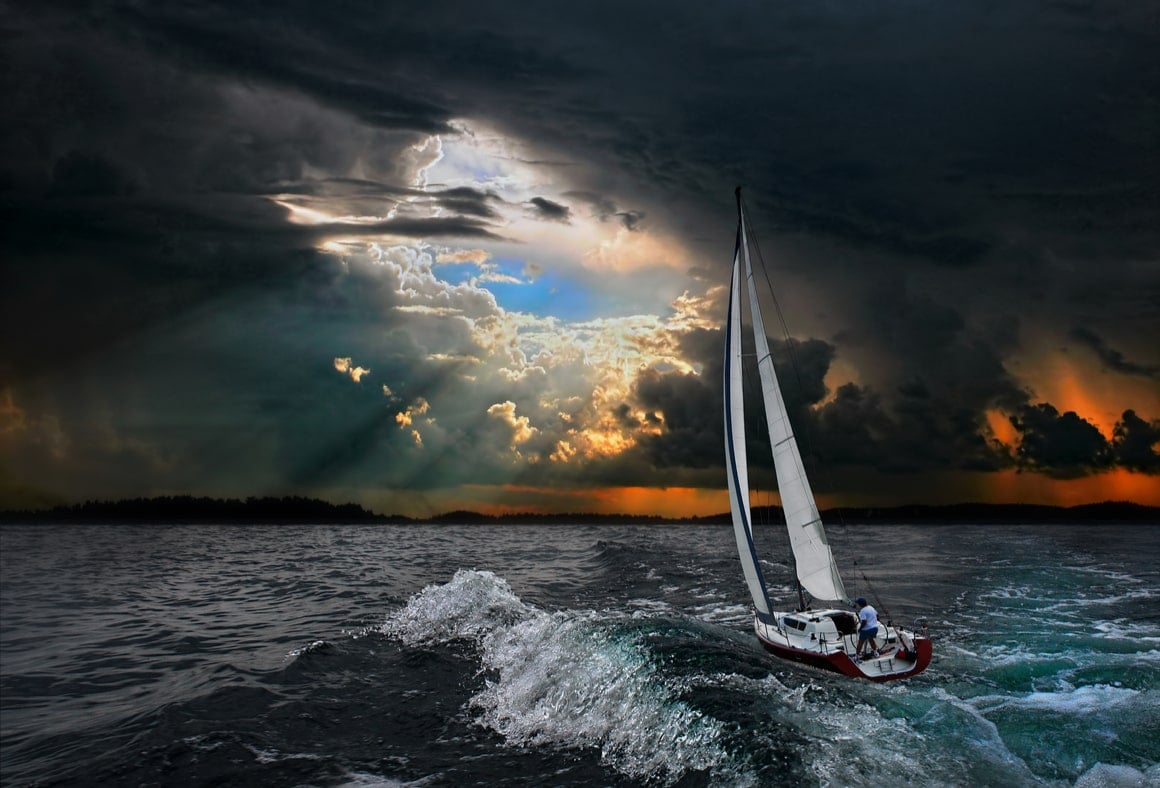
The boat sinking storms are concentrated in hurricane or cyclone season. Luckily, these seasons are quite well known now. If you are in the South Pacific between November and April, your chances of a cyclone are high. But, come May, the odds drop to almost zero. Cyclone season in the North Pacific and the Caribbean is June through November.
With this in mind, the best time to sail across the Pacific Ocean becomes clearer. If you leave Panama around March , you will arrive in the South Pacific right at the beginning of the best cruising season. You will also avoid the cyclone season of the Caribbean.
There’s no point fighting the winds, man!
You need a sailboat that is stem to stern ready. You also need a crew that is in tip-top shape and mentally prepared for the long passage ahead. Realistically, anyone who is prepared can take on sailing across the Pacific Ocean. But what does it look like to be prepared?
The Trial by Sailboat – LIVEABOARD EXPERIENCE!
Before literally chucking yourself in the deep end by sailing the Pacific, why not rent the boat life? Try your hand at skippering a sailboat bareboat (without captain or crew) so you can stress-test yourself as a sailor. Sailo lets you do exactly that!
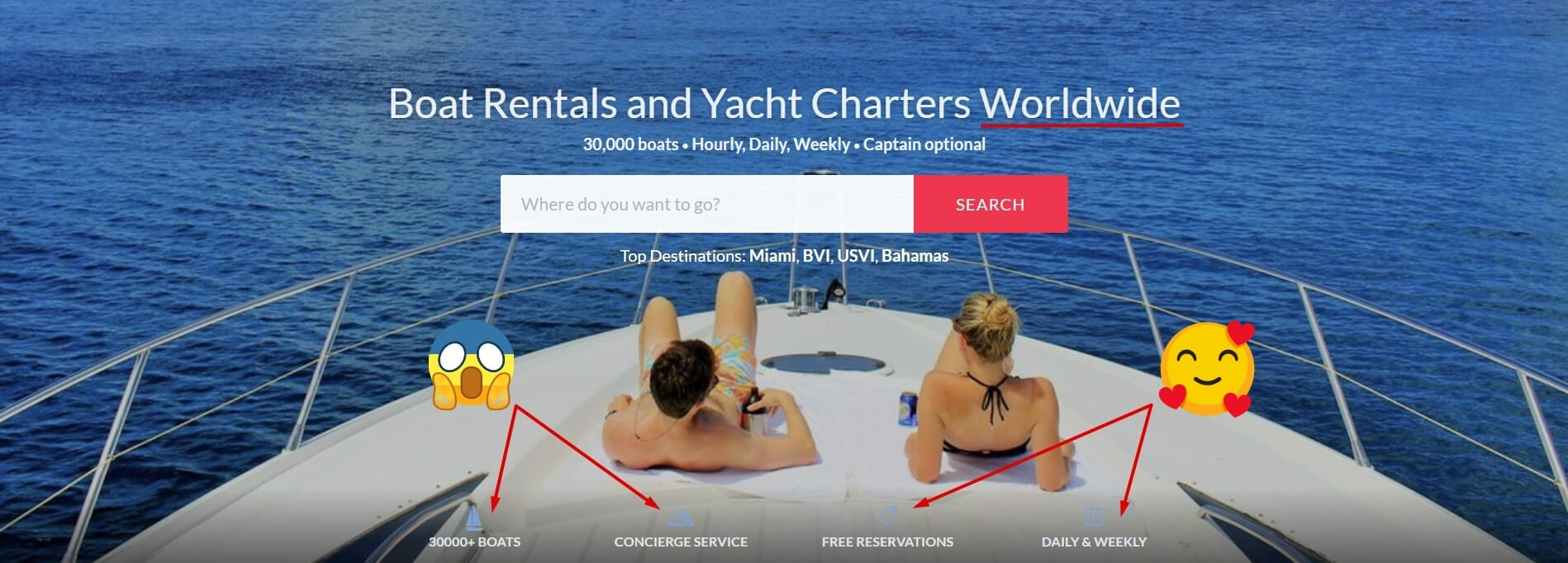
You can rent one of over 30,000 boats. If you’re not up to skippering your own boat, then kick back on one of the many catered charter boats on offer! You’re guaranteed to find something suitable and have a splashing good time in the best places in the world to sail.
It’s not the most hardcore jump-in-the-deep-end training for your Pacific passage, but having a taste of the boat life is probably a good idea! It’d be a bit awkward if you got halfway across the Pacific only to realise this whole boat life wasn’t for you.
Boat System Preparation
Being prepared to sail across the Pacific Ocean means knowing your boat at least as well as you know your smush buddy.
I like to remember that a day spent preparing in the dock is worth a week at sea. When you walk around your boat, ask yourself: how likely is this to break, and if this broke, could I fix it? Preparing systems and the backup systems to backup systems is all part of your preparation.
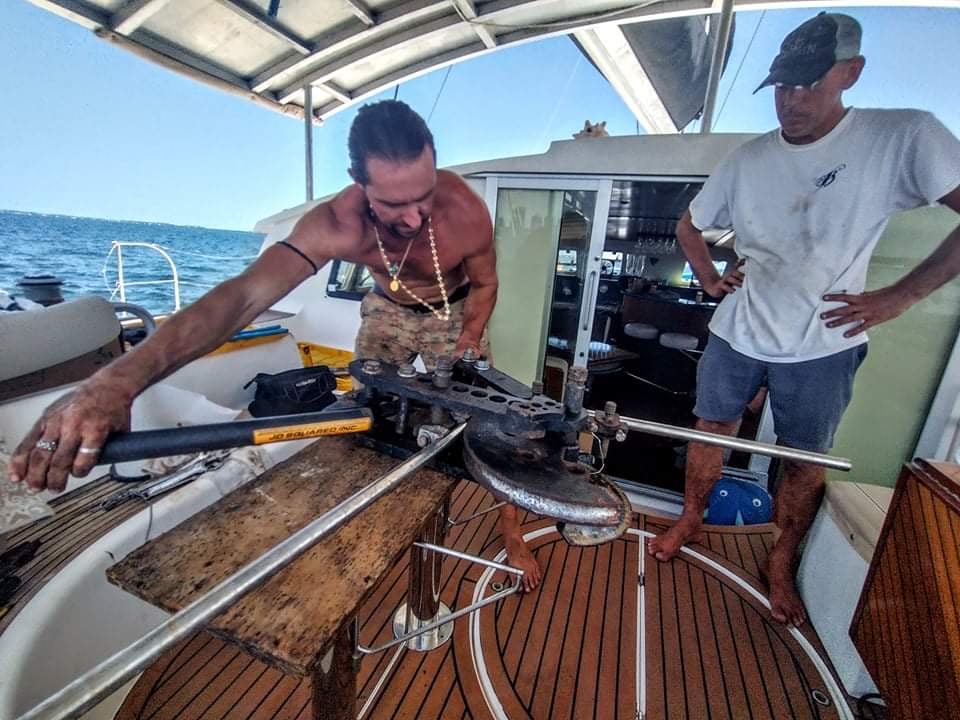
Ultimately though, you need to be flexible. You might not leave port knowing how to sew anything more than a button to your pants. But if push came to shove, you would learn real fast to mend your sail.
Knowing how to use both charts and electronic navigation is useful. Keeping in touch via the radio is also a useful – and fun – way of getting weather and gossip. Nothing says boat life like a radio crackling to life somewhere off the coast of Ecuador.
“Hola amigo, cual es tu posicion? Y cuidado con los monstruos!” It’s the first voice you’ve heard in over nine days that didn’t originate from you or your crew. It’s a comfort knowing there’s someone else out there also afraid of the sea monsters!

Essentially, being prepared is about organisation and organisation is about lists.
- Galley lists
- Maintenance lists
- Medical supplies list
- Weather lists
- Reading lists
Aside from adequate supplies, navigation and maintenance know-how, you need to have an adequately prepared crew.

Things go wrong on the road ALL THE TIME. Be prepared for what life throws at you.
Buy an AMK Travel Medical Kit before you head out on your next adventure – don’t be daft!
Sailing Solo Across the Pacific?

An adequate crew may look like just you, yourself, and you. That pun didn’t really work in the third person, but we’re rolling with it.
Sailing solo for long passages like that which is required to cross the Pacific is not unheard of. It is often the preferred way of sailing for old salts. And there is a certain appeal in the solitude of a long passage – it’s the ultimate growth at the edge of your comfort zone .
The biggest hurdle to solo sailing is standing watches. It’s hard to maintain a constant watch and get enough sleep. Usually, a system of radar alarms, twenty-minute nap alarms, and a dash of faith in King Neptune get the solo sailor to their next port.
Knowing yourself and what you are capable of as a sailor is alluring though. Because no matter how well you know another person, you’re always going to know them better (for better or worse) after a long ocean passage.
To Crew or Not to Crew While Sailing Across the Pacific
A big advantage to having two, three, or more, people crewing a Pacific crossing is the night watches. Adequate sleep is a severely underappreciated necessity! Being able to divide the days and nights into shifts means that everyone gets to eat better and sleep better.

But managing dynamics in close confines, far away from any time out spaces, is key. Your friend might be a perfectly competent sailor. When on land you notice that they chew with their mouth open and sometimes like to rant about how the world is going to end in the next ten years.

This is all good when you can leave the bar and have a break from them. All is good when you do small passages with them. But, when you’re in a small sailboat in the middle of the Pacific Ocean, you may not want to hear about the apocalypse for the twelfth time in as many days while watching food entirely miss their mouth.
Vanlife has a reputation for making or breaking relationships. Sailboat life is essentially vanlife without the ability to go for a hike and ignore your partner for a while. There’s also the added dynamic of captain vs crew.
With good communication, sailing across the ocean with your partner can create an unshakable bond that transforms and solidifies your partnership. Without good communication, you might not ever want to see that dickweed’s face again.
So, to crew or not to crew? Personally, I think we’re stronger together than we are apart . I think that sailing across an ocean is a sublime experience that is made easier and more pleasurable when shared. BUT, you need to be honest and aware of the dynamics. Play to your strengths and be accepting of others – and your own – weaknesses.
Mama Moana has a way of humbling us all.
Boat Food is Good Food
To sail across the Pacific, you’re going to need food – obviously! 😉 Each boat will have different capabilities when it comes to storage and fridge capacity, so fresh food may last better on some boats than others.
After a month at sea, cooking is bound to get creative though. Add in the challenges of cooking underway and fatigue and you are primed to get creative in the galley!
Food is fuel and a happy gut makes for a happy mind. Things like lemons that keep well for weeks become a godsend. Rather than see food as a cumbersome challenge, think of it as a means for innovation.

I had a captain who learned to make his own yoghurt. Another who pickled their own foods. Every boat I’ve been on has had its own take on the one-pot curry. Skills like salting fish and baking bread become more accessible when you’ve got nothing but time on your hands!
Sailing across the Pacific is made easier with good supplies and a creative touch in the galley! If all else fails, high protein and high sugar snacks like peanut butter make the night watches go quicker!
Fishing While Crossing the Pacific Ocean
A way to supplement your supplies – and provide some entertainment – is to fish while underway. There are some great books and resources made by far better fishermen than me on this matter.
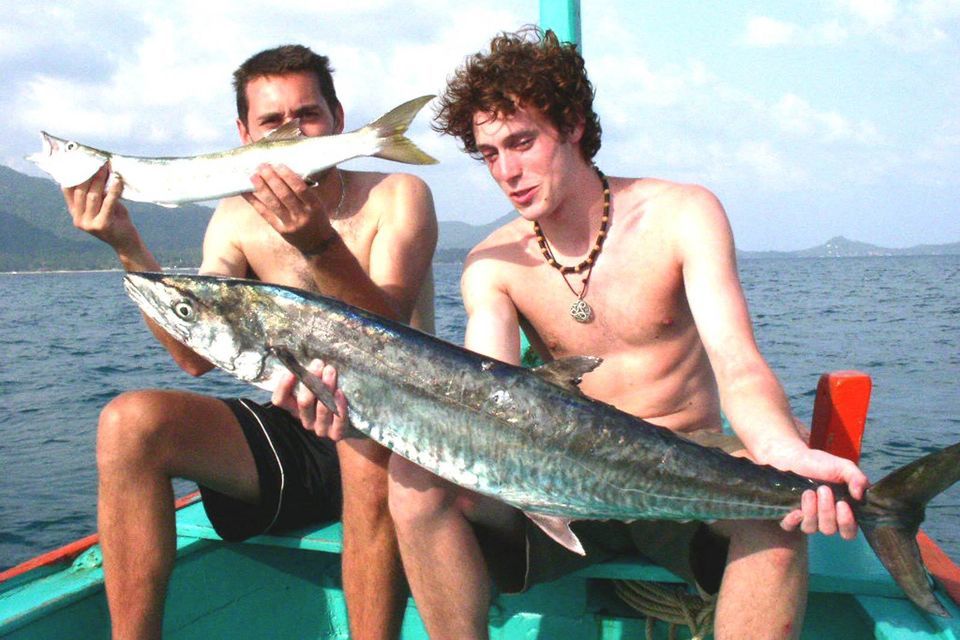
Typically trolling while underway is the method cruisers go for. Once sailors finish the Pacific crossing, having a spear gun or some fishing poles opens up a world of island adventures!
Let’s face it, there’s nothing quite like fresh ceviche!
The Tools You Need to Sail Across the Pacific
There is no way for me to write a succinct list of all the tools you need to sail across the Pacific Ocean. For every system on the boat, you need tools to maintain and repair it. But I wouldn’t want to leave port without:
- Good tool bag and spare parts
- Deck knife (my ever faithful favourite tool)
- Sewing machine
- Multi-tool (my secret second love)
- Solar panels
Staying Safe at Sea
Something sailors – veterans and newbies alike – tend to do is underestimate the consequences of danger. I guess you have to have a certain cognitive dissonance to cast off and not see land for over a month! Maybe it’s called getting old – or one too many close calls – but having insurance kind of puts your rational mind at ease.
You can release your wild side – but you’ve insured its dumb ass!
ALWAYS sort out your backpacker insurance before your trip. There’s plenty to choose from in that department, but a good place to start is Safety Wing .
They offer month-to-month payments, no lock-in contracts, and require absolutely no itineraries: that’s the exact kind of insurance long-term travellers and digital nomads need.

SafetyWing is cheap, easy, and admin-free: just sign up lickety-split so you can get back to it!
Click the button below to learn more about SafetyWing’s setup or read our insider review for the full tasty scoop.
Books and entertainment
Even when on night watch, you need something to keep you occupied. Even between fixing and tinkering things, there is a lot of time when you sail across the pacific. Most sailboats tend to be dry while underway, so there aren’t too many opportunities for drug bending entertainment.
I would recommend downloading podcasts, music, and books GALORE. I personally found movies kind of annoying to sit through, but that’s just me — I know some sailors who smash through tv series like there’s no tomorrow on passage!
What’s important is that you keep your mind occupied. Plus, when do you get a month of uninterrupted learning in your adult life? Why not start learning a new language while sailing?
There are many good books to read while travelling . I think I powered through close to forty books in the first Pacific passage I was on. A couple of books good for the mind at sea are:

- This Old Boat by Don Casey . This is the handiest and easiest how-to fix your broken boat book that I’ve found. There are beginner projects that are best tackled in port, and advanced fixes that’ll save your butt once your in the middle of nowhere. Plus, it’s super interesting!
- Storm Tactics by Larrey Pardey . Pretty self explanatory! And an all round interesting read. In a storm at sea, luck is highly biased toward the sailor who has a plan. A series of user-friendly checklists will help sailors from the moment they start looking for their perfect offshore boat, through outfitting, and as they encounter their first storms at sea.
- Swell by Liz Clark . Captain Liz Clark spent her youth dreaming of traveling the world by sailboat and surfing remote waves. When she was 22, she met a mentor who helped turn her desire into reality. Embarking on an adventure that most only fantasize about, she set sail from Santa Barbara, California, as captain of her 40-foot sailboat.
- Rum Diaries by Hunter S. Thompson . Begun in 1959 by a 22-year-old Hunter S. Thompson, The Rum Diary is a brilliantly tangled love story of jealousy, treachery, and violent alcoholic lust in the Caribbean boomtown that was San Juan, Puerto Rico, in the late 1950s. It’s nice to escape the boat and fall into the drugged up party land of Hunter S. Thompson.
- At the Existentialist Cafe by Sarah Bakewell . Paris, near the turn of 1932-3. Three young friends meet over apricot cocktails at the Bec-de-Gaz bar on the Rue du Montparnasse. They are Jean-Paul Sartre, Simone de Beauvoir and their friend Raymond Aron, who opens their eyes to a radical new way of thinking. No book is better suited to boat life than one about existentialism.

Our GREATEST Travel Secrets…
Pop your email here & get the original Broke Backpacker Bible for FREE.
Can you cross the Pacific Ocean solo?
Absolutely! Sailors have done it before and they’ll damn well do it again! The biggest challenge is making sure you get enough sleep while maintaining good watchkeeping. It can be hard to sleep at the best of times on a boat, but it can be done. Might just be me, but the sea monsters are kinda scarier when you sail alone too.
How dangerous is it to cross the Pacific Ocean?
Far less dangerous than driving a car or riding a motorbike. The dangers that you will face can be mitigated with good preparation. Storms are the easiest to prepare for. Keeping up your health – and sanity – when you’re halfway between nowhere and nowhere is a far bigger hurdle in my opinion. If you can heave-to during a storm, know how to fix the worst of what can break, and eat plenty of citrus – you should be on the right track!
How long does it take to cross the Pacific Ocean by Sailboat?
Depending on the sailboat, the route that is taken, the wind, and the current it can take anywhere between 22 and 40 days. When I crossed from Panama to the Marquesas (sans Galapagos Islands) it took us 26 days.
Why do people cross the Pacific Ocean by Sailboat?
I was going to answer this glibly – we sail across oceans because land life got boring haha. But I think for every sailor who leaves port there is a different reason as to why they are doing it. There is an element of challenge, there are exotic beaches, and long stretches of contemplation. There’s also an element of faith in whatever you want to call it – King Neptune, Church of the Open Sky, regular ol’ God. Sure, you can be prepared and sure, the beaches will be nice. But every sailing trip requires an element of faith .
If the Pacific calls and promises fresh fish, palm trees, and island time – you’ve got to answer! And there is no better way to travel the Pacific than by sailboat. So do your stem to stern inspection, steel your nerves, and cast off to sail across the Pacific Ocean.
The crushed peach sunsets and clear, stargazing nights will reward you tenfold. There are dreamy island paradises scattered across the great blue spectacular and hefty continents on the other side.
Crossing an ocean by sailboat is no small feat. But every mammoth task is made up of smaller puzzle pieces that come together. It is something quite spectacular to crack a beer on the other side of the Pacific knowing that those nautical miles were earned.
Sailing is the ultimate slow travel. An odyssey of mythical proportions lies ahead of the intrepid sailor who takes on such a crossing.
Avast and fair winds, fellow sailors. I’ll see you somewhere in the South Pacific! 😉
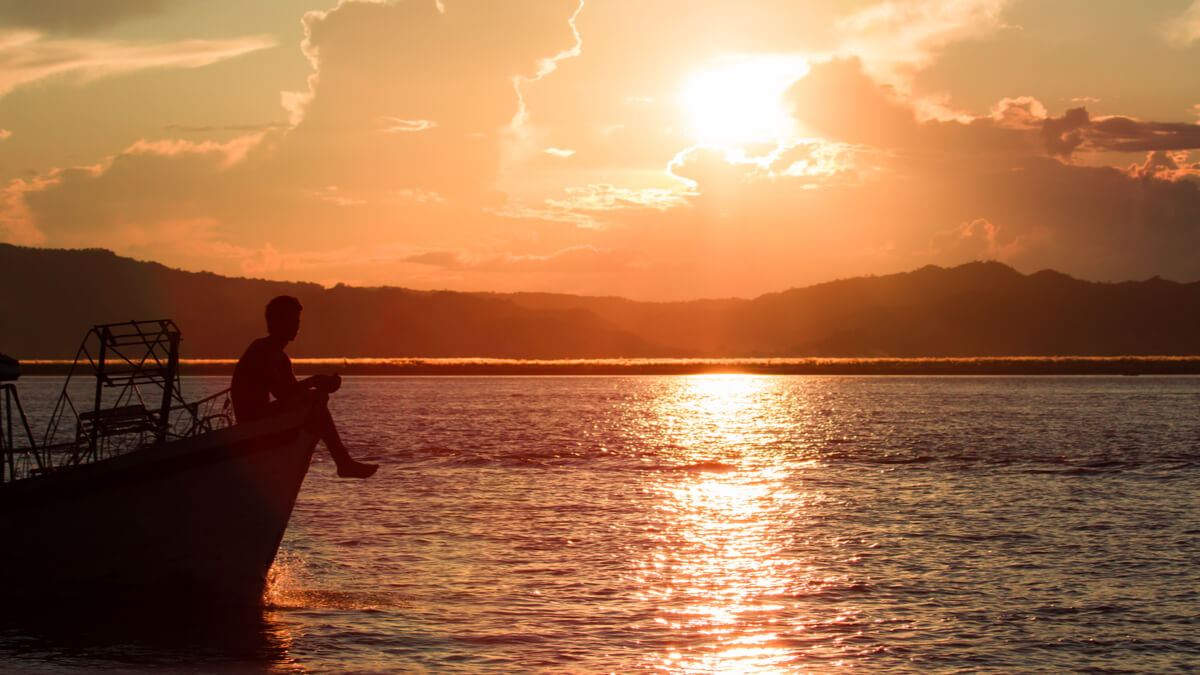
And for transparency’s sake, please know that some of the links in our content are affiliate links . That means that if you book your accommodation, buy your gear, or sort your insurance through our link, we earn a small commission (at no extra cost to you). That said, we only link to the gear we trust and never recommend services we don’t believe are up to scratch. Again, thank you!
Indigo Blue

Share or save this post

Awesome read indigo thanks
Great article!
Leave a Reply Cancel reply
Your email address will not be published. Required fields are marked *
Save my name, email, and website in this browser for the next time I comment.
Notify me of followup comments via e-mail.
Baltimore bridge collapse wasn't first major accident for giant container ship Dali
Propulsion failed on the cargo ship that struck the Francis Key Bridge in Baltimore early Tuesday as it was leaving port, causing it to collapse into the frigid Patapsco River. Its crew warned Maryland officials of a possible collision because they had lost control.
“The vessel notified MD Department of Transportation (MDOT) that they had lost control of the vessel” and a collision with the bridge “was possible,” according to an unclassified Department of Homeland Security report. “The vessel struck the bridge causing a complete collapse.”
An official speaking on condition of anonymity confirmed to USA TODAY that the DHS’ Cybersecurity and Infrastructure Security Agency is working with federal, state, and local officials “to understand the potential impacts of this morning’s collapse of the Francis Scott Key Bridge.”
Clay Diamond, executive director, American Pilots’ Association, told USA TODAY power issues are not unusual on cargo ships, which are so large they cannot easily course correct.
“It’s likely that virtually every pilot in the country has experienced a power loss of some kind (but) it generally is momentary,” Diamond said. “This was a complete blackout of all the power on the ship, so that’s unusual. Of course this happened at the worst possible location.”
The ship in Tuesday's crash, Dali, was involved in at least one prior accident when it collided with a shipping pier in Belgium.
That 2016 incident occurred as the Dali was leaving port in Antwerp and struck a loading pier made of stone, causing damage to the ship’s stern, according to VesselFinder.com, a site that tracks ships across the world. An investigation determined a mistake made by the ship’s master and pilot was to blame.
No one was injured in that crash, although the ship required repair and a full inspection before being returned to service. The pier – or berth – was also seriously damaged and had to be closed.
VesselFinder reports that the Dali was chartered by Maersk, the same company chartering it during the Baltimore harbor incident.
The 9-year-old container ship had passed previous inspections during its time at sea, but during one such inspection in June at the Port of San Antonio in Chile, officials discovered a deficiency with its "propulsion and auxiliary machinery (gauges, thermometers, etc)," according to the Tokyo MOU, an intergovernmental maritime authority in the Asia-Pacific region.
The report provided no other information about the deficiency except to note that it was not serious enough to remove the ship from service.
Follow here for live updates: Baltimore's Key Bridge collapses after ship strike; construction crew missing: Live Updates
Why did Dali crash into the Baltimore bridge?
Officials said Tuesday they’re investigating the collision, including whether systems on board lost electricity early Tuesday morning, which could be related to mechanical failure, according to a U.S. official who was not authorized to speak publicly.
Accidents at sea, known as marine casualties, are not uncommon, the source told USA TODAY. However, “allisions,” in which a moving object strikes a stationary one with catastrophic results, are far less common. The investigation of the power loss aboard the Dali, a Singapore-flagged vessel, will be a high priority.
In a video posted to social media, lights on the Dali shut off, then turned back on, then shut off again before the ship struck a support pier on the bridge.
Numerous cargo and cruise ships have lost power over the years.
The International Convention for the Safety of Life at Sea requires all international vessels to have two independent sources of electricity, both of which should be able to maintain the ship's seaworthiness on their own, according to a safety study about power failures on ships , citing the International Convention for the Safety of Life at Sea.
The Dali's emergency generator was likely responsible for the lights coming back on after the initial blackout, Diamond said.
“There was still some steerage left when they initially lost power,” he said. “We’ve been told the ship never recovered propulsion. The emergency generator is a diesel itself – so if you light off the generator, that’s also going to put off a puff of exhaust.”
Under maritime law, all foreign flagged vessels must be piloted into state ports by a state licensed pilot so the Dali's pilot is licensed by Association of Maryland Pilots .
Diamond described the incident based on information from the Maryland agency that licensed the pilot aboard the ship. His organization represents that group and all other state piloting agencies in the US.
“The pilot was directing navigation of the ship as it happened,” he said. “He asked the captain to get the engines back online. They weren’t able to do that, so the pilot took all the action he could. He tried to steer, to keep the ship in the channel. He also dropped the ship’s anchor to slow the ship and guide the direction.
“Neither one was enough. The ship never did regain its engine power.”
How big is the Dali ship?
The Dali is a 984-foot container vessel built in 2015 by Hyundai Heavy Industries in South Korea. With a cruising speed of about 22 knots – roughly 25 mph. It has traveled the world carrying goods from port to port.
The ship, constructed of high-strength steel, has one engine and one propeller, according to MarineTraffic.com.
The Dali arrived in Baltimore on Sunday from the Port of Norfolk in Virginia. Before that, it had been in New York and came through the Panama Canal.
It remains at the scene of the collapse as authorities investigate.
Who owns and operates the Dali?
It is owned by the Singapore-based Grace Ocean Pte Ltd but managed by Synergy Marine Group, also based in Singapore. It was carrying Maersk customers’ cargo, according to a statement from the shipping company.
“We are deeply concerned by this incident and are closely monitoring the situation,” Maersk said in the statement.
Synergy, which describes itself as a leading ship manager with more than 600 vessels under its guidance, issued a statement on its website acknowledging the incident and reporting no injuries among its crew and no pollution in the water. There were two pilots on board and 22 crew members in all, according to Synergy, all of them from India.
USA TODAY reached out to Synergy on Tuesday, but the company did not immediately return a call seeking comment.
Contributing: Josh Susong
Advertisement
The Dali was just starting a 27-day voyage.
The ship had spent two days in Baltimore’s port before setting off.
- Share full article

By Claire Moses and Jenny Gross
- Published March 26, 2024 Updated March 27, 2024, 9:07 a.m. ET
The Dali was less than 30 minutes into its planned 27-day journey when the ship ran into the Francis Scott Key Bridge on Tuesday.
The ship, which was sailing under the Singaporean flag, was on its way to Sri Lanka and was supposed to arrive there on April 22, according to VesselFinder, a ship tracking website.
The Dali, which is nearly 1,000 feet long, left the Baltimore port around 1 a.m. Eastern on Tuesday. The ship had two pilots onboard, according to a statement by its owners, Grace Ocean Investment. There were 22 crew members on board, the Maritime & Port Authority of Singapore said in a statement. There were no reports of any injuries, Grace Ocean said.
Before heading off on its voyage, the Dali had returned to the United States from Panama on March 19, harboring in New York. It then arrived on Saturday in Baltimore, where it spent two days in the port.
Maersk, the shipping giant, said in a statement on Tuesday that it had chartered the vessel, which was carrying Maersk cargo. No Maersk crew and personnel were onboard, the statement said, adding that the company was monitoring the investigations being carried out by the authorities and by Synergy Group, the company that was operating the vessel.
“We are horrified by what has happened in Baltimore, and our thoughts are with all of those affected,” the Maersk statement said.
The Dali was built in 2015 by the South Korea-based Hyundai Heavy Industries. The following year, the ship was involved in a minor incident when it hit a stone wall at the port of Antwerp . The Dali sustained damage at the time, but no one was injured.
Claire Moses is a reporter for the Express desk in London. More about Claire Moses
Jenny Gross is a reporter for The Times in London covering breaking news and other topics. More about Jenny Gross
Crew aboard Dali all survived bridge crash ‘by God’s grace’
A director of a baltimore ministry was in touch with those aboard the dali after their ship crashed.
The director of a Baltimore ministry heard a loud boom in the wee hours of Tuesday and figured it was thunder. Then he woke up, turned on the radio and learned that the noise had been the sound of a catastrophe — the crash of a ship into a bridge that involved merchant sailors he had seen just hours earlier.
Andrew Middleton, director of the local Apostleship of the Sea, texted a seafarer aboard the 985-foot container ship Dali.
“Is everyone on board safe?” he asked at 6:03 a.m.
Five minutes later, the crew member replied.
“Yes. By God’s grace.”
Their exchange is the first publicly reported communication from a mariner aboard the vessel, which lost power and slammed into the Francis Scott Key Bridge about 1:30 a.m. Tuesday. Middleton’s account also provides new insight into the path of the cargo ship before the crash, which destroyed the bridge — rising to 185 feet above the Patapsco River at its peak — and left at least six people missing and two injured.
“The words that ‘the Key Bridge is gone’ — it still shakes us,” Maryland Gov. Wes Moore (D) said Tuesday morning.
Just before the disaster, crew members aboard the Dali alerted authorities that the vessel had lost power, which prompted a rushed effort by authorities to halt vehicle traffic and evacuate people from the bridge. That “mayday” warning is credited with saving numerous lives, Moore said, but it came too late to save workers who were repairing potholes on the span.
The Dali left the Panama Canal on March 13, arrived in New York on March 19, then traveled to Norfolk on Friday, according to the ship-tracking website VesselFinder.com. It arrived Saturday in Baltimore.
Although the Dali’s trip from Panama to the Chesapeake Bay appeared uneventful, records show the nine-year-old ship has had problems related to propulsion in the past.
In June, inspectors at the port of San Antonio, Chile, discovered a problem categorized as relating to “Propulsion and auxiliary machinery,” according to the Tokyo MOU, an intergovernmental shipping regulator in the Asia-Pacific region.
The issue was classified in the subcategory of “Gauges, thermometers, etc,” but no additional details of the deficiency were provided. The problem was not serious enough to warrant detaining the ship, according to the records , and the Dali was found to have no outstanding deficiencies after a follow-up inspection later that day.
Basil Karatzas, chief executive of Karatzas Marine Advisors & Co., said he suspected that the Baltimore disaster followed a halt in the supply of fuel to the Dali’s engine. “If there was any malfunction of gauges and thermometers looping back to the engine, [that] may have caused or contributed to the accident,” Karatzas said.
The ship — about 157 feet wide and longer than three football fields, according to MarineTraffic.com — stayed in Baltimore for three days.
On Monday, while the ship was docked, Middleton said, he drove its captain and a crew member to shop at a Walmart. In the car, Middleton said, the captain told him about the vessel’s upcoming journey to Sri Lanka — explaining that it would take about a month, because the ship would be traveling around the southern tip of Africa to avoid the Suez Canal and Red Sea, where Yemen’s Houthi rebels have been attacking ships.
“They were going out of their way to ensure their own safety,” said Middleton, whose ministry provides services for seafarers when they arrive at the port.
Employees of the ministry transport crew members to local establishments and provide counseling to those on board, who are often far from home and dealing with the strains of life at sea.
Before he left them Monday afternoon, Middleton prayed with the captain and crew member.
“God bless these gentlemen,” he prayed. “Have a safe voyage.”
The Dali left about 12:44 a.m. Tuesday and was expected to arrive at the Sri Lankan port city of Colombo on April 22, a journey of 27 days.
But then it lost power as it neared the Key Bridge. Thick black smoke began to appear from the ship’s port funnel, video showed. The lights turned off, then on, then off again. The vessel was traveling at eight knots, which Moore called “a very, very rapid speed.”
At 1:27 a.m., as the darkened ship was illuminated by city lights on either side of the harbor, members of the Maryland Transportation Authority police scrambled to respond to the ship’s “mayday.”
“Hold all traffic on the Key Bridge,” one voice said over the transportation authority police radio, according to records from Broadcastify, an open-source audio streaming service. “There’s a ship approaching that just lost their steering.”
Others on the radio announced they were on their way to the bridge or already holding traffic.
Then, one voice asked whether there were workers on the bridge.
“You might want to notify whoever the foreman is to see if we can get them off the bridge temporarily,” another voice said over the radio.
At 1:28 a.m. — less than a minute after the first warning — the Dali struck one of the bridge’s piers.
An officer replied that he would drive onto the bridge and notify the workers after another officer arrived to keep the traffic blocked. But the bridge had already been hit.
About 20 seconds later, a voice shouted over the radio, “The whole bridge just fell down!”
The Dali was traveling under the flag of Singapore. Singapore’s Maritime Port Authority said Tuesday that it was investigating the collision and providing “full cooperation” to the U.S. Coast Guard. The authority, which regulates marine services in Singapore, said there were 22 crew members on board at the time of the crash.
The registered owner of the ship is Singapore-based Grace Ocean Pte Ltd., and it is managed by Synergy Marine Group. Neither company immediately responded to a request for comment from The Washington Post. An official from Grace Ocean told the global shipping news website TradeWinds that the company is “working with the ship’s technical manager Synergy Marine to determine what happened.”
News accounts indicate that reported problems with the Dali date to 2016. That year, the Dali struck a stone wall at the Belgium port of Antwerp as it was unmooring and leaving the port. The ship sustained “hull damage impairing seaworthiness,” according to Equasis, a maritime data service created by European authorities. VesselFinder, a maritime monitoring service, reported that no one was injured and no cargo was spilled. The ship was detained in Antwerp for necessary repairs.
About three months after the Antwerp collision, the Dali was sold by its Greek owner, Oceanbulk Maritime, to Grace Ocean, a Singapore-based subsidiary of the Japanese conglomerate Mitsui & Co.
Synergy Marine Group has been involved in at least three incidents since 2018 that led to the deaths of crew members, according to investigation records from transportation safety agencies and government statements.
In 2018, a technician onboard a vessel managed by Synergy was killed when a personnel elevator malfunctioned, according to authorities in Australia, where the vessel was registered.
Required “safety barriers” were not put in place before the technician began his work, and “aspects of the supervision and communications throughout the task were ineffective,” said an investigation report by the Australian Transport Safety Bureau.
In 2019, an officer on a Synergy-registered vessel was reported missing. An investigation by authorities in Singapore found that the officer had probably fallen overboard while working alone on a lifeboat and that it was “probable” he was not wearing a personal flotation device. And last year, a tanker partly managed by Synergy collided with a dredger off the coast of the Philippines, killing two seafarers: a Filipino national and a Chinese national, according to Philippine Coast Guard officials.
On Tuesday evening in Baltimore, the Dali was still sitting in the water, surrounded by remnants of the once 1.6-mile-long bridge. Dive teams cautiously searched for victims Tuesday afternoon, hampered by rough waters, piles of silt in the Patapsco River and the twisted wreckage of the submerged bridge.
Rebecca Tan, Sarah Cahlan, Tim Craig and Gregory S. Schneider contributed to this report.
Baltimore bridge collapse
Baltimore’s Francis Scott Key Bridge collapsed after being hit by a cargo ship , sending at least eight people from a construction crew into the water. Follow live updates and see photos from the scene .
How it happened: The container ship lost power moments before colliding with the bridge, Maryland Gov. Wes Moore (D) said. Video shows the bridge collapse in under 40 seconds. Read everything we know so far about the bridge collapse .
Victims: Rescue efforts are underway as authorities search for six people still missing . The entire crew aboard the 985-foot container ship Dali survived .
Economic impact: The collapse of the bridge, which severed ocean links to the city’s port, adds a fresh headache to already struggling global supply chains .
History: The Key Bridge was built in the 1970s and spans the Patapsco River. Here’s a list of other major bridge collapses in U.S. history .

- International edition
- Australia edition
- Europe edition

Baltimore bridge collapse: at least six missing as Biden laments ‘terrible accident’
Mayor says rescue efforts continuing after cargo vessel hit Francis Scott Key Bridge, sending vehicles into the water
A frantic search-and-rescue effort continued on Tuesday hours after a major bridge in Baltimore , Maryland, snapped and collapsed when a container ship collided with it in the early morning, sending a number of vehicles into the water.
Baltimore fire department officials said at least six construction workers were still missing, after reports that a 948ft Singapore-flagged container ship leaving port on its way to Sri Lanka had crashed into the Francis Scott Key Bridge.
Jeffrey Pritzker, a senior executive at Brawner Builders, the employer of the construction workers, said Tuesday afternoon that they were presumed dead, given the water’s depth and the length of time since the crash. Pritzker said the crew had been working in the middle of the bridge when it came apart. No bodies have been recovered. “This was so completely unforeseen,” Pritzker said. “We don’t know what else to say. We take such great pride in safety, and we have cones and signs and lights and barriers and flaggers. But we never foresaw that the bridge would collapse.”
A report from the Baltimore Banner earlier said the were construction workers from El Salvador, Guatemala, Honduras and Mexico who are in their 30s and 40s, with spouses and children.
Officials added that up to 20 people and several vehicles had fallen into the river and declared it a “mass casualty event”.
A video posted on X appeared to show the vessel striking one of the bridge’s central supports, causing much of the 2.6km bridge to give way as a number of vehicles fell into the Patapsco River below.
Joe Biden addressed the bridge collapse in a public briefing about midday, saying that all indications were that it was a “terrible accident” rather than an “intentional act”.
The president also said he was thinking of those who remained unaccounted for amid the search and rescue efforts around the bridge, a key traffic artery whose destruction is also expected to cause months of travel disruption in a city with more than 575,000 residents.
“We’re with you. We’re going to stay with you as long as it takes,” said Biden, adding that he intended to travel to Baltimore as soon as possible. “You’re Maryland tough. You’re Baltimore strong.”

Officials said the ship issued a mayday as it went off course and seemed to lose power, which Baltimore officials said allowed them to prevent more vehicles from coming on to the bridge. The ship then appeared to catch fire as part of the bridge collapsed over it, sending plumes of thick, black smoke into the air.
Two people have been rescued, with one of them “severely” injured and in critical condition, officials said in a pre-dawn press conference. There were reports that there were workers on the bridge engaged in basic road maintenance when the collision occurred.
The temperature in the river was about 47F (8C) in the early hours of Tuesday, according to a buoy that collects data for the National Oceanic and Atmospheric Administration.
From a vantage point near the entrance to the bridge, jagged remnants of its steel frame were visible protruding from the water, with the on-ramp ending abruptly where the span once began. “All lanes closed both directions for incident on I-695 Key Bridge. Traffic is being detoured,” the Maryland transportation authority posted on X. “I-695 Key Bridge collapse due to ship strike. Active scene,” it later added.
Calls to 911 had come in at about 1.30am, reporting a vessel travelling outbound from Baltimore that had struck a column on the bridge, causing it to collapse, said Kevin Cartwright, the director of communications for the Baltimore fire department. Several vehicles were on the bridge at the time, including one the size of a tractor-trailer.
“Our focus right now is trying to rescue and recover these people,” Cartwright said. He added that it was too early to know how many people were affected but described the collapse as a “developing mass casualty event”.
Cartwright said it appeared that there were “some cargo or retainers” that appeared to be dangling from the bridge, creating unsafe and unstable conditions that were complicating the rescue operation. “This is a dire emergency,” he said.
Matthew West, a petty officer first class for the coastguard in Baltimore, told the New York Times that the coastguard received a report of an impact at 1.27am ET. West said the Dali, a 948ft (290-metre) Singapore-flagged cargo ship, had hit the bridge, which is part of Interstate 695.

The Maritime and Port Authority of Singapore (MPA) confirmed that the vessel was registered in Singapore and said the agency was coordinating with the US Coast Guard and the ship’s management company to help. It also said it would investigate the incident itself.
There were 22 crew onboard at the time of the incident, Singapore said.
The shipping company Maersk said that it chartered the container ship in Baltimore, with the operator named as Synergy Marine Group. Maersk confirmed that there were 22 crew, and said they were all Indian. None of them were Maersk crew or personnel.
It added that there were 4,679 containers on board, roughly half of its 10,000 capacity.
“We are horrified by what has happened in Baltimore, and our thoughts are with all of those affected,” the company said in a statement.
The Dali had left Baltimore at 1am and was heading for the Sri Lankan capital, Colombo, according to the maritime data platform MarineTraffic. Synergy Marine Group, the manager of the Dali, confirmed that the ship had collided with one of the pillars of the bridge. It said all crew members, including the two pilots, had been accounted for and there were no reports of any injuries.
“Whilst the exact cause of the incident is yet to be determined, the Dali has now mobilised its qualified individual incident response service,” it said.
The same vessel was also involved in a collision in 2016 in Antwerp, Belgium, according to Vessel Finder and the maritime incident archive Shipwrecklog.

Its bow reportedly scraped the side of the quay while it was leaving port, significantly damaging several meters of the hull, and it was reportedly detained by authorities afterward.
According to Vessel Finder , the weather was fine at the time and the incident was blamed on the ship’s master and pilot on board. There were reportedly no injuries.
The Baltimore mayor, Brandon M Scott, called Tuesday’s collision an “unthinkable tragedy” at a press conference held as dawn broke on Baltimore. “Never would you imagine” seeing the bridge collapse, he added. “It looked like something out of an action movie.”
Asked how long it would take to rebuild the bridge, he said: “The discussion right now should be about the people, the lives, the souls … there are people in the water that we have to get out and that’s the only thing we should be talking about.”
He and the county executive, Johnny Olszewski Jr, said emergency personnel were at the scene and rescue efforts were under way.
Officials added that there was “absolutely no indication that there was any terrorism or that this was done on purpose”.
The Maryland governor, Wes Moore, said in a statement that he had declared a state of emergency.
He said the ship had lost power around the time when the cargo ship hit the Key Bridge, and the crew issued a “mayday” request. Moore said that officials were able to slow the flow of traffic, preventing more vehicles from falling into the water.
“These people are heroes. They saved lives last night,” Moore said, adding that Baltimore was working with an interagency government team to quickly deploy federal resources from the Biden administration.
Moore added the bridge was “fully up to code” before Tuesday’s accident and that rebuilding the bridge would be a long-term effort.

In a statement, the White House said it was “closely monitoring” the events. “The US Coast Guard is conducting search and rescue for those who remain unaccounted for as a result of the bridge collapse,” it said. “Senior White House officials are in touch with the governor and mayor to offer any federal assistance they need. There is no indication of any nefarious intent.”
It added that “our hearts go out” to the victims and families of what it called a “horrific incident”.
Built in 1977, the bridge spans the Patapsco River, a vital artery that along with the Port of Baltimore is a hub for shipping on the US’s east coast. It is named for the author of the American national anthem, The Star-Spangled Banner.
Gloria Oladipo , Associated Press and Reuters contributed to this report
- Baltimore bridge collapse
- Water transport
Most viewed
Six presumed dead after cargo ship crash levels Baltimore bridge
BALTIMORE — A major Baltimore bridge collapsed like a house of cards early Tuesday after it was struck by a container ship, sending six people to their deaths in the dark waters below, and closing one of the country’s busiest ports.
By nightfall, the desperate search for six people who were working on the bridge and vanished when it fell apart had become a grim search for bodies.
“We do not believe that we’re going to find any of these individuals still alive,” Coast Guard Rear Admiral Shannon N. Gilreath said.
Jeffrey Pritzker, executive vice president of Brawner Builders, said earlier that one of his workers had survived. He did not release their names.
Up until then, Maryland Gov. Wes Moore had held out hope that the missing people might be found even as law enforcement warned that the frigid water and the fact that there had been no sign of them since 1:30 a.m. when the ship struck Francis Scott Key Bridge.
Moore expressed heartbreak after officials suspended the search for survivors.
"Our heart goes out to the families," he said. "I can’t imagine how painful today has been for these families, how painful these hours have been have been for these families."
It was a crushing blow to the loved ones of the missing men, who had waited for hours at a Royal Farms convenience store near the entrance of the bridge for word of their fate.
Follow live updates here
The tragic chain of events began early Tuesday when the cargo ship Dali notified authorities that it had lost power and issued a mayday moments before the 984-foot vessel slammed into a bridge support at a speed of 8 knots, which is about 9 mph.
Moore declared a state of emergency while rescue crews using sonar detected at least five vehicles in the frigid 50-foot-deep water: three passenger cars, a cement truck and another vehicle of some kind. Authorities do not believe anyone was inside the vehicles.
Investigators quickly concluded that it was an accident and not an act of terrorism.
Ship was involved in another collision
Earlier, two people were rescued from the water, Baltimore Fire Chief James Wallace said. One was in good condition and refused treatment, he said. The other was seriously injured and was being treated in a trauma center.
Moore said other drivers might have been in the water had it not been for those who, upon hearing the mayday, blocked off the bridge and kept other vehicles from crossing.
“These people are heroes,” Moore said. “They saved lives.”
Nearly eight years ago, the Dali was involved in an accident. In July 2016, it struck a quay at the Port of Antwerp-Bruges in Belgium, damaging the quay.
The nautical commission investigated the accident, but the details of the inquiry were not immediately clear Tuesday.
The Dali is operated and managed by Synergy Group. In a statement, the company said that two port pilots were at the helm during Tuesday's crash and that all 22 crew members onboard were accounted for.
The Dali was chartered by the Danish shipping giant Maersk, which said it would have no choice but to send its ships to other nearby ports with the Port of Baltimore closed.
The bridge, which is about a mile and a half long and carries Interstate 695 over the Patapsco River southeast of Baltimore, was "fully up to code," Moore said.
National Transportation Safety Board Chairwoman Jennifer Homendy said that her agency will lead the investigation and that a data recorder on the ship could provide more information.
"But right now we're focusing on the people, on the families," she said. "The rest can wait."
President Joe Biden vowed to rebuild the bridge and send federal funds.
"This is going to take some time," the president warned. "The people of Baltimore can count on us though to stick with them, at every step of the way, till the port is reopened and the bridge is rebuilt."
Speaking in Baltimore, Transportation Secretary Pete Buttigieg echoed the president's promise.
"This is no ordinary bridge," he said. "This is one of the cathedrals of American infrastructure."
But Buttigieg warned that replacing the bridge and reopening the port will take time and money and that it could affect supply chains.
The Port of Baltimore, the 11th largest in the U.S., is the busiest port for car imports and exports, handling more than 750,000 vehicles in 2023 alone, according to data from the Maryland Port Administration.
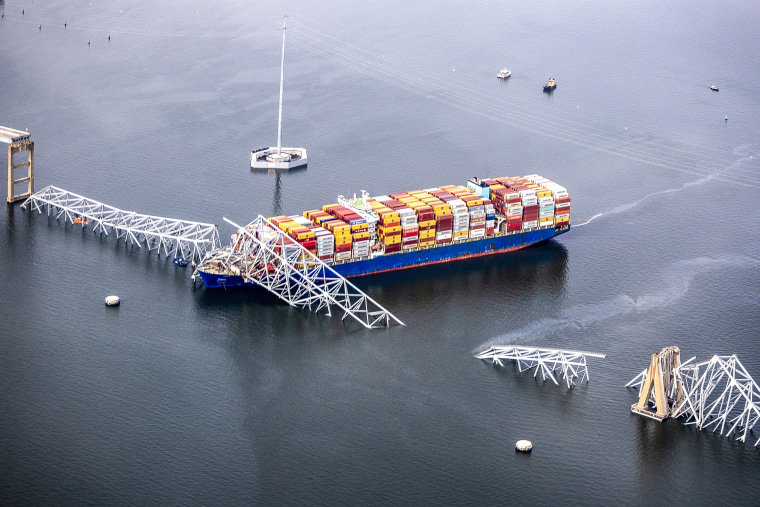
Writer David Simon, a champion of Baltimore who set his TV crime drama "The Wire" on the streets of the city he once covered as a reporter, warned online that the people who will suffer the most are those whose livelihoods depend on the port.
"Thinking first of the people on the bridge," Simon posted on X . "But the mind wanders to a port city strangling. All the people who rely on ships in and out."
Timeline of crash
Dramatic video captured the moment at 1:28 a.m. Tuesday when the Dali struck a support and sent the bridge tumbling into the water. A livestream showed cars and trucks on the bridge just before the strike. The ship did not sink, and its lights remained on.
Investigators said in a timeline that the Dali's lights suddenly shut off four minutes earlier before they came back on and that then, at 1:25 a.m. dark black smoke began billowing from the ship's chimney.
A minute later, at 1:26 a.m., the ship appeared to turn. And in the minutes before it slammed into the support, the lights flickered again.
Maryland Transportation Secretary Paul Wiedefeld said the workers on the bridge were repairing concrete ducts when the ship crashed into the structure.
At least seven workers were pouring concrete to fix potholes on the roadway on the bridge directly above where the ship hit, said James Krutzfeldt, a foreman.
Earlier, the Coast Guard said it had received a report that a “motor vessel made impact with the bridge” and confirmed it was the Dali, a containership sailing under a Singaporean flag that was heading for Sri Lanka.
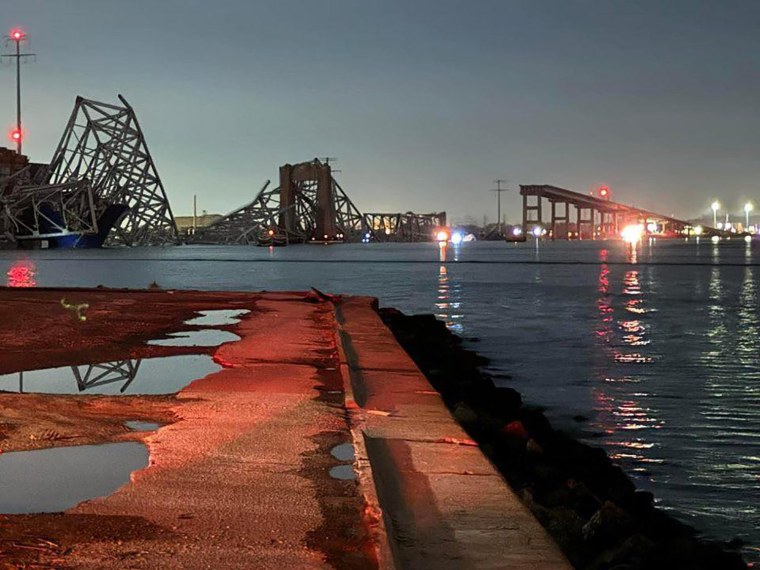
Bobby Haines, who lives in Dundalk in Baltimore County, said he felt the impact of the bridge collapse from his house nearby.
"I woke up at 1:30 this morning and my house shook, and I was freaking out," he said. "I thought it was an earthquake, and to find out it was a bridge is really, really scary."
Families of bridge workers wait for updates
Earlier in the day, relatives of the construction crew waited for updates on their loved ones.
Marian Del Carmen Castellon told Telemundo her husband, Miguel Luna, 49, was working on the bridge.
“They only tell us that we have to wait and that they can’t give us information,” she said.
Castellon said she was "devastated, devastated because our heart is broken, because we don’t know how they have been rescued yet. We are just waiting for the news."
Luna's co-worker Jesús Campos said he felt crushed, too.
“It hurts my heart to see what is happening. We are human beings, and they are my folks,” he said.
Campos told The Baltimore Banner that the missing men are from El Salvador, Guatemala, Honduras and Mexico.
Active search and rescue ends
The Coast Guard said it was suspending the active search-and-rescue effort at 7:30 p.m. Tuesday.
"Coast Guard’s not going away, none of our partners are going away, but we’re just going to transition into a different phase," Gilreath said at a news conference.
Maryland State Police Superintendent Roland L. Butler, Jr., said it was moving to a recovery operation. Changing conditions have made it dangerous for divers, he said.
Butler pledged to "do our very best to recover those six missing people," but the conditions are difficult.
"If we look at how challenging it is at a simple motor vehicle crash to extract an individual, I'm sure we can all imagine how much harder it is to do it in inclement weather, when it's cold, under the water, with very limited to no visibility," he said.
"There's a tremendous amount of debris in the water," which can include sharp metal and other hazards, and that could take time, Butler said.
'A long road in front of us'
Built in 1977 and referred to locally as the Key Bridge, the structure was later named after the author of the American national anthem.
The bridge is more than 8,500 feet long, or 1.6 miles. Its main section spans 1,200 feet, and it was one of the longest continuous truss bridges in the world upon its completion, according to the National Steel Bridge Alliance .
About 31,000 vehicles a day use the bridge, which equals 11.3 million vehicles per year, according to the Maryland Transportation Authority.
The river and the Port of Baltimore are both key to the shipping industry on the East Coast, generating more than $3.3 billion a year and directly employing more than 15,000 people.
Asked what people in Baltimore can expect going forward, the state's transportation secretary said it is too early to tell.
"Obviously we reached out to a number of engineering companies, so obviously we have a long road in front of us," Wiedefeld said.
Julia Jester reported from Baltimore, Patrick Smith from London, Corky Siemaszko from New York and Phil Helsel from Los Angeles.
Julia Jester is a producer for NBC News based in Washington, D.C.
Patrick Smith is a London-based editor and reporter for NBC News Digital.
Phil Helsel is a reporter for NBC News.
Corky Siemaszko is a senior reporter for NBC News Digital.
Watch CBS News
Largest cocaine shipment of the year seized in Colombian Caribbean after high-speed boat chase
By Stephen Smith
Updated on: March 27, 2024 / 7:27 AM EDT / CBS News
Authorities have announced the largest cocaine shipment seizure of the year in the Caribbean Sea off Colombia after military ships and planes chased down a speedboat holding almost four tons of the drug.
In a joint operation between the Colombian Navy, the Colombian Air Force and the Joint Interagency Task Force of the United States Southern Command, authorities seized the cocaine — said to be worth more than $113 million — from the vessel near San Andrés Isla, according to the Colombian Navy. The navy released dramatic aerial video of the chase, during which it said the crew of the suspicious vessel "began evasive actions, throwing packages into the water."
After a chase that spanned several miles, the boat — which was covering its cargo in a blue tarp — was finally intercepted, the officials said. Three Colombians, one Honduran and one Venezuelan who had been on board the speedboat were detained, and subsequent testing confirmed that the boat had been carrying 3,355 kilograms of cocaine weighing, or about 3.7 tons of the drug.
🚨 En una operación junto a la @FuerzaAereaCol y JIATFS de EEUU 🇺🇲 logramos incautar más de 3.3 toneladas de clorhidrato de cocaína que eran transportadas en una embarcación tipo Go fast en #SanAndrés Isla. 🚨 https://t.co/sOjRPdHVAF ⬅️ #ContundenciaOperacional pic.twitter.com/UoSdcSDdMH — Armada de Colombia (@ArmadaColombia) March 26, 2024
Navy video showed officers offloading and arranging hundreds of packages of the seized cocaine, which officials said amounted to more than eight million doses that would "not reach the streets of different countries, thus avoiding the impact on public health."
The drugs, boat and five suspects were turned over to the Attorney General's Office, the navy said.
The Colombia-U.S. operation in the Caribbean Sea came just days after officials announced that a British warship and an American patrol aircraft had chased down a speedboat as its crew tried to flee and dump another cargo of drugs into the water near the U.S. Virgin Islands. About three tons of cocaine and other drugs were seized, the U.K.'s Ministry of Defense said.
Drug busts off the shores of Colombia are also common.

Just last month, authorities on a search-and-rescue mission for two missing fishermen off Colombia's Pacific coast instead found a semi-submersible vessel loaded with more than four tons of cocaine, officials said. The so-called "narco sub" was intercepted during a joint operation by the Colombian and Ecuadorian navies and the Colombian Air Force, the Colombian Navy said.
Colombia produces about 60% of the cocaine found in the world.
Stephen Smith is a senior editor for CBSNews.com.
More from CBS News

Mexican President Andrés Manuel López Obrador takes aim at U.S. politicians
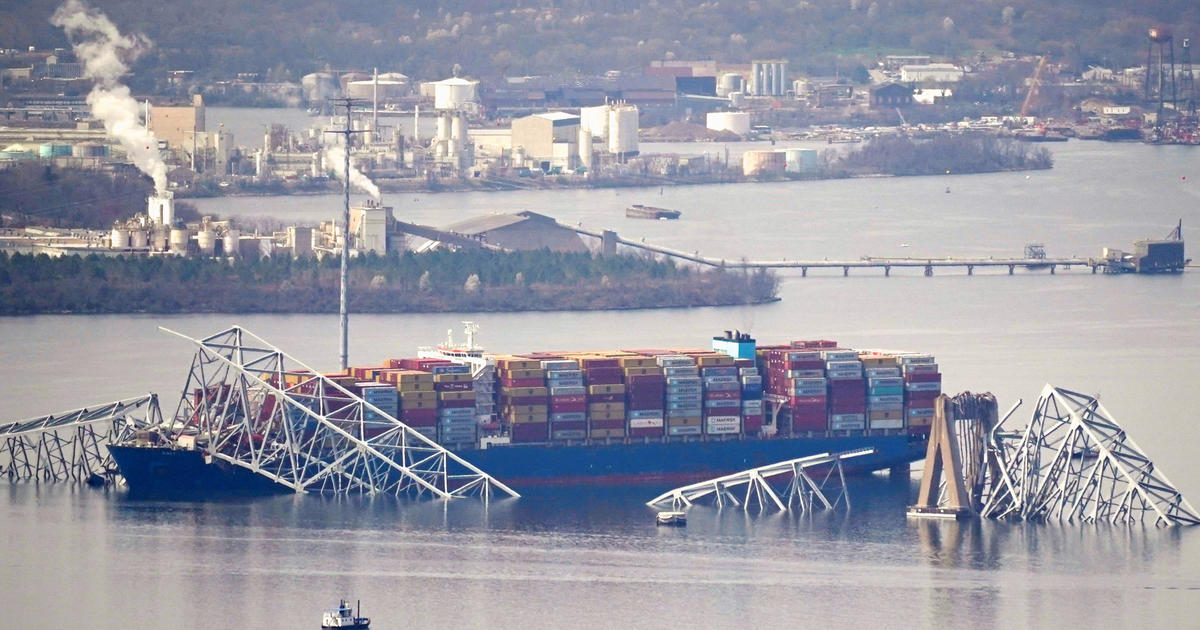
What to know about the Key Bridge collapse in Baltimore

Girl rescued after 16 hours under mud amid deadly storms in Brazil

Search launched for wreckage of WWII ace's crashed plane

IMAGES
VIDEO
COMMENTS
we love sailing as much as you do. Crewseekers is run by experienced, professional sailors offering a friendly and helpful service to yacht crew and owners. We are the original yacht crew introduction agency - established for over 25 years, offering amateur and professional sailing opportunities throughout the world. Read our story
Crewing on a sailboat is an exhilarating experience that allows you to harness the power of the wind and navigate the open waters. Whether you are a seasoned sailor or a beginner looking to learn the ropes, understanding the fundamentals of crewing on a sailboat is essential for a successful voyage.
Have you ever been curious of crewing on a sailboat? It can really be a fantastic experience but it might seem difficult to get there. I try to sort it out a...
Crewing on a sailboat is one of the best ways to learn how to sail. It's how Adam and I got the experience we needed to pass our sailing qualifications and set off alone. Last season Adam and I had a few guests on board, but it was mostly just the two of us. One of the things we said we missed was the company of others.
From cruising, day sailing, deliveries, racing, island hopping, coastal sailing, eco projects and lots more. Contact skippers and captains direct. Find Boats. 100% Free. Find amateur and professional yacht crew and unpaid or paid crewing positions available worldwide. Local, coastal and ocean sailing for all levels.
Current sailing opportunities. All of our amazing sailing opportunities are free to browse - if you want to make contact with yacht owners you need to join Crewseekers. 219 sailing opportunities found: All trip types : All locations : All qualifications. Next.
Coboaters allow crew to find sailing opportunities and allow boat owners to find crew! We connect thousands of boat owners with crew for sailing and boating adventures in USA, Canada and worldwide. It is a great sailing network where boat owners meet their sailing crew, chat, learn to know each other and spend time on boats together.
We have yacht crewing opportunities available for you. Simply search through our sailing opportunities to find what you're looking for. It's free to view all of our sailing opportunities. To make contact with the yacht owner and join their crew, you must register as a member of Crewseekers. Membership costs from £75 for 6 months and gives ...
4. Crewbay. Crewbay is an online crewing platform designed to connect newbie, amateur, and professional sailing crew with captains and boat owners from all over the world, and vice versa. The platform has more than 150 boats registered every month. Crewbay just redesigned their website.
upgrade anytime, anywhere, anyone to Premium, either as a Boat or a Crew member with a Premium duration that suits you from one month to up to 5 years and chat (exchange personal messages) with any matching members Premium can be paused for up to 18 months Premium never renews automatically.
Fancy crewing on a yacht one day? We've got you covered! In this guide, we show you exactly what's expected of you as crew on the big blue. Spending a week o...
Step 3 - Set your ego aside. Sailing requires teamwork. It is something that takes a large amount of involvement from many different people. There are roles of captain, 1st mate, 2nd mate, quartermaster, able-bodied seaman, ordinary seaman, chef, cabin boy, and way too many others to list.
Walk to Docks to Find a Boat: Ironically, the best way to get a job as a delivery crew member is to arrive in a new port on a sailboat and walk the docks looking for work. Unfortunately, the age-old catch-22 situation rears its ugly head — you need experience to be crew, yet need to crew to gain experience. Suppose you are lucky enough to ...
Crewing on Other People's Boats. One of the first things I noticed when I started mucking about on sailboats big enough to be manned by more than one person is that it is much easier to crew than to skipper. Being one step removed from primary responsibility for the many things that can go wrong on a boat always makes for a more relaxing ...
Ep. 63 Crewing on a sailboat from Charleston to Puerto Rico, Day 1. The owner hired the crew to sail the boat down to Puerto Rico, at which time, he'd be fly...
Every year between October - February more than 1.500 sailboats are making the Atlantic Ocean crossing from Europe to the Caribbean. Another estimated 1.000 boat sail from the Caribbean to Europe. Crew spots enough for every determined person to make this passage! As Walt Disney says "what can be dreamt, can be done!".
Crewing on a sailboat can be an exciting and adventurous experience, but making sure you have everything you need for the journey can be a challenge. To help you navigate this task, we've gathered some tips from seasoned sailors on the Cruisers Forum. Whether you're a seasoned sailor or a first-time crew member, this guide will ensure you have ...
So you want to join a sailing crew to travel the world? Here are some sailing beginner tips and basics that you want to be aware about as an aspiring sailing...
Training is an essential part of crewing on a sailboat. Knowledge of basic sailing techniques, safety procedures, and seamanship is a must for anyone looking to join a sailboat crew. If you have no prior sailing experience, the first step is to take a basic sailing course from a sailing school or a licensed sailing instructor.
The skipper should have extensive sailing experience, strong leadership skills, and a thorough understanding of the boat's systems and capabilities. First Mate. The first mate, or mate, is the skipper's right-hand person and is responsible for assisting with the management of the boat and crew. The first mate's duties include:
A sailboat is by definition a vessel of leisure. People don't sail to transport cargo, or transport passengers anymore. Most times a sailboat is underway to show people a good time. When skippers start to bark orders and assert authority, bad feelings abound. By the time they get back to the dock and it is cocktail hour, a sailboat crew can ...
Never embark on a sailboat alone. The golden rule is to never embark with a captain alone. The only exception would be if you know him extremely well, and have sailed with him on his boat before. In many cases, captains who are charming and well-loved on land may turn out to be tyrants after a few days at sea, sometimes putting crew's lives ...
This teaches you the skills you need to be a competent crew member, ropework, adjusting sails, manouvering the boat, understanding of fire precautions, personal safety and emergencey equipment, all but a few of the things you will be taught in the week long course. The course is run by the RYA, one of the most respected sailing organisations in ...
To Crew or Not to Crew While Sailing Across the Pacific. A big advantage to having two, three, or more, people crewing a Pacific crossing is the night watches. Adequate sleep is a severely underappreciated necessity! Being able to divide the days and nights into shifts means that everyone gets to eat better and sleep better.
0:47. The cargo ship that struck the Francis Key Bridge in Baltimore early Tuesday, causing it to collapse into the frigid Patapsco River, was involved in at least one prior accident when it ...
March 26, 2024 Updated 1:50 p.m. ET. The Dali was less than 30 minutes into its planned 27-day journey when the ship ran into the Francis Scott Key Bridge on Tuesday. The ship, which was sailing ...
The entire crew aboard the 985-foot container ship Dali survived. Economic impact: The collapse of the bridge, which severed ocean links to the city's port, adds a fresh headache to already ...
Tue 26 Mar 2024 03.31 EDT. A portion of the Francis Scott Key Bridge in Baltimore collapsed after a large boat collided with it early on Tuesday morning. Around 1.30am, the vessel crashed into the ...
Earlier in the day, relatives of the construction crew waited for updates on their loved ones. Marian Del Carmen Castellon told Telemundo her husband, Miguel Luna, 49, was working on the bridge.
The drugs, boat and five suspects were turned over to the Attorney General's Office, the navy said. The Colombia-U.S. operation in the Caribbean Sea came just days after officials announced that a ...